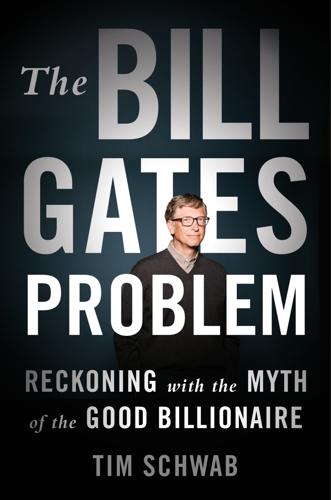
The Bill Gates Problem: Reckoning With the Myth of the Good Billionaire
by
Tim Schwab
Published 13 Nov 2023
Giffels was unaware that the IHME had a controversial reputation, telling me, “I’ve not heard of any [ethical concerns]. And I would have heard of them if there were any.” As he described it, the Gates Foundation does little more than write checks. “We would not consider the IHME to be an institute that was, you know, founded by the Gates Foundation. The Gates Foundation has provided a lot of financial support to the IHME—that’s at the IHME’s request. They [IHME] come up with individual projects, research questions they want to have answered and so on, and then they propose to the Gates Foundation—that the Gates Foundation provide funding for those things, as designed by the IHME. And then Gates either says yes or no,” Giffels told me.
…
“what motivates these people”: “The Gates Foundation: Giving Away a Fortune,” 2:30. poor villagers in India: “The Gates Foundation: Giving Away a Fortune,” 3:25. Traveling to the Indian countryside: “The Gates Foundation: Giving Away a Fortune,” 0:55. “she’d have eight children”: “Extra: Gates on Population Rates,” from “The Gates Foundation: Giving Away a Fortune,” https://web.archive.org/web/20200531121459/https://www.youtube.com/watch?v=7_xEn5mudP8. “survive into adulthood”: Note: Some users of contraceptives do not identify as women, but the Gates Foundation appears to focus its family planning efforts narrowly on women—which is why this chapter follows this focus.
…
In 2016, Pfizer acquired Anacor for $5 billion, and patent records show a subsequent transfer of several batches of patents to the foundation. “Pfizer transferred patent rights for select assets to the Gates Foundation pursuant to a 2013 agreement Anacor had with the Gates Foundation,” Pfizer told me by email. “As these assets were no longer under development at Pfizer, the Gates Foundation had an opportunity to take ownership and they elected to do so.” The foundation’s acquisition of patents speaks to only one mechanism Gates uses to access intellectual property. It’s important to remember that the Gates Foundation’s global access agreements are normally directed at granting the foundation the ability to “license” the products and technology of its charitable partners, not to take exclusive ownership of their intellectual property and patents.

No Such Thing as a Free Gift: The Gates Foundation and the Price of Philanthropy
by
Linsey McGoey
Published 14 Apr 2015
From 2004 to 2008, PEPFAR alone spent over $18.1 billion on global HIV/AIDS programmes – more than the Gates Foundation’s total spend on global health to date. In recent years, the Gates Foundation has spent more annually on global health than individual nations such as Canada and Germany, but less than the UK and US. In 2012, Canada contributed approximately $379 million to overseas health programmes. Germany spent $307 million on health aid. The UK contributed $1.3 billion – a rise of 2.3 per cent over the earlier year. The Gates Foundation, in comparison, spent $899 million on global health in 2012. US spending amounted to more than the Gates Foundation, Canada, Germany, and the UK combined – its outlay on global health aid in 2012 was $7 billion.5 Given that the Gates Foundation spends less annually on global health than many rich nations, why is Bill Gates a regular presence at summits such as the G20 in 2011?
…
I examine the remarkable way that the Gates Foundation has transformed US public education in little more than a decade. I look at the foundation’s role in global agriculture, where the effort to introduce Monsanto seeds and fertilizers to African markets is fuelling protest from African citizens and elected officials. Why the focus on Gates, over, say, George Soros? Or the Koch brothers? Or Carlos Slim? The answer is simple: there’s a need for it. Most foundations with influence on a par with the Gates Foundation have received considerable scrutiny from academics and journalists. And yet the Gates Foundation – indisputably the most influential private foundation in the world today – hasn’t received much critical attention.
…
What’s new today is that as well as benefiting from the government’s largesse, for-profit organizations are increasingly privy to generous gifts from private philanthropists such as the Gates Foundation. The Gates Foundation frequently offers grants to for-profit companies such as, to name just three recent beneficiaries, Vodacom, Ogilvy, and ABC News (which is owned by Disney and which pays many of its news staff seven- and eight-figure salaries). Charity law in the US does not prohibit direct grants from a private philanthropist to for-profit companies, but a number of provisions must be met in order for a foundation to receive tax relief for the donation. A foundation such as the Gates Foundation must, for example, demonstrate that a grant is used solely for charitable purposes.
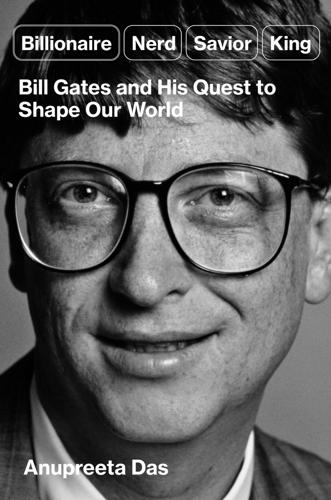
Billionaire, Nerd, Savior, King: Bill Gates and His Quest to Shape Our World
by
Anupreeta Das
Published 12 Aug 2024
His three children would be the co-trustees, and they would have a decade after their father’s death to disburse those funds to charity. There was no mention of the Gates Foundation. Buffett’s children are unanimous that none of the remaining shares will go to the Gates Foundation, according to people aware of their thinking. Always deliberate with his language, Buffett emphasized the word “lifetime” to avoid any miscommunication or confusion about which philanthropies stood to get his money, partly because there was a longstanding assumption within the Gates Foundation that it would always get Buffett’s money, three of the people said. In a footnote to its combined financial statements for 2022 and 2021 that was released in May 2023, the Gates Foundation Trust, which manages the endowment for the foundation, noted for the first time that the Buffett money would no longer come in after his death.
…
And although it is a low-level hum, the way the Gates Foundation casts its own work irks some critics. Often, the foundation will describe its work in terms of “lives saved” rather than “deaths prevented.” The latter term, which is drier and more technical, is often used by multilateral agencies. It might be a matter of semantics, but the Gates Foundation’s terminology plays into the notion that it has a superior mission, a loftier goal than others working in the field. When is a life saved, after all? At the same time, defenders of the Gates Foundation point out that the data alone is evidence that its style of philanthropy works.
…
Vandana Shiva, “Bill Gates’ Global Agenda and How We Can Resist His War on Life,” Counterpunch, September 24, 2020. 23. Peter Buffett, “The Charitable-Industrial Complex,” The New York Times, July 26, 2013. 24. Alex Friedman and Julie Sunderland, “How to Fix the Gates Foundation,” Project Syndicate, May 28, 2021. 25. Transcript of interview with Mark Suzman, “Reflecting on the Evolution of the Gates Foundation: A Q&A with Mark Suzman,” February 4, 2022. 26. Sabah Hamid, “Why I Resigned from the Gates Foundation,” The New York Times, September 26, 2019. 27. “All Sources of Funding from Private Funders to All Locations in India, All Years,” Candid. 28. Narendra Modi (website), “PM Modi’s Candid Conversation with Bill Gates,” press release, March 29, 2024. 29.
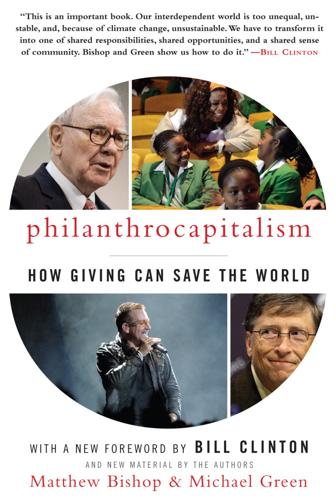
Philanthrocapitalism
by
Matthew Bishop
,
Michael Green
and
Bill Clinton
Published 29 Sep 2008
And despite some disappointments, the overall picture was encouraging. At the small schools the Gates Foundation has funded, the graduation rate has risen to 73 percent, from between 31 to 51 percent in the schools they replaced. In New York, less than 40 percent of students in grades three to eight (ages eight to fourteen) were reading and doing math at their grade level in 2002. By 2007, 65 percent were at their grade levels in math and more than 50 percent were in reading. Graduation rates were at their highest in decades. But even this does not satisfy those at the Gates Foundation. Despite the progress in New York, so much more is needed.
…
By 2007, forty-eight out of fifty states had committed in principle to common standards, and the foundation was focusing increasingly on getting them to translate this commitment into policy. In 2007, the Gates Foundation, the Broad Foundation and Rockefeller Philanthropy Advisors, a consultancy, launched the campaign Ed in ’08, run by former Colorado governor Roy Romer, to put nationwide education reform at the heart of the 2008 presidential election. This built on earlier advocacy work, in which the Gates Foundation has worked with Oprah Winfrey. On one Oprah show, Winfrey swapped pupils from a poorly performing inner-city school in Chicago and a nice suburban school.
…
He will have to split the money among lots of organizations. How many people is he going to need to do it?” The Gates Foundation is quadrupling its staff, which brings obvious risks of a loss of focus and an increase in bureaucracy. Gates managed a larger and faster-growing workforce at Microsoft, but maintaining discipline and focus is far harder in a foundation than in a business, where the need to make a profit tends to concentrate minds on the task at hand. Recruiting staff with the right skills is also trickier than in business because of the Gates Foundation’s unique position straddling the public and private sectors. (Indeed, questions were raised about the foundation’s due diligence process after successive heads of its Global Health program later came under scrutiny in Congress over allegations of misconduct in their previous jobs.)

The Key Man: The True Story of How the Global Elite Was Duped by a Capitalist Fairy Tale
by
Simon Clark
and
Will Louch
Published 14 Jul 2021
The opportunity for Philips and Medtronic was obvious. By investing alongside the Gates Foundation in the fund, they’d increase their chances of selling their medical devices to the hospitals and clinics that Arif planned to buy and build. The fund would give them a foothold in fast-growing markets outside North America and Europe, where there was huge demand for affordable, good-quality care. As Abraaj’s finances became increasingly strained in late 2013, Arif was ready to unveil more details about his plans for the healthcare fund. He invited a small group of investors including Julie Sunderland from the Gates Foundation to spend a couple of days at his country house near Oxford.
…
In a meeting with CDC executives at his office, Arif was stressed and emotional as he tried to assure his investors that he had done nothing wrong. CDC executives were deeply troubled by the turn of events because they had so much at stake, with investments in many Abraaj funds, whereas the Gates Foundation had only invested in two funds. If the House of Abraaj collapsed it was going to be an even bigger problem for CDC than for the Gates Foundation. The news soon reached the Washington State Investment Board in Olympia, 7,400 miles to the west of Dubai. David Nierenberg, a director of the Washington State pension fund, was profoundly disturbed by what he read. The fund managed more than $130 billion on behalf of teachers, police officers, judges, and firefighters.
…
When China’s economic expansion breathed new life into countries along the ancient Silk Road trading routes of Asia, Arif guided Western executives to business opportunities in cities they struggled to find on a map. Microsoft’s founder Bill Gates helped Arif set up a $1 billion fund to improve healthcare in poor countries, and the World Bank and the American, British, and French governments invested in this pioneering fund alongside the Gates Foundation. Arif won much admiration during his career. A committee of Nobel Prize laureates selected him for an Oslo Business for Peace Award. American academics predicted he might become a brilliant prime minister of Pakistan by 2020 and lead his troubled homeland to prosperity. “As a charismatic, self-made millionaire and one of the most successful emerging market investors, he was well connected,” the academics wrote in 2011.

How to Prevent the Next Pandemic
by
Bill Gates
Published 2 May 2022
We even did a few interviews together. It was an honor to sit next to him (virtually, of course). One side effect of speaking out, though, is that it has provoked more of the criticisms of the Gates Foundation’s work that I’ve been hearing for years. The most thoughtful version goes like this: Bill Gates is an unelected billionaire—who is he to set the agenda on health or anything else? Three corollaries of this criticism are that the Gates Foundation has too much influence, that I have too much faith in the private sector as an engine of change, and that I’m a technophile who thinks new inventions will solve all our problems.
…
CONTENTS Introduction 1 Learn from COVID 2 Create a pandemic prevention team 3 Get better at detecting outbreaks early 4 Help people protect themselves right away 5 Find new treatments fast 6 Get ready to make vaccines 7 Practice, practice, practice 8 Close the health gap between rich and poor countries 9 Make—and fund—a plan for preventing pandemics Afterword: How COVID changed the course of our digital future Glossary Acknowledgments Notes Index INTRODUCTION I was having dinner on a Friday night in mid-February 2020 when I realized that COVID-19 would become a global disaster. For several weeks, I had been talking with experts at the Gates Foundation about a new respiratory disease that was circulating in China and had just begun to spread elsewhere. We’re lucky to have a team of world-class people with decades of experience in tracking, treating, and preventing infectious diseases, and they were following COVID-19 closely. The virus had begun to emerge in Africa, and based on the foundation’s early assessment and requests from African governments, we had made some grants to help keep it from spreading further and to help countries prepare in case it took off.
…
And even if there had been such a team, there was no plan in place to move them to where they needed to be. In other words, the problem was not that there was some system in place that didn’t work well enough. The problem was that there was hardly any system at all. I still didn’t think it made sense for the Gates Foundation to make this one of its top priorities. After all, we focus on areas where the markets fail to solve big problems, and I thought that the governments of rich countries would get in gear after the Ebola scare, if they understood what was at stake. In 2015, I published a paper in The New England Journal of Medicine, pointing out how unprepared the world was and laying out what it would take to get ready.
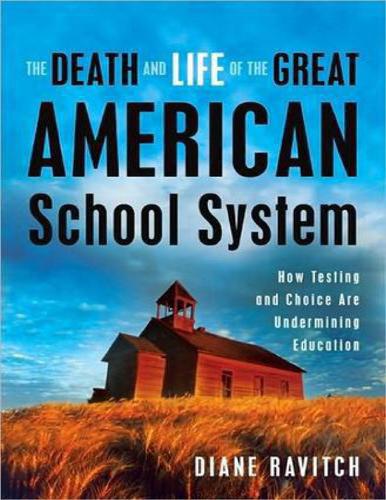
The death and life of the great American school system: how testing and choice are undermining education
by
Diane Ravitch
Published 2 Mar 2010
Gates Foundation, created in 1994, and some smaller Gates-family foundations.) Its assets of some $30 billion make it the largest foundation in the nation, if not the universe, and the pledge of another $30 billion or so to the Gates Foundation by one of its trustees, the famed investor Warren Buffett, in 2006 ensured its future dominance of the world of philanthropy (these values were depressed by market turbulence in 2008-2009, but the Gates Foundation remains the largest in the nation). The Gates Foundation has laudably addressed some of the biggest global problems, such as public health and poverty. It has committed its vast resources to eradicating malaria in poor countries, noting that 2,000 children in Africa die every day from the disease.
…
It said that the reforms were implemented hastily, with inadequate planning and involvement of those who were expected to carry it out. The Gates Foundation’s insistence that the three new schools be autonomous caused conflict and competition for resources among the schools, when collaboration was needed.16 Even more embarrassing to the Gates Foundation was the dissension in its own backyard at Mountlake Terrace High School, a suburban school of 1,800 students a few miles outside Seattle, not far from the foundation’s headquarters. The school had a dropout rate of one-third and looked for ways to improve. In 2000, the Gates Foundation offered the school a gift of $833,000 to convert itself into small autonomous schools; 83 percent of the faculty voted to accept the grant.
…
. ($37.62 million), the College Board in New York City ($30 million), the Chicago Public Schools ($28 million), Alliance for Education in Seattle ($26 million), and the Bay Area Coalition for Equitable Schools in Oakland ($26 million).28 The only dissident voice that Robelen cited in his article was Brita Butler-Wall, president of the Seattle school board, which had previously received $26 million from the Gates Foundation. She said, “I don’t understand if the Gates Foundation sees itself as trying to support districts or lead districts. No one was elected by the Gates Foundation to run schools.” Others quoted in the article quickly rebutted Butler-Wall; an education expert praised the foundation for doing exactly the right things, and my friend Chester E. Finn Jr., who heads the Thomas B.

The New Prophets of Capital
by
Nicole Aschoff
Published 10 Mar 2015
See Kathi Weeks in The Problem with Work on the power of the demand. 4 The Gates Foundation and the Rise of Philanthrocapitalism “Never doubt that a small group of thoughtful, committed citizens can change the world. Indeed, it is the only thing that ever has.” Cultural anthropologist Margaret Mead may or may not have said this, but it is Melinda Gates’s favorite quote, and it aptly sums up the philosophy of the Bill and Melinda Gates Foundation. The Gateses are changing the world. Since its founding in 1997, the Gates Foundation has transformed the medical and research fields for diseases like malaria and pneumonia and is at the center of an education reform movement in the United States.
…
Their deep pockets give them open access to the corridors of power, and they are completely unaccountable for any negative outcomes that may occur as a result of their programs. This may seem like an extreme indictment. After all, polio vaccines and bednets in malaria-ridden places are good things, as is challenging Malthusian narratives of population growth and promoting contraception, which the Gates Foundation also does. But the Gates Foundation does whatever it wants. The Alliance for a Green Revolution in Africa (AGRA), a Gates/Rockefeller joint project that started in 2006, is one such example. The foundation contends that since the vast majority of poor people in African countries like Tanzania, Mozambique, Mali, and Ghana are farmers, improving the productivity and yields of farmers will lay the foundation for more sustained economic growth and pull people out of poverty.
…
Wall Street Journal, July 23, 2011. 24Jim Horn and Ken Libby, “The Giving Business: Venture Philanthropy and the NewSchools Venture Fund,” in Philip E. Kovacs, ed., The Gates Foundation and the Future of US “Public” Schools, New York: Routledge, 2011, pp. 172–3. 25Diane Ravitch, Reign of Error: The Hoax ofthe Privatization Movement and the Danger to America’s Public Schools, New York: Knopf, 2013, pp. 16–17. Ravitch is an expert on public education and a fierce advocate for students. In this chapter’s discussion of education I draw heavily on her work and encourage readers to visit her blog, dianeravitch.net. 26Ravitch, Reign of Error; Bill Gates, TED Talk. 27Kovacs, The Gates Foundation and the Future of US “Public” Schools, pp. 172–3; Riley, “Was the $5 Billion Worth It?”

Small Change: Why Business Won't Save the World
by
Michael Edwards
Published 4 Jan 2010
For many observers, providing these kinds of help is the natural territory of philanthrocapitalism, and the most exciting examples are the huge investments in global health, agriculture, and microcredit that the Gates Foundation is making, along with the Clinton Global Initiative and many other organizations. Given that someone dies from malaria every thirty seconds and that treated bed nets can be produced and distributed at very low cost, these investments are extremely important, and there is every reason to think that business and the market can help bring them to fruition. Even so, the latest guidelines from the World Health Organization missing evidence 37 recommend free distribution to ensure that they get to everyone who needs them. The Gates Foundation is also investing in vaccines against the malaria parasite, along with similar efforts to defeat the scourge of HIV/AIDS, hookworm, leishmaniasis, and sleeping sickness.
…
In Asia alone, “more than 3.5 million people will gain greater access to health services, an estimated 715,000 children will benefit from better education opportunities, over 260,000 adults will learn new job skills, over 250,000 girls and women will be empowered with better opportunities for sustainable livelihoods, nearly 24,000 hectares of forest land will be protected by empowering local residents to manage their own natural resources, the equivalent of more than 40,000 tons of CO2 emissions will be cut, and over 700,000 people will better learn to cope with environmental stress and natural disasters.”12 These statistics, taken from the CGI Web site, which acts as a clearinghouse for many business-savvy philanthropists and social entrepreneurs (defined in chapter 2), say little about the quality and sustainability of the improvements that are claimed, but they are undeniably impressive. There is justifiable excitement about the possibilities for progress in global health, agriculture, and access to microcredit among the poor that have been stimulated by investments from CGI members, the Gates Foundation, and others. This kind of work — using business and the market to get socially and environmentally useful goods and services to more poor people — has become the largest and most visible project of the philanthrocapitalists over the last five years. As Pierre Omidyar, one of the founders of eBay, puts it, you can begin by investing $60 billion in the world’s poorest people “and then you’re done!”
…
And, so far at least, there aren’t many philanthrocapitalists who are prepared to invest in the challenges of long-term institution building, the deepening of democracy, or the development of a different form of market economy in which inequality is systematically attacked. In most of the literature from philanthrocapitalists, the goal is saving lives, or promoting access for lower-income groups to goods and services that are productive and beneficial. “The Gates Foundation is seen as a venture capitalist,” says Erik Iverson, the foundation’s associate general counsel. “In return, what we want is lives saved.”14 Capitalism is philanthropic, says Matthew Bishop, because “sooner or later everyone benefits through new products, higher quality and lower prices.”15 As Jacqueline Novogratz concludes, “We should see every poor person on the planet as a potential customer”16 — not exactly an inspiring vision to get you out of bed, but entirely logical for business.

Class Warfare: Inside the Fight to Fix America's Schools
by
Steven Brill
Published 15 Aug 2011
This was exactly the position the Democrats for Education Reform transition memo had recommended Gordon get. Meantime, Gordon had been working on an eerily similar project. He’d been helping with the Gates Foundation’s teacher effectiveness contest, which was about to point the way for much of what Schnur was being asked to come up with using the federal purse. The Chosen Four November 19, 2008, Seattle On November 19, 2008, Jean Clements and Hillsborough County officially entered Bill Gates’s orbit, when the Gates Foundation announced that the Hillsborough school system, which is in and around Tampa, had won an “intensive partnership” grant—for $100 million.
…
• • • In February 2008, someone at the AFT in Washington tipped Clements off that the Gates Foundation, aware of her union’s history of collaboration with the school district, was exploring the possibility of including Hillsborough County in some kind of grant. (Clements’s union—the Hillsborough Classroom Teachers Association—is part of the Florida Educational Association, which is the product of a merger in Florida between locals affiliated with the NEA and the AFT.) She hadn’t heard anything more about the contest until April, when district superintendent MaryEllen Elia, who has a close working relationship with Clements, called to say that the Gates Foundation was considering them and forty or fifty other districts around the country as possible recipients of competitive grants.
…
For example, one was a school focused on music and the arts, another on careers in technology. Bersin reported to Melinda Gates that the experiment seemed to be working. The students seemed much more enthusiastic about school, and graduation rates had increased. Melinda was impressed enough that the Gates Foundation staff began planning to direct more investments at the small-school approach. Klein also had been impressed by Bersin’s experiment. Beginning almost from when he took the job, he had started working with several non-profit education reform groups in New York that had already taken over a few large schools and divided them up this way in the 1990s.

How to Run the World: Charting a Course to the Next Renaissance
by
Parag Khanna
Published 11 Jan 2011
It has raised more than $10 billion to date to sponsor one million–plus antiretroviral HIV/AIDS treatments and two million tuberculosis treatments, distribute eighteen million insecticide-treated bed nets and twenty-three million anti-malarial medications, and train four million people in health service delivery. The Gates Foundation has also pioneered new models. It not only funded the highly successful Global Alliance for Vaccines and Immunization a decade ago, but more recently founded the Institute for OneWorld Health, the first nonprofit pharmaceutical company devoted to health and vaccine research for poor people, and has spent more in the past decade on neglected-disease research than all the world’s governments put together. Some believe that direct interventions like those of the Gates Foundation don’t add up to systemic transformation, but is there really another way to achieve the latter without the former?
…
Some believe that direct interventions like those of the Gates Foundation don’t add up to systemic transformation, but is there really another way to achieve the latter without the former? The Gates Foundation has such a staggering budget—$3 billion per year and $67 billion in total assets—that its staff members act like private health diplomats, engaging directly with national ministers of health, commerce, and foreign affairs, while also funding and running local projects within countries worldwide. Botswana was a pioneering case. Thanks to a partnership between Gates and pharmaceutical giant Merck, the country’s population was saved from near extinction through the rapid deployment of more than eighty thousand antiretroviral treatments. Today the Gates Foundation spends over 80 percent of its budget on public-private partnerships.
…
Whereas the postwar generation found public service noble, and baby boomers were convinced by Reagan that government is the source of problems, Generation Y’s leaders will likely have five or six jobs across public, private, and nonprofit sectors over the course of their careers, and thus be pragmatic rather than ideological about the role of the state. They see problems functionally, not nationally, and see diplomacy not as vertical and hierarchical, but rather as a distributed network: All are connected, and there is no center. They take for granted that working for corporations such as Google, or NGOs such as Oxfam and the Gates Foundation, means participating in political agendas that operate without official approval, yet the work is as diplomatic as that of a foreign ministry. They are the ones who will reshape governments, corporations, and other pillars of the establishment from the inside out. Generation Y will own mega-diplomacy.
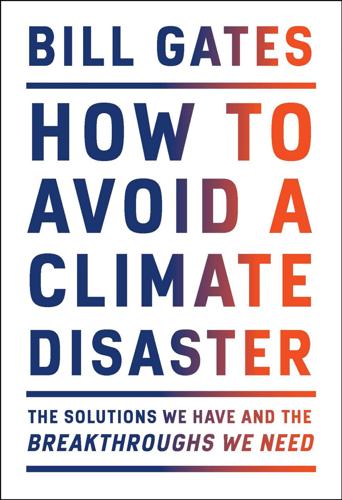
How to Avoid a Climate Disaster: The Solutions We Have and the Breakthroughs We Need
by
Bill Gates
Published 16 Feb 2021
This book is about what it will take and why I think we can do it. * * * — Two decades ago, I would never have predicted that one day I would be talking in public about climate change, much less writing a book about it. My background is in software, not climate science, and these days my full-time job is working with my wife, Melinda, at the Gates Foundation, where we are super-focused on global health, development, and U.S. education. I came to focus on climate change in an indirect way—through the problem of energy poverty. In the early 2000s, when our foundation was just starting out, I began traveling to low-income countries in sub-Saharan Africa and South Asia so I could learn more about child mortality, HIV, and the other big problems we were working on.
…
I invested in some clean energy companies, and I put several hundred million dollars into starting a company to design a next-generation nuclear plant that would generate clean electricity and very little nuclear waste. I gave a TED talk called “Innovating to Zero!” But mostly, I kept my attention on the Gates Foundation’s work. Then, in the spring of 2015, I decided that I needed to do more and speak out more. I had been seeing news reports about college students around the United States who were holding sit-ins to demand that their schools’ endowments divest from fossil fuels. As part of that movement, the British newspaper The Guardian launched a campaign calling on our foundation to sell off the small fraction of its endowment that was invested in fossil-fuel companies.
…
But I have come to realize that there are other reasons for me not to own the stocks of fossil-fuel companies—namely, I don’t want to profit if their stock prices go up because we don’t develop zero-carbon alternatives. I’d feel bad if I benefited from a delay in getting to zero. So in 2019, I divested all my direct holdings in oil and gas companies, as did the trust that manages the Gates Foundation’s endowment. (I hadn’t had money in coal companies in several years.) This is a personal choice, one that I’m fortunate to be able to make. But I’m well aware that it won’t have a real impact on lowering emissions. Getting to zero requires a much broader approach: driving wholesale change using all the tools at our disposal, including government policies, current technology, new inventions, and the ability of private markets to deliver products to huge numbers of people.

The Cult of Smart: How Our Broken Education System Perpetuates Social Injustice
by
Fredrik Deboer
Published 3 Aug 2020
Greene, head of the Department of Education Reform at the University of Arkansas, says the Gates Foundation’s overall dominance in education policy has subtly muffled dissent. “Really rich guys can come up with ideas that they think are great, but there is a danger that everyone will tell them they’re great, even if they’re not,” Greene said. That problem would not be nearly as acute if not for the size and power of the Gates Foundation. That’s true regardless of your interpretation of the benevolent intentions of that particular organization. Above a certain size, funders like the Gates Foundation become a problem even if the people running them have all the best intentions.
…
Given the steady erosion of governmental support for academic research of all kinds, foundations and think tanks have become even more important as a source of research dollars. But there’s a certain size threshold beyond which that kind of influence can become something pernicious. With its incredible size, my fear is that the Gates Foundation has long since crossed that threshold. Consider reporting by the Washington Post’s Lyndsey Layton on the way in which the Gates Foundation was able, with disturbing ease, to implement the Common Core throughout much of the country. Two points should be clear from her reporting. First, the evidence to support the claim that the Common Core will result in learning gains is thin on the ground.
…
And, of course, even when we close the racial achievement gap, there will still be a talent gap, students of all races who score significantly below their peers. What happens to those students, black and white, male and female, who have lost the genetic lottery? It’s a question liberalism hasn’t come close to answering. Enforcing Consensus: The Example of the Gates Foundation There are many reasons that the simple fact of inherent talent differences so often goes unspoken in education policy circles. As I’ve suggested, both major ideological tendencies in American life have reason to avoid the topic. But there are basic dynamics of the policy funding mechanism that contribute to this problem, and there’s no better example than the Bill and Melinda Gates Foundation.
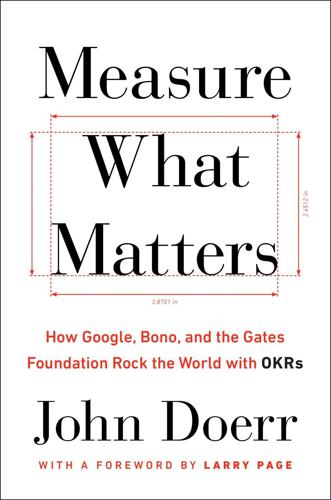
Measure What Matters: How Google, Bono, and the Gates Foundation Rock the World With OKRs
by
John Doerr
Published 23 Apr 2018
Thank you for buying an authorized edition of this book and for complying with copyright laws by not reproducing, scanning, or distributing any part of it in any form without permission. You are supporting writers and allowing Penguin to continue to publish books for every reader. Library of Congress Cataloging-in-Publication Data Names: Doerr, John E., author. Title: Measure what matters : how Google, Bono, and the Gates Foundation rock the world with OKRs / John Doerr. Description: New York : Portfolio/Penguin, [2018] | Includes bibliographical references. Identifiers: LCCN 2018002727| ISBN 9780525536222 (hardcover) | ISBN 9780525536239 (epub) Subjects: LCSH: Business planning. | Performance. | Goal (Psychology) | Organizational effectiveness.
…
Version_2 For Ann, Mary, and Esther and the wonder of their unconditional love CONTENTS PRAISE FOR MEASURE WHAT MATTERS TITLE PAGE COPYRIGHT DEDICATION FOREWORD Larry Page, Alphabet CEO and Google Cofounder PART ONE: OKRs in Action 1 Google, Meet OKRs How OKRs came to Google, and the superpowers they convey. 2 The Father of OKRs Andy Grove creates and inculcates a new way of structured goal setting. 3 Operation Crush: An Intel Story How OKRs won the microprocessor wars. 4 Superpower #1: Focus and Commit to Priorities OKRs help us choose what matters most. 5 Focus: The Remind Story Brett Kopf used OKRs to overcome attention deficit disorder. 6 Commit: The Nuna Story Jini Kim’s personal commitment to transform health care. 7 Superpower #2: Align and Connect for Teamwork Public, transparent OKRs spark and strengthen collaboration. 8 Align: The MyFitnessPal Story Alignment via OKRs is more challenging—and rewarding—than Mike Lee anticipated. 9 Connect: The Intuit Story Atticus Tysen uses OKR transparency to fortify a software pioneer’s open culture. 10 Superpower #3: Track for Accountability OKRs help us monitor progress and course-correct. 11 Track: The Gates Foundation Story A $20 billion start-up wields OKRs to fight devastating diseases. 12 Superpower #4: Stretch for Amazing OKRs empower us to achieve the seemingly impossible. 13 Stretch: The Google Chrome Story CEO Sundar Pichai uses OKRs to build the world’s leading web browser. 14 Stretch: The YouTube Story CEO Susan Wojcicki and an audacious billion-hour goal.
…
An unfinished objective might be rolled over to the next quarter, with a fresh set of key results—or perhaps its moment has passed, and it is appropriately dropped. Either way, sound management judgment comes first. And one more thing. After thoroughly appraising your work and owning up to any shortfalls, take a breath to savor your progress. Throw a party with the team to celebrate your growing OKR superpowers. You’ve earned it. 11 Track: The Gates Foundation Story Bill Gates Cochairman Patty Stonesifer Former CEO In 2000, the newly hatched Bill & Melinda Gates Foundation became something the world had never seen: a $20 billion start-up. Though Bill Gates had recently stepped down as CEO of Microsoft, he was still the company’s chairman and chief product strategist.

Owning the Sun
by
Alexander Zaitchik
Published 7 Jan 2022
“It was very focused, and just when it started to have effect, here’s this new version of the industry narrative emerging from Gates and Pharma. It was still about how anything that interferes with industry profits will undermine research and development, but with a new dynamic. The same op-eds and talking points weren’t coming just from industry, but also from philanthropy in the form of the Gates Foundation.” The rise of the Gates Foundation and Gavi, the Vaccine Alliance, quickly changed the perception of the conflict and its possible solutions, says Martin, the Médecins Sans Frontières policy adviser. “When drug companies could just give money to Gates’s institutions, it diffused the real issue of decolonizing global health,” he says.
…
On the misalignment of drug industry research incentives and pandemic threats, and the lessons of pre-COVID-19 near-miss pandemics, see Mike Davis, The Monster Enters: COVID-19 and the Plagues of Capitalism (2020). On the role of Bill Gates and the larger political questions raised by corporate megaphilanthropy, see Linsey McGoey, No Such Thing as a Free Gift: The Gates Foundation and the Price of Philanthropy (2015), Michael Barker’s The Givers That Take (2022), and Tim Schwab’s Nation magazine investigations into the Gates Foundation. On the WTO waiver debate and practical issues related to the obstacles posed by intellectual property, see the original proposals submitted by South Africa, India et. al., “Waiver from Certain Provisions of the TRIPS Agreement” (2020).
…
This initiative, they said, featured the partnership sought by the Pool, bringing together industry, governments, and major foundations, notably the Bill and Melinda Gates Foundation and its subsidiaries, Gavi, the Vaccine Alliance, and the Coalition for Epidemic Preparedness Innovations. Each executive in turn invoked support for the Accelerator as proof of their humanity and dedication to ending the pandemic as quickly as possible. The Accelerator’s existence, stated Cueni, obviated the need for additional efforts and initiatives. “The Gates Foundation plays a crucial role here,” he said. “We already have platforms, the industry is already doing all the right things.” As the seventy-five-minute event progressed, the industry’s shared Accelerator script began to sound less like a series of talking points than a violent and uncontrollable tic.

Fortunes of Change: The Rise of the Liberal Rich and the Remaking of America
by
David Callahan
Published 9 Aug 2010
Program included a special initiatives fund directed by Hilary Pennington, a longtime liberal advocate who came to the Gates Foundation fresh from a stint as a fellow at the Center for American Progress. The foundation was clear that the U.S. Program’s mission included advocacy: “Calling attention to the problems in the United States that we focus on and motivating others to help solve them.” c07.indd 161 5/11/10 6:20:32 AM 162 fortunes of change It took decades for the Ford and Rockefeller fortunes to be put at the disposal of liberal think tanks and civil rights groups that openly criticized U.S. capitalism and the inequities it produced. The Gates Foundation embarked on such giving before Bill Gates had even retired from Microsoft.
…
In 2007 and 2008, the foundation gave money to a litany of liberal groups: $12 million to the Center for Budget and Policy Priorities; $2 million to CAP; $900,000 to PolicyLink; $1 million to the NAACP; $375,000 to the Mexican-American Legal Defense Fund; $370,000 to the Pride Foundation; and $400,000 to the Center for Law and Social Policy. (In 2008, the Gates Foundation also made a $600,000 grant to Demos, the liberal think tank where I work.) During this same period, the foundation made only two grants to conservative policy organizations: $400,000 each to the American Enterprise Institute and the Hudson Institute. The Gates Foundation also started to put money into advocacy work aimed at swaying U.S. policy overseas. It helped bring to scale a new policy center in Washington, the Center for U.S.
…
In 2001, Scott gave $10 million to start the Center for Global Development, a Washington-based think tank “dedicated to reducing global poverty and inequality and to making globalization work for the poor.” The Center quickly became the premier U.S. think tank working on development issues and landed big donations from the Gates Foundation, which gave the Center $10 million in 2006. “It wasn’t like getting a bolt from God,” Scott said of his philanthropic career. Rather, it was like any interest that grew rapidly. “The more you get into it, the more you get involved. It totally snowballed.” Scott read everything he could get his hands on and talked to everyone he could.
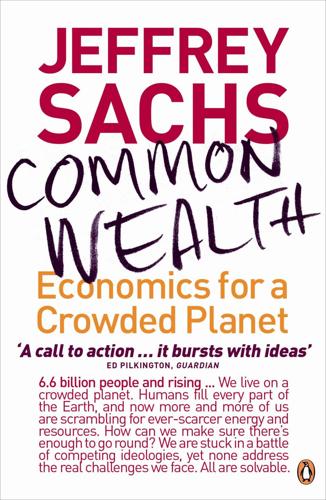
Common Wealth: Economics for a Crowded Planet
by
Jeffrey Sachs
Published 1 Jan 2008
This is the ideal role for fast-moving and creative private foundations, which can take risks with their own money in ways that public funding agencies find much harder to do. It was the role played by the Rockefeller Foundation in championing the Green Revolution in the twentieth century. It can be the role played by the Gates Foundation and other partners in the twenty-first century. Even with Bill Gates’s vast wealth, the foundation by itself can’t finance the scaling up of solutions at a global level. The Gates Foundation has been spending a bit more than $1 billion per year in recent years, and this will rise by $2 billion to $3 billion per year with the recent infusion of funds from Warren Buffett. Still, even with these vast sums, the global needs across poverty, disease, climate, energy systems, and population will be in the hundreds of billions of dollars per year, vastly beyond the means of even the largest private foundations.
…
The real work of great foundations lies elsewhere, in spearheading the search for solutions. This can come in the form of basic science, such as the Gates Foundation funding for vaccine and drug research and development. It can also come in the form of innovative delivery approaches, such as a Gates Foundation project to provide comprehensive malaria control in Zambia in order to learn about practical implementation strategies. Once the solutions are identified, however, then the larger-scale capacity of government-backed global funds would have to finance the scale-up of these solutions. If the Gates Foundation, with its financial weight, can promote new discoveries in science, technology, and implementation strategies for the poor, and can continue to inspire other philanthropic donors as it has done with Warren Buffett, the chances for the Gates Foundation to make world-changing contributions and then mobilize government funding to take its discoveries to scale are indeed very high.
…
In each area of concern, an international science committee should evaluate promising areas for R & D, and make recommendations on the allocation of research funds. Such R & D committees are needed for disease control, agriculture, climate science, sustainable energy, water-management technologies, and biodiversity monitoring and conservation. The Gates Foundation and the World Health Organization could take the lead on convening the panel on health issues. The Gates Foundation, the Rockefeller Foundation, and the Food and Agriculture Organization could take the lead on agriculture. The UN Environment Program and the UN Development Program could take the lead on water and biodiversity conservation. There is no single champion in any area.

All the Money in the World
by
Peter W. Bernstein
Published 17 Dec 2008
There the crowd stood witness as legendary investor Buffett signed over nearly 85 percent of his fortune—some $31 billion—to charity. The bulk, about 70 percent of his net worth, would go to the Gates Foundation, at a rate of about $1.6 billion a year;*27 the rest was earmarked for the individual foundations of Buffett family members.†28 What was behind Buffett’s change of heart? The simple fact that, while he had no interest in running a philanthropy, his good friend and bridge buddy Bill Gates (who ten days earlier had announced that he would leave daily management of Microsoft in 2008 to devote his time to the Gates Foundation) was the right man for the job. Entrusting his money to Gates3, said the plainspoken Buffett, was “a no-brainer.”
…
As a lengthy profile of the organization in The New Yorker observed, “The research programs of entire countries5 have been restored, and fields that have languished for years, like tropical medicine, have once again burst to life,” thanks largely to the Gates Foundation. * * * In the philanthropic universe, however, it was decidedly not just another day. Giving of this magnitude6, wrote Peter Singer, bioethics professor at Princeton University, in the New York Times, makes it clear that “the first decade of the twenty-first century is a new golden age of philanthropy.” Not only was Buffett’s bequest the single largest act of charitable giving ever in America, but it was also, as even cynics agree, a rare display of unadulterated generosity. By funneling his riches through the Gates Foundation, Buffett gave up a huge perk of charitable giving—the legacy of his name living on in perpetuity through his own foundation.
…
As Forbes noted in October 2006, after Murdoch’s acquisition of MySpace.com, “Time and again he’s confounded skeptics16 by making acquisitions and investments that at the time look extravagant and overly ambitious but go on to yield very impressive gains.” * * * Counting Bill Gates’s billions: It takes a continent The Microsoft billionaire has been on the 400 list for 21 years—debuting in 1986. At the height of the tech boom in 1999 and before he started giving some of his fortune to the Gates Foundation, he was worth $85 billion. Here’s how his wealth compares to the gross domestic product (GDP) of several African countries. * * * * * * The big three of the 400 When the Forbes list was first published, only 1% of the total wealth of the 400 was in the hands of Sam Walton ($690 million) and Warren Buffett ($250 million).
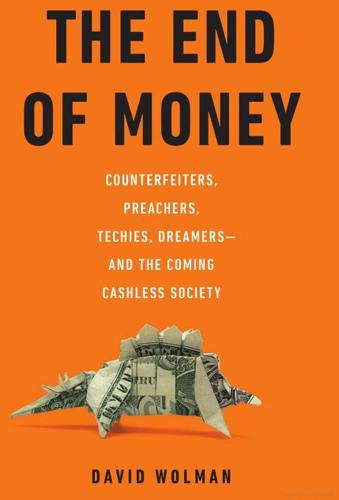
The End of Money: Counterfeiters, Preachers, Techies, Dreamers--And the Coming Cashless Society
by
David Wolman
Published 14 Feb 2012
Back in Seattle, Mas and I lunch at a café down the street from the Gates Foundation offices. When it’s time to settle up, Mas takes a $20 bill from his wallet. I give him a surprised look. “I don’t actually have a problem with cash,” he says, laughing. Advantages such as universal acceptability, anonymity, and simplicity, he says, are tough to beat. And he, like me, has the luxury of choice. Mas’s indictment of cash is really an indictment of its inconvertibility, and the damage that engenders. By encouraging technologies that open avenues to electronic money, the Gates Foundation and other aid groups, from the World Bank to Mercy Corp, hope to reduce cash dependence while expanding access to savings and financial stability.
…
Yet the technology powering this brief transaction is being heralded as one of the twenty-first century’s most promising weapons in the battle against poverty. For cash, it could prove to be the angel of death. UPHILL FROM SEATTLE’S Space Needle, Ignacio Mas has just finished a call in his glassy office at the headquarters of the Bill and Melinda Gates Foundation. In recent years, the Gates Foundation has committed tens of millions of dollars to support a kind of financial innovation that has nothing to do with Wall Street’s latest Byzantine products, and everything to do with the humble cellphone program Kumar used to deposit his 1,000 rupees. In November of 2010, Melinda Gates announced a $500 million commitment to further promote these kinds of advances in basic financial services, recognizing that merely having the means to sock money away empowers people, as she put it, “to use their own energy, their own talents to lift themselves out of poverty.”1 Mas is deputy director of the foundation’s Financial Services for the Poor program, and it’s his job “to teach the world that cash is the enemy of the poor.”
…
It just makes the connection between the accounts and, Sinha hopes, millions and millions of people. The money, meanwhile, rests with the bank, and is insured just like an old-school deposit. Caveat time. Many companies and nonprofits are trying to get financial services to the poor, and they don’t all rely on cellphones. People like the Gates Foundation’s Mas, digital-money man Dave Birch, and hundreds of experts believe that the phone is the answer, but that hardly makes it so. Other models use smartcards, for example, which you can think of as a hybrid driver’s license and bankcard equipped with a chip for storing data. All you need to do to conduct your banking at the local corner store is bring your smartcard, which allows you to do the same basic suite of transactions as Eko.

Windfall: The Booming Business of Global Warming
by
Mckenzie Funk
Published 22 Jan 2014
Rip Ballou of the Gates Foundation and formerly GSK and the vaccine’s champion for thirty years, “especially so when it comes to diseases transmitted by vectors.” In agriculture, the equivalent of the GSK partnership was the Gates Foundation’s collaboration with Monsanto—the emerging leader in the race for climate-ready crops and, like GSK, a publicly traded company that couldn’t otherwise justify products meant for people who couldn’t afford them. Monsanto has revenues of $11 billion a year, and its stock is held by everyone from Deutsche Bank’s climate funds to the Gates Foundation itself. It was a subcontractor for the Gates-funded African Agricultural Technology Foundation, which had received $40 million to develop drought-tolerant corn for five sub-Saharan countries.
…
Out of more than thirty-five hundred mosquito species, the second to have its genome decoded was Aedes aegypti. The first, in 2002, was Anopheles gambiae, one of sub-Saharan Africa’s deadliest carriers of malaria and an important target of the Gates Foundation. After a researcher discovered that Anopheles gambiae is attracted to foul odors, the world’s richest foundation once spent $775,000 to test traps that smelled like human feet and Limburger cheese. The Gates Foundation has notably spent not a penny on helping the world cut carbon emissions. “We believe the best way for the foundation to address climate change is to help poor farmers adapt,” read an overview of its agricultural strategy.
…
“The private market does a great job of innovating in many areas,” he wrote, “particularly for people who have money. The focus of Melinda’s and my foundation is to encourage innovation in the areas where there is less profit opportunity but where the impact for those in need is very high.” The Gates Foundation is so big that it can seem to single-handedly dictate global aid priorities, and two of its favorite causes are mosquito-borne illnesses and agriculture. In 2005, it gave a $19.7 million grant to a mosquito-modding consortium that included Oxitec and a number of public universities. (The money went toward open-source mosquito varieties, not OX513A.)

Just Giving: Why Philanthropy Is Failing Democracy and How It Can Do Better
by
Rob Reich
Published 20 Nov 2018
As of 2014 the number was nearly one hundred thousand, with total capitalization of more than $800 billion.¹⁰ What Carnegie and Rockefeller were to the early twentieth century, Gates and Buffett and their fellow Giving Pledge signatories are to the twenty-first century. The last decade of the twentieth century witnessed the creation of unprecedentedly large foundations like the Gates Foundation. The combined assets of the Gates Foundation and a separate Gates Trust, which holds donations from Bill and Melinda Gates and contributions from Warren Buffett, totaled more than $80 billion in 2016, placing the foundation at roughly sixty-fifth in the world on a list of total GDP, ahead of most countries in Africa.
…
Julian Wolpert’s extensive analysis of the redistributional effects of private foundations notes a host of other complex issues, including how to account for the time horizon of foundation activities, which may be directed at long-term rather than short-term change, and the scope of foundation activities, some of which are very local (community foundations) and others of which are global in reach (e.g., the Gates Foundation). The technical and conceptual issues in trying to measure redistribution notwithstanding, Wolpert concludes that foundations are at best “modestly redistributive,” as can be determined with available data.³² FIGURE 2.10. Distribution of Foundation Dollars by Type of Recipient Organization.
…
Second, citizens lose in democratic accountability, for the forgone funds are not accountable, or even traceable, in the way that direct government expenditures are. To give an obvious example, citizens can unelect their representatives if they are dissatisfied with the spending programs of the state; the Gates Foundation also has a domestic and global spending program, partly supported through tax subsidies, but its leaders and trustees cannot be unelected. Thus the success of the efficiency rationale depends on whether the benefits brought about by the subsidy exceed the costs of the lost tax revenue. Consistent with the Murphy and Nagel thesis, the subsidy is but a mechanism for realizing larger social aims.

The Tyranny of Experts: Economists, Dictators, and the Forgotten Rights of the Poor
by
William Easterly
Published 4 Mar 2014
THE TECHNOCRATIC ILLUSION The conventional approach to economic development, to making poor countries rich, is based on a technocratic illusion: the belief that poverty is a purely technical problem amenable to such technical solutions as fertilizers, antibiotics, or nutritional supplements. We see this in the Bank’s actions in Mubende; we will see the same belief prevalent amongst others who combat global poverty, such as the Gates Foundation, the United Nations, and US and UK aid agencies. The technocratic approach ignores what this book will establish as the real cause of poverty—the unchecked power of the state against poor people without rights. In Mubende, Uganda, for example, the techniques of improved forestry offered a solution to poverty.
…
The development community includes policy experts, public intellectuals, economists, and other social scientists. Its limits are defined as those who work for the aid agencies of rich-country governments, international aid agencies like the World Bank, think tanks like the Brookings Institution, and philanthropies like the Gates Foundation, or as consultants or advisers to any of the above. It does not include economics professors conducting purely academic research on development, unless those professors cross over into work for the kinds of agencies listed here. The idea of a consensus that remains stable over time and across groups is an oversimplification, just as the extremes in the debate were an oversimplification.
…
Chiang, Fong, and the American experts would wind up coming together on the ideas of authoritarian development in China. AMERICAN EXPERTS On a rainy February 22, 1925, in New York, a group of fifty-one men gathered at the Yale Club near Grand Central Station for the purpose of organizing a conference.13 Brought together by the Rockefeller Foundation—the equivalent then of what the Gates Foundation is to development today—the group comprised ten journalists, fifteen academics, nine officials (including one from the League of Nations), seven business-people, and seven religious representatives. The group included the editor of the New York Times and the president of Stanford University.
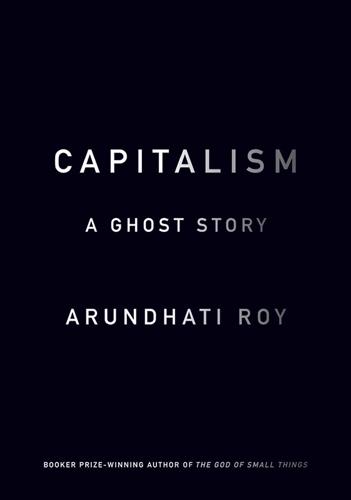
Capitalism: A Ghost Story
by
Arundhati Roy
Published 5 May 2014
One century after it began, corporate philanthropy is as much part of our lives as Coca-Cola. There are now millions of nonprofit organizations, many of them connected through a byzantine financial maze to the larger foundations. Between them, this “independent” sector has assets worth nearly $450 billion. The largest of them is the Gates Foundation with $21 billion, followed by the Lilly Endowment ($16 billion) and the Ford Foundation ($15 billion).53 As the IMF enforced structural adjustment and arm-twisted governments into cutting back on public spending on health, education, child care, development, the NGOs moved in.54 The Privatization of Everything has also meant the NGO-ization of Everything.
…
‘I believe the power to make money is a gift of God,’ Rockefeller once said. ‘It is my duty to make money and even more money and to use the money I make for the good of my fellow men.’” 34. Pablo Neruda, “Standard Oil Company,” in Canto General, trans. Jack Schmitt (Berkeley: University of California Press, 1991), 176. 35. For further analysis of the Gates Foundation’s involvement in privatizing education, coupled with drastic reductions in government spending, see Jeff Bale and Sara Knopp, “Obama’s Neoliberal Agenda for Public Education,” in Education and Capitalism: Struggles for Learning and Liberation (Chicago: Haymarket Books, 2012). 36. Joan Roelofs, “The Third Sector as a Protective Layer for Capitalism,” Monthly Review 47, no. 4 (September 1995): 16. 37.
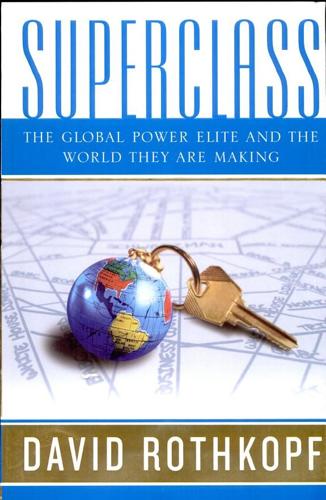
Superclass: The Global Power Elite and the World They Are Making
by
David Rothkopf
Published 18 Mar 2008
CGI had clearly tapped into what many perceived as a “hot” trend of the moment: philanthropy. Some $7 billion had been committed at the Clinton event, dedicated to specific projects addressing mainly global health, poverty alleviation, and education. Indeed, in the era of record gifts to philanthropy (such as Warren Buffett’s $31 billion provided to the Gates Foundation), one senses that a major issue global elites seek to discuss—or like to be seen discussing?—is their own generosity. The charity craze is a good thing. But why is it happening now? It could be related to the business cycle: Aging Internet and hedge fund millionaires and billionaires, for example, seek to be more generous in hopes of leaving a legacy.
…
All that said, many of these activities provide important value and their existence is far better than the void they fill. A considerable number are found in the medical field: the global public-private partnerships that form the core of more than half the activities of the World Health Organization, for example; or the Global Alliance for Vaccines and Immunization (GAVI), which is 75 percent financed by the Gates Foundation; or the TB Alliance, which also has both public and private finance. Another example is a recent initiative of the Aspen Institute, the Overseas Private Investment Corporation (OPIC, a U.S. government agency), and the Palestine Investment Fund to create a Middle East Investment Initiative—“an international collaboration of leaders from the Palestinian, American and European private and public sectors”—to help fund the creation of jobs for Palestinians.
…
Yet another illustration is a recent effort by the EU to develop greener aircraft, a 1.6-billion-euro project called Clean Sky that is half funded by governments. All of these particular programs certainly offer admirable goals, but with much of the funding coming from private rather than public sources, clearly the underwriters have influence, whether it is the Gates Foundation’s seat on the GAVI board or the aviation industry’s 800-million-euro stake in Clean Sky, thus shaping just how green the project may be, how fast it may develop, and where it will focus. Joseph Stiglitz, who was chief economist of the World Bank, observed to me that “we have this sovereignty problem.
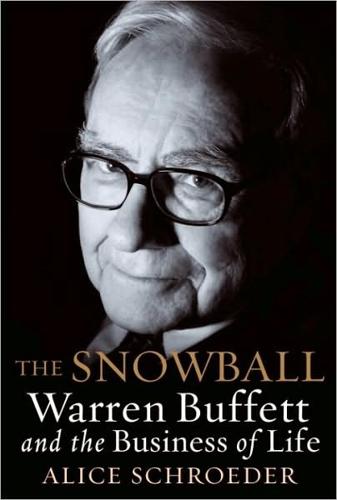
The Snowball: Warren Buffett and the Business of Life
by
Alice Schroeder
Published 1 Sep 2008
The periodontist had found some pin-dot-size spots on the floor of her mouth and referred her to a specialist. Two months had passed as Susie tried to work around the specialist’s schedule and her own complicated travel itinerary to arrange an appointment. Once the appointment was finally booked, she had almost canceled it in favor of a visit to the Gates Foundation. “No. No, no, no, no, no. You’re not canceling,” said Kathleen Cole. It was rare for Cole to contradict her friend and boss outright. But now she insisted, “You have to go.”2 At the appointment, Dr. Deborah Greenspan had felt around Susie’s neck and found swollen lymph nodes on one side.
…
But with only a couple of employees, the Buffett Foundation was woefully ill-equipped to ramp up fast enough to give away a billion dollars a year.5 Warren had been giving this problem a lot of thought, and it occurred to him that one way Susie could choose to deal with it was to turn some of the Buffett Foundation money over to the Gates Foundation. The Bill and Melinda Gates Foundation had grown since its establishment in 2000 to a multibillion-dollar philanthropy. Gates said that 4.2 billion people in the world, most of the earth’s population, made less than $2 a day. Yet each of their lives was worth as much as any American’s. These people lived in the here and now, not in some generation far in the future.
…
And if we gave some money to him, the last half of the money would be used as intelligently as the first half. There would be very little falloff in utility of the last dollar versus the first dollar. Giving money to other foundations, it’s just not what foundations like to do. But there’s nothing wrong with copying good people.” Coattailing by giving some of the money to the Gates Foundation while the Buffett Foundation was ramping up to give away its tens of billions might be completely logical. What wasn’t completely logical, given the current circumstances, was for Warren to assume that Susie would be the one making these decisions, rather than himself or his daughter—and to operate under this scenario without a backup plan.
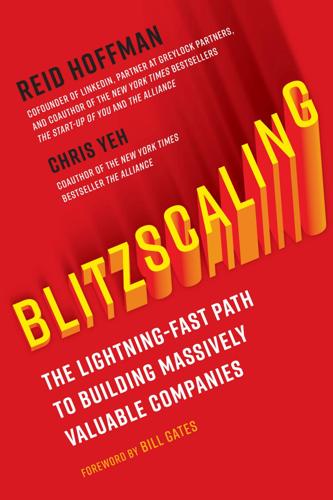
Blitzscaling: The Lightning-Fast Path to Building Massively Valuable Companies
by
Reid Hoffman
and
Chris Yeh
Published 14 Apr 2018
Aside from the growth factors and growth limiters, one other major potential difference is how nonprofits and impact organizations look at competition. In the business world (and certain nonbusiness organizations like political campaigns), competition—specifically, beating that competition—is one of the most important motivations for blitzscaling. In contrast, the Gates Foundation would welcome another major player that spent billions of dollars to try to “beat” the Gates Foundation to achieving the goal of malaria eradication. This may help explain why blitzscaling has been relatively less common in the world beyond business. However, given the scale of the challenges before us today, from climate change to poverty to an education system in need of reform, we believe that the time is ripe to consider how to apply scalable technology solutions to traditionally unscalable issues.
…
One of the main reasons that the Bill & Melinda Gates Foundation decided to tackle malaria prevention and treatment is the enormous size of the malaria “market.” In 2012, 207 million people suffered from the disease and 627,000 died from it, with 77 percent of those deaths affecting children under the age of five. Those figures include a 42 percent reduction in annual deaths from 2000 to 2012, thanks in part to the efforts of the Gates Foundation. That is a large market where the ability to blitzscale makes a huge impact. DISTRIBUTION Distribution is just as critical outside of the business context as it is for profit-seeking companies. No matter how potentially effective your “product”—whether that product is a social service, a political candidate, or anything else—is at improving the lives of those who adopt it, its impact is directly proportional to your ability to execute an effective distribution strategy.
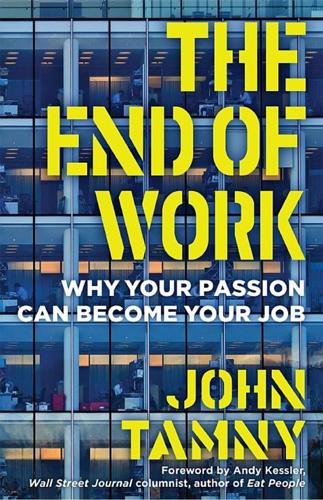
The End of Work: Why Your Passion Can Become Your Job
by
John Tamny
Published 6 May 2018
Gates—the world’s second richest man—told Fortune that 50 percent of one’s wealth is a “low bar” for giving, while Buffett—not far behind—has pledged to give away 99 percent of his wealth.6 Buffett has been a major donor to the Bill & Melinda Gates Foundation, which has pursued such lofty goals as eradicating global poverty and disease and empowering women to transform their lives. You can do that when wealth is abundant. The Gates Foundation employs 1,376 persons in its efforts to make the world a better place with an endowment of some $39 billion.7 And in time, the Gates Foundation will be dwarfed by other, bigger foundations. Indeed, in December 2015, Mark Zuckerberg, the founder of Facebook, and his wife, Priscilla Chan, pledged to give away 99 percent of their Facebook stock to charity. Chan Zuckerberg Science, an offshoot of the Chan Zuckerberg Initiative, LLC, already has $3 billion behind it and employs, the Wall Street Journal reports, “dozens of top scientists who think it is possible to cure, prevent or manage diseases by the end of the century.”8 It’s not crazy to speculate that Zuckerberg’s grandchildren might be born into a world no longer ravaged by cancer thanks to the generosity of their grandparents.
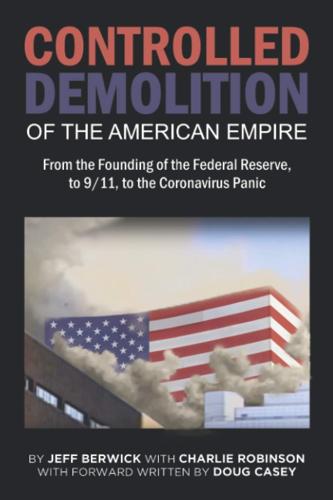
The Controlled Demolition of the American Empire
by
Jeff Berwick
and
Charlie Robinson
Published 14 Apr 2020
If education is the key to the future, then the future of the United States is bleak. The largest sponsor of the Common Core initiative was the Bill and Melinda Gates Foundation, with over $250 million spent to develop and push the national standards. The Gates Foundations is also involved in purchasing education organizations for the purpose of advancing his Common Core agenda. The following organizations have been funded by, and therefore compromised by, The Gates Foundation: • American Enterprise Institute: $1,068,788. • American Federation of Teachers: $5,400,000. • Association for Supervision and Curriculum Development: $3,269,428. • Council of Great City Schools: $5,010,988
…
He suppresses negative attention by funding dozens of media organizations. On 18 March 2020, Bill Gates called for a “Digital Certificate” to identify who received the COVID-19 vaccine. The following day, a website called Biohackinfo.com posted a story with the headline: “Bill Gates will use microchip implants to fight coronavirus.” The Gates Foundation: DENIED its plan to use vaccines to track people and thereby control the global health policy. DENIED Gates’ effort to help develop a vaccine is some kind of nefarious attempt to control, follow, or depopulate the world’s population via a “microchip” of some sort. DENIED developing trackable vaccine data and “implanting everybody with a global ID”.
…
This was followed by “Atlantic Storm”, to see how world leaders would manage the catastrophe of a fast-moving global epidemic of a deadly disease. Finally, there was “Clade X” – a daylong pandemic simulation held by the Johns Hopkins Center for Health Security, in May 2018 – also funded by the Gates Foundation. But wait, there is more proof that all world “leaders” were reading off the same Covid-19 script. The Global Preparedness Monitoring Board’s 2019 Annual report confirms that the United Nations (including the WHO) conducted at least two systemwide training and simulation exercises, including one covering the deliberate release of a lethal respiratory pathogen.
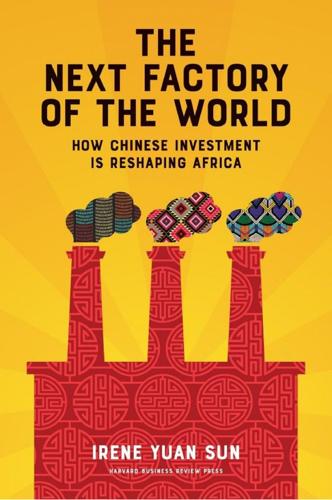
The Next Factory of the World: How Chinese Investment Is Reshaping Africa
by
Irene Yuan Sun
Published 16 Oct 2017
The sense was that debates about industrial policy and tariff levels were not just arcane but actually immoral in an era in which babies were dying from HIV in large numbers. Saving innocent people’s lives—what could possibly be a more obvious priority? To donor agencies such as USAID in America and the UK’s Department for International Development, and to powerful new philanthropic organizations such as the Gates Foundation, Africa’s public health crisis was declared an emergency not only for Africa but for the whole world. No longer would hapless developing-country governments be allowed to fritter away the foreign aid they received on half-baked economic growth plans. While mothers and children were dying in their countries for want of simple medical care, helping them should be paramount.
…
News reports of GSK’s plans to invest in Ethiopia include Eskedar Kifle, “GSK Selects Ethiopia to Manufacture ARV, Antibiotics,” Capital Ethiopia, April 15, 2014, http://capitalethiopia.com/2014/04/15/gsk-selects-ethiopia-to-manufacture-arv-antibiotics/#.WPETz1KZOcY and All Africa, “Africa: GlaxoSmithKline Considers Ethiopia as a Strategic Country for Investment in Africa,” February 12, 2015, http://allafrica.com/stories/201502121731.html. This was also confirmed by my interviews in the Ethiopia offices of the Gates Foundation and the Tony Blair Africa Governance Initiative. 38. Tang Yuzhong, interview by author, July 23, 2016, and “Humanwell Pharmaceutical Ethiopia PLC Project Description” (obtained from company representatives July 23, 2016). Epilogue 1. Steve Lohr, “Robots Will Take Jobs, but Not as Fast as Some Fear, New Report Says,” New York Times, January 12, 2017, https://www.nytimes.com/2017/01/12/technology/robots-will-take-jobs-but-not-as-fast-as-some-fear-new-report-says.html?
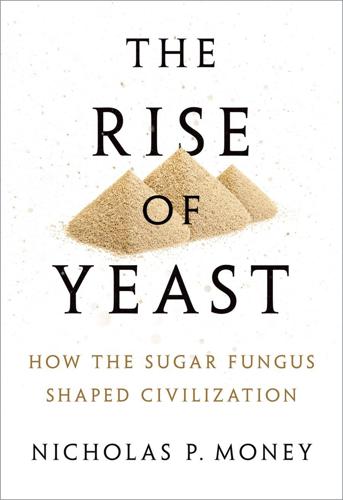
The Rise of Yeast: How the Sugar Fungus Shaped Civilisation
by
Nicholas P. Money
Published 22 Feb 2018
The artemisinic acid molecule released from the yeast cells has to be rearranged a bit to produce the final drug, but the use of a single strain of the fungus to generate the precursor of the life-saving medicine is considered a major success in the new science of metabolic engineering. This financial support from the Gates Foundation was critical because malaria is a disease of the developing world, concentrated in Africa, where healthcare spending is limited and profits for pharma ceutical companies are rather slim. Drug development is a costly business, supported by companies with little incentive to sink resources into drugs that patients cannot afford.
…
Kanellos, <http://www.greentechmedia.com/articles/read/canisobutanol-replace-ethanol>, June 1, 2011; M. Fellet, Chemical and Engineering News 94 (37), 16–19 (2016). 195 not es 23. <https://www.nobelprize.org/nobel_prizes/medicine/laureates/2015/ tu-facts.html>. 24. C. J. Paddon and J. D. Keasling, Nature Reviews Microbiology 12, 355–67 (2014). Funding from the Gates Foundation supported a successful partnership between researchers at the University of California, a for-profit company, and a non-profit company. 25. Greater appreciation of the exigencies of life in rural Africa is evident in Tarzan the Ape Man that starred Johnny Weissmuller in 1932. 26. <http://www.marketsandmarkets.com/PressReleases/human-insulin.asp>. 27.

Whole Earth Discipline: An Ecopragmatist Manifesto
by
Stewart Brand
Published 15 Mar 2009
Any farmer making less than $10,000 a year could get the seeds for free and own the right to breed and sow them year after year. By 2007 field trials of golden rice were being conducted in the Philippines by the International Rice Research Institute, aided by a $20 million grant from the Gates Foundation, with the goal of freeing the GE rice for public use by 2011. The Gates Foundation also funded Peter Beyer to head the international ProVitaMinRice Consortium, which aims to “stack multiple micronutrient and bioavailability traits into Golden Rice.” The next-generation rice will have increased protein, vitamin E, iron, and zinc. A really ambitious project at the International Rice Research Institute is to convert rice from a C3 plant to a C4 plant—from the low-efficiency photosynthesis mode of wheat and potatoes to the more highly evolved, higher-efficiency mode of corn and sugarcane.
…
Over eighty GE crops, tested in over 25,000 field trials, proved the safety and efficacy of the technology. Now, building on the lessons from that work, the second generation of GE aims straight at the consumer to provide nutritious, delicious food, free of allergens and toxicity, that anybody can grow. Another venture of the Gates Foundation is the African Biofortified Sorghum Project, with Florence Wambugu’s Africa Harvest Biotech Foundation leading a consortium of nine institutions, including DuPont-Pioneer. Sorghum is a drought-tolerant staple for 500 million worldwide. The GE version will improve digestibility and add vitamins A and E, iron and zinc, and three amino acids.

System Error: Where Big Tech Went Wrong and How We Can Reboot
by
Rob Reich
,
Mehran Sahami
and
Jeremy M. Weinstein
Published 6 Sep 2021
Microsoft recruiters, for example, would ply new candidates with projections of the potential future value of stock options. With engineers often at the helm of companies and the firms funding them, it’s no surprise that the optimization mindset would come to play an important role in how these companies are managed. In his book Measure What Matters: How Google, Bono, and the Gates Foundation Rock the World with OKRs, Doerr espoused the management principle of objectives and key results (OKRs), a concept originally developed by Andy Grove at Intel and now widely used at a number of technology companies, including Google, Twitter, and Uber. OKRs are the metrics that drive performance evaluations and corporate growth.
…
he would later offer an apology: Will Sturgeon, “‘It Was All My Fault’: VC Says Sorry for Dot-Com Boom and Bust,” ZDNet, July 16, 2001, https://www.zdnet.com/article/it-was-all-my-fault-vc-says-sorry-for-dot-com-boom-and-bust/. “OKRs have helped”: John Doerr, Measure What Matters: How Google, Bono, and the Gates Foundation Rock the World with OKRs (New York: Penguin, 2018), xii. The countercultural notion: Reid Hoffman and Chris Yeh, Blitzscaling: The Lightning-Fast Path to Building Massively Valuable Companies (New York: HarperCollins, 2018). “Competition,” he says, “is for losers”: Peter Thiel, “Competition Is for Losers with Peter Thiel (How to Start a Startup 2014: 5),” Y Combinator, uploaded March 22, 2017, https://www.youtube.com/watch?
…
“generated more total engagement”: Craig Silverman, “This Analysis Shows How Viral Fake Election News Stories Outperformed Real News on Facebook,” BuzzFeed News, November 16, 2016, https://www.buzzfeednews.com/article/craigsilverman/viral-fake-election-news-outperformed-real-news-on-facebook. believe the story about Gates: Ciara O’Rourke, “No, the Gates Foundation Isn’t Pushing Microchips with All Medical Procedures,” PolitiFact, May 20, 2020, https://www.politifact.com/factchecks/2020/may/20/facebook-posts/no-gates-foundation-isnt-pushing-microchips-all-me/; Linley Sanders, “The Difference Between What Republicans and Democrats Believe to Be True About COVID-19,” YouGov, May 26, 2020, https://today.yougov.com/topics/politics/articles-reports/2020/05/26/republicans-democrats-misinformation.

Waiting for Superman: How We Can Save America's Failing Public Schools
by
Participant Media
and
Karl Weber
Published 14 Jun 2010
Achievement First Alliance for College-Ready Public Schools The Alliance for Educational Justice The Alliance for Excellent Education America’s Promise Alliance Aspire Public Schools Bellwether Education Big Brothers Big Sisters Behind the Wheel of the Bookmobile Boyle Heights Learning Collaborative Boys & Girls Clubs Business Roundtable California Charter School Association Center for American Progress Center for Education Reform Center on Education Policy Charter School Growth Fund Children’s Defense Fund Civic Builders Citizen Schools Communities in Schools Community Coalition (LA) Community Partners DC Public Education Fund Democrats for Education Reform Do Something Donors Choose Education Equality Project Education Trust First Book The Gates Foundation Get Schooled Girl Scouts of the USA Grad Nation GreatSchools Green Dot Schools Harlem Children’s Zone Harlem Success Academy Hope Street Group KIPP Schools Leadership Conference on Civil and Human Rights & Leadership Conference ... The Learning Alliance MENTOR Milk + Bookies National Alliance for Charter Schools New Leaders for New Schools NewSchools Venture Fund New York Charter School Association New Visions for Public Schools Parent Revolution Partnership to Uplift Communities The Philadelphia Student Union Project GRAD Public Education Network Reach Out and Read Room to Read The San Francisco Education Fund Scholastic SEED The Sesame Workshop The Skoll Foundation Stand for Children Teach For America The New Teacher Project Thomas B.
…
First Book www.firstbook.org By providing new books to children in preschools and after-school programs, mentoring and tutoring programs, shelters, day care centers and beyond, First Book provides resources to empower teachers and administrators. With access to high-quality books, educational materials, and more, these caring leaders can better teach, plan curriculum, and impart a love of learning, elevating the quality of the programs and opportunities available to children in need. The Gates Foundation www.gatesfoundation.org Guided by the belief that every life has equal value, the Bill & Melinda Gates Foundation works to help all people lead healthy, productive lives. In developing countries, it focuses on improving people’s health and giving them the chance to lift themselves out of hunger and extreme poverty.
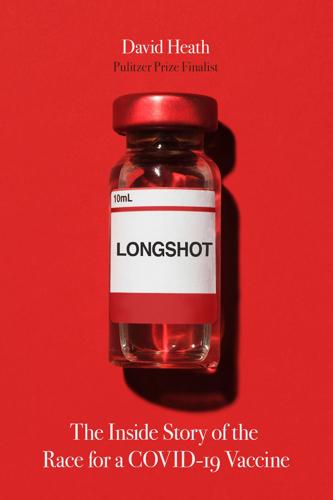
Longshot
by
David Heath
Published 18 Jan 2022
And they just use the data that they can have available to them and try not to step over the ethical boundaries… He carefully crafted his presentation so that you feel like you want to buy what he’s selling.” Moderna veered into vaccine development not long after that. It was in many ways the most logical first step for mRNA, the step that Weissman had in mind. One problem in the commercial development of vaccines is that most are cheap. “The Gates Foundation says that any vaccine to be used in Third World counties needs to have a maximum cost of $1.50,” Weissman said. Moderna announced it had been given $25 million from the government to research and develop mRNA products to generate antibodies for infectious diseases.44 The dollars came from the Defense Advanced Research Projects Agency, created during the Eisenhower administration during the Cold War.
…
He bought a massive crystal he found in Brazil and had it engraved with “Jason McLellan, PhD. Post-fusion RSV structure, February 2011.” He also had models of proteins McLellan had discovered made from a 3D printer. Graham would also host a large Thanksgiving party at his home for people in his lab and a clinical trials group he oversaw. When representatives from the Gates Foundation met with Graham to ask about funding research on RSV, Graham suggested they fund McLellan’s work instead. Graham had realized in his years of studying the catastrophic RSV vaccine trial at Junior Village that by killing the virus in formalin, the F protein on the surface changed its shape.
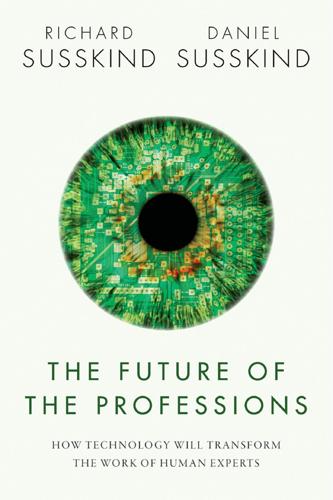
The Future of the Professions: How Technology Will Transform the Work of Human Experts
by
Richard Susskind
and
Daniel Susskind
Published 24 Aug 2015
Each month at Wikipedia, for example, almost half a billion people dip into a corpus of 35 million articles, content created and updated by around 69,000 main online contributors, provided in more than 280 languages, at no cost at all to these users.88 The traditional encyclopedia, out of date as soon as it is printed, and costing as much as £1,000 for a multi-volume and undeniably handsome set, now looks quaint and antiquated. There are over 10,000 open-access online academic journals, containing more than 1.7 million articles, which are generally peer-reviewed but available at no charge, online, to read, copy, or distribute.89 As of 2017, the Gates Foundation (which spends $900 million a year on research) will only fund scholars who publish in a way that is free for the public to read.90 The traditional subscription approach is expensive—Harvard University, with the largest academic endowment in the world, announced in 2012 that its libraries could no longer afford to pay for traditional journals.91 Various business and charging models support these services.
…
<http://www.coursesmart.com> and <https://www.classdojo.com>. 87 ‘Feedback’, ‘individualization’, and ‘prediction’ are the three possibilities for Big Data in education, set out in Viktor Mayer-Schönberger and Kenneth Cukier, Learning with Big Data: The Future of Education (2014). 88 <http://www.wikipedia.org> (accessed 7 March 2015). 89 The Directory of Open Access Journals, <http://doaj.org> (accessed 7 March 2015). Peer review is itself being challenged, for example, by Kathleen Fitzpatrick, Planned Obsolescence: Publishing, Technology, and the Future of the Academy (2011), and others who argue for more open ‘peer-to-peer review’ by larger, online communities of scholars. 90 Susannah Locke, ‘The Gates Foundation pushes to make more academic research free and open to the public’, Vox, 24 Nov. 2014 <http://www.vox.com> (accessed 7 March 2015). 91 ‘Faculty Advisory Council Memorandum on Journal Pricing’, Harvard University Library, 17 Apr. 2012 <http://isites.harvard.edu/icb/icb.do?keyword=k77982&tabgroupid=icb.tabgroup143448> (accessed 7 March 2015). 92 <https://www.duolingo.com>. 93 Larry Summers, ‘What You (Really) Need to Know’, New York Times, 20 Jan. 2012 <http://www.nytimes.com> (accessed 27 March 2015). 94 Saad Rizvi, Katelyn Donnelly, and Michael Barber, ‘An Avalanche is Coming’, IPPR, 11 Mar. 2013. 95 Jonathan Rose, The Intellectual Life of the British Working Classes (2001), 13. 96 Marc MacWilliams, ‘Techno-Ritualization—The Gohonzon Controversy on the Internet’, Heidelberg Journal of Religions on the Internet, 2.01 (2006) <http://archiv.ub.uni-heidelberg.de/volltextserver/6959/> (accessed 7 March 2015). 97 <https://twitter.com> (accessed 7 March 2015). 98 Bianca Bosker, ‘Hook of Mormon: Inside the Church’s Online-Only Missionary Army’, Huffington Post, 4 Sept. 2014 <http://www.huffingtonpost.co.uk> (accessed 7 March 2015). 99 Rick Gladstone and Vindu Goel, ‘ISIS Is Adept on Twitter, Study Finds’, New York Times, 5 Mar. 2015 <http://www.nytimes.com> (accessed 7 March 2015). 100 Brian Johnson, ‘This Week in the Future: Religion & Tech: A Match Made in Heaven’, Shelly Palmer Blog, 13 Dec. 2012 <http://www.shellypalmer.com/2012/2012/12/twtf-religion-and-tech> (accessed 27 March 2015). 101 We are grateful to Rabbi Gideon Sylvester for this point.
…
Liddy, James, ‘The Future of Audit’, Forbes, 4 Aug. 2014 <http://www.forbes.com> (accessed 8 March 2015). Lieberman, Jethro, The Tyranny of the Experts (New York: Walker & Co., 1970). Lloyd, Ian, Information and Technology Law, 7th edn. (Oxford: Oxford University Press, 2014). Locke, Susannah, ‘The Gates Foundation Pushes to make more academic research free and open to the public’, Vox, 24 Nov. 2014 <http://www.vox.com> (accessed 7 March 2015). Lukes, Steven, Émile Durkheim: His Life and Work (New York: Harper & Row, 1972). Macdonald, Keith, The Sociology of the Professions (London: Sage Publications, 1995).

Shutdown: How COVID Shook the World's Economy
by
Adam Tooze
Published 15 Nov 2021
For the two years 2018–2019, the WHO’s approved program budget was no more than $4.4 billion, less than that of a single big city hospital.18 The WHO’s funding is cobbled together from a hodgepodge of sources, including national governments, private charities, the World Bank, and big pharma. In 2019, among its largest donors, the Gates Foundation ranks alongside the national governments of the United States and the UK and ahead of Germany. The venerable Rotary International contributed as much, if not more, than the governments of either China or France. Altogether, the WHO can muster no more than 30 cents per year in spending for every person on the planet.
…
It focused on developing a vaccination for the highly dangerous MERS-CoV and on building a “rapid response platform” that would enable a quick reaction to the emergence of a hypothetical new pathogen, dubbed “Disease X.”17 Public-private partnerships like CEPI did not end the wrestling match over pricing, IP, and the transparency of contracts, but they did push more money—$706 million—into nineteen vaccine candidates.18 Ahead of time, 2020 was earmarked as the final year of the first decade-long Global Vaccine Action Plan backed by donors like the Gates Foundation, the Wellcome Trust, the GSK foundation, and CEPI. A number of new vaccines, including those for malaria and HIV, were within sight of the finish line. And then in January 2020 “Disease X” actually arrived. * * * — The scientific community’s response to the coronavirus will go down in history as one of humanity’s more remarkable collective achievements.
…
That was the route taken in the development of the Oxford vaccine, the least glamorous of the three early vaccine contenders in the West. It was inexpensive and tough, making it easy to store. In April, Oxford University’s Jenner Institute announced that it would make its vaccine available on an open-license basis, but under pressure from the Gates Foundation, which fervently supports maintaining patents on intellectual property, even for lifesaving drugs, Jenner backtracked. It signed an exclusive deal with AstraZeneca, spinning off a for-profit company, Vaccitech, in which the university and its top scientists owned a majority stake. For the duration of the pandemic, they would supply the vaccine at cost.49 To expand production capacity, Oxford-AstraZeneca agreed to partnerships with ten manufacturing operations around the world.

A World in Disarray: American Foreign Policy and the Crisis of the Old Order
by
Richard Haass
Published 10 Jan 2017
There are state, provincial, and city governments with a degree of political autonomy and an impact beyond their countries’ borders. And then there are corporations, media companies, militias, terrorist organizations, religious institutions and movements, drug cartels, and NGOs of a more benign sort, from the Gates Foundation to Doctors Without Borders, all with an international footprint. Again, this is a world of distributed power, and increasingly power in whatever form is in the hands of entities other than major countries. But it is not just that the major powers have to share the stage with a large group of other actors.
…
Third, relevant nonstate actors need to be included in whatever process is selected. Multilateralism cannot be a country-only enterprise in a nonpolar era. Obviously, the mix of invitees will vary from issue to issue. But efforts to contend with infectious disease need to give a place at the table to, say, the Gates Foundation, pharmaceutical companies, and NGOs such as Doctors Without Borders alongside health ministers and representatives of the World Health Organization. It would be nonsensical to convene gatherings meant to promulgate rules of the road for cyberspace without the participation of Apple, Microsoft, Google, Facebook, and others.

Palaces for the People: How Social Infrastructure Can Help Fight Inequality, Polarization, and the Decline of Civic Life
by
Eric Klinenberg
Published 10 Sep 2018
It was a compelling argument—so compelling, in fact, that in the 1990s and 2000s several large urban school districts began small school initiatives, and major philanthropies, including the Carnegie Corporation of New York, the Annenberg Foundation, and the Bill & Melinda Gates Foundation, poured resources into small school projects. The Gates Foundation alone invested $650 million, hoping it would yield immediate results. The experiments were indeed ambitious. In New York City, for instance, the Department of Education opened dozens of small high schools, including specialty schools—for arts, computers and technology, health, languages, and science, among others—that occupied portions of formerly large school buildings.
…
It’s particularly puzzling that so few corporate leaders from the information economy, including those in technology and finance, have supported the library, the primary institution promoting literacy and providing Internet access to those who would otherwise have no way to get online. There are exceptions. In the 1990s, Microsoft and the Gates Foundation, which stands out for its investments in schools, health centers, and other vital social infrastructures, donated $400 million to help libraries across the United States establish Internet connections. In 2008, Stephen Schwarzman, the Wall Street financier and CEO of the Blackstone Group, gave $100 million to the New York Public Library, which in turn named its landmark building on Fifth Avenue after him.

Other Pandemic: How QAnon Contaminated the World
by
James Ball
Published 19 Jul 2023
As the New York Times catalogues,25 a YouTuber had found a patent connected to a coronavirus by the Pirbright Institute, a Surrey-based infectious disease research institute specialising in illnesses in farm animals. The Pirbright Institute had, the YouTuber correctly said, received funding from the Gates Foundation, and therefore Gates had some stake in the pandemic. In reality, the patent related to a potential vaccine for an entirely different coronavirus – coronaviruses are a family of viruses with many different varieties, including several that cause common colds – one that affects livestock. Inevitably, that bit of online dot-joining was quickly turned into the accusation – made two days later by Alex Jones’ conspiratorial ‘news’ service Infowars – that Bill Gates had patented Covid-19 in advance.
…
Matthew Brown, ‘Fact check: Bill Gates has given over $50 billion to charitable causes over career’, https://eu.usatoday.com, 6 November 2020. 21. The Foundation receives funding from some other sources, including philanthropy from Gates’ friend and fellow multi-billionaire Warren Buffett 22. The Bureau retains full editorial independence, including the freedom to criticise the Gates Foundation and Gates-funded projects. It also discloses Gates funding to all prospective global health sources and commentators, and publishes it alongside each published story. 23. As of April 2022: ‘Coronavirus death toll’, at www.worldometers.info. 24. David Adam, ‘15 million people have died in the pandemic, WHO says’, www.nature.com, 5 May 2022. 25.
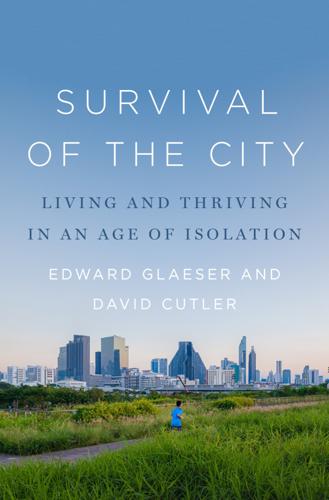
The Survival of the City: Human Flourishing in an Age of Isolation
by
Edward Glaeser
and
David Cutler
Published 14 Sep 2021
The CCSSO and NGA Center had been supported for years by organizations committed to education reform, especially the Gates Foundation. The Gates Foundation granted the NGA Center $19.6 million in 2005 “to provide states with grants and assistance to develop and implement comprehensive plans for high school redesign and increase college-ready high school graduation rates,” and the CCSSO $9.97 million in 2009 “to increase the leadership capacity of chiefs by focusing on standards and assessments, data systems, educator development and determining a new system of supports for student learning.” One of us (Glaeser) had a somewhat inside view on that process as a member of the Gates Foundation’s US Program Advisory Panel.
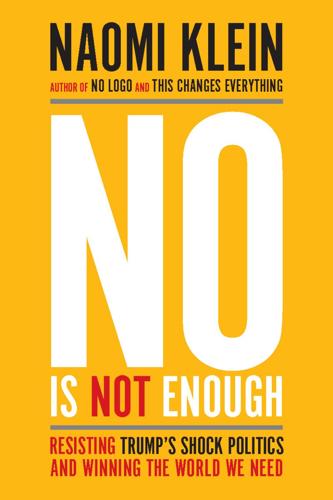
No Is Not Enough: Resisting Trump’s Shock Politics and Winning the World We Need
by
Naomi Klein
Published 12 Jun 2017
Billionaire CEOs and celebrities—Bill Gates, Richard Branson, Michael Bloomberg, Mark Zuckerberg, Oprah, and always, for some reason, Bono—are treated less like normal people who are gifted in their fields and happen to be good at making a great deal of money, and more like demigods. Business Insider ran a listicle in 2011 headlined “10 Ways Bill Gates Is Saving the World”—a perfect distillation of the enormous powers and responsibilities being delegated to, and projected upon, this tiny clique and their charitable foundations. The Gates Foundation alone is worth $40 billion, making it the largest charitable organization in the world. In key sectors including agriculture in Africa, infectious diseases, and the US education system, the foundation’s power rivals that of major United Nations and US government agencies. And yet, despite this unprecedented influence, the foundation’s inner workings are notoriously secretive, with key decisions made by Bill, his wife Melinda, his father William Gates, and fellow multibillionaire Warren Buffett (a nepotistic hiring policy worthy of the Trumps).
…
Indeed, in the 1990s, Gates was widely regarded as a corporate villain, known for exploitative employment practices and for building what looked like a predatory software monopoly. Then, with Flash-like speed, he reinvented himself as a global superhero, one who could single-handedly fix the most intractable of social crises. Never mind whether Gates has any specific expertise in the areas in question, or that many of the Gates Foundation’s silver-bullet fixes have backfired badly. Gates and his fellow world-saving billionaires are part of what has come to be known as “the Davos class,” named for the annual World Economic Summit held at the top of a mountain in Davos, Switzerland. This is the hyper-connected network of banking and tech billionaires, elected leaders who are cozy with those interests, and Hollywood celebrities who make the whole thing seem unbearably glamorous.
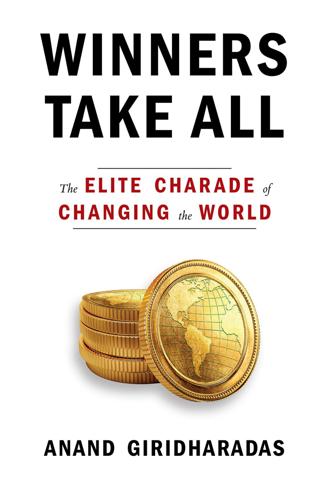
Winners Take All: The Elite Charade of Changing the World
by
Anand Giridharadas
Published 27 Aug 2018
Our age of market supremacy has blessed the protocols with a remarkable change of fortune: They have evolved from being a specialized way of solving particular business problems to being, in the view of many, the essential toolkit for solving anything. The protocols are increasingly seen as vital training for working in charity, education, social justice, politics, health care, the arts, newsrooms, and any number of arenas that used to be more comfortable with their own in-house apprenticeship. Organizations like the Gates Foundation hire the protocol bearers to solve the problem of education for poor children in America. Civil rights organizations put protocol bearers on their boards, taking not only their money but also their advice. As we’ve seen, young people like Hilary Cohen are persuaded by the surrounding culture that only by learning the protocols can they help millions of people.
…
But, he added, “Presumably, some of why I’m there is because some of those other things that I did and, hopefully, my Mongolian musicologist bit of me can come out a bit as well, occasionally.” He took up the new job, dividing his time between New York and London, and making his first forays into the new world of the social sector. He was surprised that so many of the people now tasked with helping the oppressed—whether at the Gates Foundation or the Omidyar Network or the Clinton Foundation—were fellow ex-consulting and/or -finance types like him. He knew how they operated. “One thing that that approach entirely fails to take into consideration,” he said, “is that the people who are the so-called beneficiaries of this help and this insight may themselves have the answer to the problems.”

The Premonition: A Pandemic Story
by
Michael Lewis
Published 3 May 2021
“We went to the CDC and pitched them and we were given a fairly cold reception,” said Joe. “And we were like, ‘We’ll pay for it!’ And they were like, ‘Huh, that’s weird.’ They basically didn’t care. Walking out, I kind of knew in my gut we’d have to go it alone.” In the end, the Biohub had partnered with another nonprofit, the Gates Foundation, to build, in effect, a global network of infectious-disease trip wires. Joe reckoned they’d have the system in place by 2022. It wouldn’t be seamless: China would remain a black hole, as the Chinese had declined to participate. But Joe thought they could see what they needed to see inside China by creating trip wires in surrounding countries.
…
SEVEN The Redneck Epidemiologist It had been more than a decade since they’d served together in the White House, but whenever Richard Hatchett wanted to noodle over some problem, his first impulse was to write to Carter Mecher. Richard had moved to London back in 2017 to run a curious new organization called the Coalition for Epidemic Preparedness Innovations. CEPI, as it was simply and thankfully known, had been funded by European governments, the Gates Foundation, and others with deep pockets to develop new vaccines, and faster ways to make them. On January 8, 2020, Richard had been going back and forth with Carter on something or other when Carter changed the subject. Carter’s mind had drifted from the assigned task to a new and more interesting one.
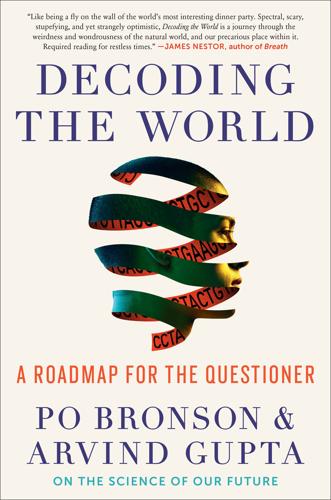
Decoding the World: A Roadmap for the Questioner
by
Po Bronson
Published 14 Jul 2020
At least a dozen of our alumni were running into the fire. In Korea, their Zoonotic Virus Lab tried 3,000 existing drugs, in a high-throughput screen using kidney cells infected with the virus. They found 24 that worked well, and niclosamide was one of the two that stood out above the rest. We called the Gates Foundation to get it on their radar. Around the same time, Akash got great results back on niclosamide from the Galveston National Lab, a Biosafety Level 4 containment facility that worked with live virus. Three medical centers had agreed to start a trial. Text from my sister in New York: I have an emergency transplant to do.
…
In the early years of IndieBio, the Zika outbreak was emerging in South America. We funded several companies to fight Zika and whatever new infectious disease might emerge. One founder went to Brazil; in one lab, he found thousands of untested samples, and in the hospital, babies with microcephaly. Working with DARPA and the Gates Foundation, they invented a small clear chip, just the size of a thumb drive, which worked with a smartphone camera to get a diagnosis—just like a $20,000 lab device. Another amazing company became the world leader in bioprinting vascularized human tissue. While at IndieBio, they printed and grew panels of miniature human lymph nodes, little immune systems.
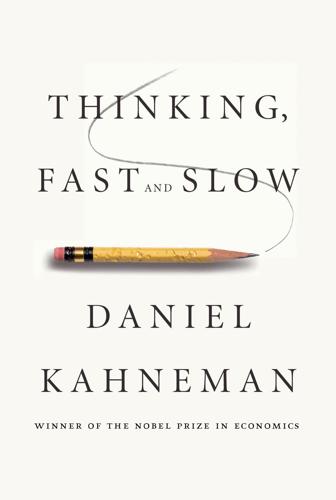
Thinking, Fast and Slow
by
Daniel Kahneman
Published 24 Oct 2011
Their essay focused on a large iiveрothersnvestment, some $1.7 billion, which the Gates Foundation made to follow up intriguing findings on the characteristics of the most successful schools. Many researchers have sought the secret of successful education by identifying the most successful schools in the hope of discovering what distinguishes them from others. One of the conclusions of this research is that the most successful schools, on average, are small. In a survey of 1,662 schools in Pennsylvania, for instance, 6 of the top 50 were small, which is an overrepresentation by a factor of 4. These data encouraged the Gates Foundation to make a substantial investment in the creation of small schools, sometimes by splitting large schools into smaller units.
…
It is easy to construct a causal story that explains how small schools are able to provide superior education and thus produce high-achieving scholars by giving them more personal attention and encouragement than they could get in larger schools. Unfortunately, the causal analysis is pointless because the facts are wrong. If the statisticians who reported to the Gates Foundation had asked about the characteristics of the worst schools, they would have found that bad schools also tend to be smaller than average. The truth is that small schools are not better on average; they are simply more variable. If anything, say Wainer and Zwerling, large schools tend to produce better results, especially in higher grades where a variety of curricular options is valuable.
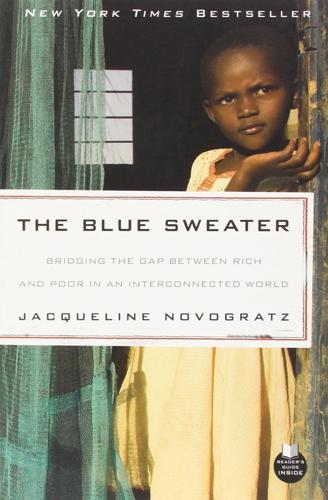
The Blue Sweater: Bridging the Gap Between Rich and Poor in an Interconnected World
by
Jacqueline Novogratz
Published 15 Feb 2009
Though IDEO works with some of the world’s largest companies, the framework for listening to people of any economic stratum is the same. IDEO preferred not to try and convince low-income people that they should switch to plastic water containers, but rather to see whether it was possible to design clay containers that could be sanitized regularly. We also have been working with the Gates Foundation and a global research organization to listen to the poor to try and understand what really happens when people start drinking safe water. We want to gain insights into how to get more people to do so. Changing any kind of behavior is not easy. And in places like rural India, most people think water comes from God, so there is a lot of pressure to accept whatever God decides to give you.
…
It is why nonprofit groups like Naandi are so important to the larger solution. In this case, Acumen Fund works with WHI, a for-profit company that partners with Naandi, a local NGO. We guarantee loans for and have a working relationship with a commercial bank, ICICI. We work closely with the Gates Foundation and with the nonprofit Research Triangle Institute and have embarked on a joint venture with a for-profit design firm. Most villages that want to install a plant are required to get the blessing of the local panchayat, or government official. And the communication and negotiation, the learning, failing, succeeding, and learning all over again require real and long-term commitments from the different players involved.
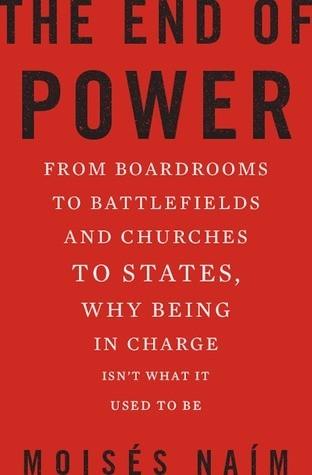
The End of Power: From Boardrooms to Battlefields and Churches to States, Why Being in Charge Isn’t What It Used to Be
by
Moises Naim
Published 5 Mar 2013
In geopolitics, small players—whether “minor” countries or nonstate entities—have acquired new opportunities to veto, interfere in, redirect, and generally stymie the concerted efforts of “big powers” and multilateral organizations such as the International Monetary Fund (IMF). To name just a few instances: Poland’s vetoing of the EU’s low-carbon policy, the attempts by Turkey and Brazil to derail the big powers’ negotiations with Iran over its nuclear program, Wikileaks’ disclosure of US diplomatic secrets, the Gates Foundation’s contesting of the World Health Organization leadership in the fight against malaria, and spoilers of various stripes and sizes in global negotiations on trade, climate change, and numerous other issues. These newly and increasingly relevant “small players” are vastly different from one another, as are the fields they compete in.
…
Whereas Hollywood and the Comintern once exerted a strong cultural pull, now Confucius societies, Bollywood films, and Colombian telenovelas win over hearts and minds. The growing capacity of small countries to ward off the designs of large ones is part of an overall shift that has empowered a much broader range of actors in international affairs. The likes of Al Qaeda, the Gates Foundation, and Al Jazeera have their own agendas largely unmoored from any specific country. Terrorists, insurgents, nongovernmental organizations, immigrant associations, philanthropists, private companies, investors and financiers, media companies, and new global churches have not made armies and ambassadors obsolete.

User Friendly: How the Hidden Rules of Design Are Changing the Way We Live, Work & Play
by
Cliff Kuang
and
Robert Fabricant
Published 7 Nov 2019
Elsewhere, in the years since, the working process in almost every digital design agency in the world, inside every major technology company, and even inside countless businesses aiming to be more “innovative,” presumes small teams of people working collaboratively, without hierarchy, and discovery periods meant to uncover unmet needs. All these processes are subsumed in a larger, ubiquitous framework—observe, prototype, test, and repeat—that equates observation with creation. Today, you can find IDEO’s influence in places as varied as the Gates Foundation, which has made human-centered design into a pillar of its efforts to foster innovation in the developing world; the famed Mayo Clinic, which for years had an entire floor set up in which designers worked alongside doctors, so that they could immerse themselves in a clinic’s rhythms and quickly test new ways of offering service;24 Ford, whose CEO boasted of his plans to remake the behemoth into an experience-driven, user-centered company, to better compete in an era of driverless cars; and even Finland, whose radical experiment in offering a universal income was born in a government-funded design lab meant to reinvent public services.25 For the coming generation of would-be business titans, design-thinking methods are now taught not just at Stanford but in many of the world’s most prestigious business schools, all hoping to emulate the university’s promise to teach the alchemy of invention.
…
It imagined an app and chatbot that would tell you, as soon as you walked into a health-care clinic, your coverage and what kind of treatment to expect. Birthed from an intensive study of how people wanted their health care to behave, that assistant was designed to demystify insurance by remodeling it around the metaphor of an adviser. Moreover, the tools of design itself are being applied to higher-order problems. The Gates Foundation, one of the most consequential funders in the world, was built upon the premise of sensing the right problems to solve through the process of design thinking. (In fact, the foundation was for years one of IDEO’s most prolific and high-profile clients.4 More recently, it hired my collaborator Robert Fabricant’s team at Dalberg Design to bring greater integration of human-centered design into its global health portfolio.)

Life Inc.: How the World Became a Corporation and How to Take It Back
by
Douglas Rushkoff
Published 1 Jun 2009
Even the best-intentioned family foundations often find themselves working against their stated purpose. The philanthropic strategy is to siphon off a portion of a family’s corporate winnings and invest them in a nonprofit foundation that lasts essentially forever. Bill Gates stunned the world when, after a few decades of low-profile donations, he launched the Gates Foundation and endowed it with 35 billion of his own dollars. As the ultimate software entrepreneur and sometimes-richest man in the world, he restored the nonprofit sector’s faith in an entire generation of newly rich dot-com executives. The foundation’s work fighting disease in Africa almost makes our suffering through the Windows operating system seem worth it.
…
These include investments in companies such as Dow Chemical, ConocoPhillips, and Tyco, which are excluded from mutual funds that screen for irresponsible behavior or poor environmental stewardship. As Paul Hawken explains, “Foundations donate to groups trying to heal the future, but with their investments, they steal from the future.” The Gates Foundation invests significantly more money in the darkest regions of the corporate sphere than it donates to all its charities combined. It holds $1.5 billion of stock in the very drug companies whose pricing policies are restricting the flow to Africa of medicines that the foundation is supposedly trying to get there.

Intertwingled: Information Changes Everything
by
Peter Morville
Published 14 May 2014
But I spend much less time and energy worrying about making the right decision and more time and energy ensuring that any decision I make turns out right.”lxxxi There’s insight in those words but danger too. Wisdom requires a balance between confidence and caution. Sun failed to see the shift from hardware to software and was acquired by Oracle. For double loop learning, we must first admit error, something Bill Gates does well. After the Gates Foundation spent $2 billion to replace large schools with small ones and realized only modest gains, Gates publicly concluded they’d made an expensive mistake, and decided to switch direction. In Mistakes Were Made (But Not By Me), we’re reminded such honest admissions are refreshing because they’re so rare.

Consumed: How Markets Corrupt Children, Infantilize Adults, and Swallow Citizens Whole
by
Benjamin R. Barber
Published 1 Jan 2007
The Bill and Melinda Gates Foundation, run by his father, almost immediately became one of the world’s largest and most generous foundations—taking on not merely challenges of the digital divide (where philanthropic efforts might be said to help Microsoft’s own business) but working in areas like HIV education, providing vaccinations and medications in developing countries, and nurturing secondary education. Worth roughly $46 billion, Gates has pledged to give away up to 95 percent of his wealth to his foundation. In 2006, Warren Buffett, second-richest man on earth after Gates, pledged the greater part of his $30-billion fortune to the Gates Foundation, making it larger than the next seven largest foundations in the world combined. Like earlier giants of capitalism, Gates brings to his philanthropy the same hearty optimism that characterizes his business career. The upbeat prose of his foundation website mirrors the upbeat marketing language of Microsoft: “While the world around us fuels our sense of urgency, it also fuels our optimism.
…
Michael Wines, “Hope for Hungry Children, Arriving in a Foil Packet,” New York Times, August 8, 2005. 36. See Sachs, The End of Poverty. 37. On PBS’s Charlie Rose television show, June 26, 2006. Buffett, the second richest person on earth following Bill Gates, offered the greater part of his $30 billion fortune to the Gates Foundation. 38. Abraham Maslow’s hierarchy of needs include self-actualization, the aesthetic, the cognitive, esteem, love and belongingness, safety, and the physiological (material). Brazelton’s and Greenspan’s include “ongoing Nurturing Relationships; Physical Protection, Safety and Regulation; Experiences Tailored to Individual Differences; Need for Developmentally Appropriate Experiences; Need for Limit Setting, Structure, and Expectation; Need for Stable, Supportive Communities and Cultural Continuity; protecting the Future” (The Irreducible Needs of Children: What Every Child Must Have to Grow, Learn, and Flourish [Cambridge, Mass.: Perseus, 2000]). 39.

Model Thinker: What You Need to Know to Make Data Work for You
by
Scott E. Page
Published 27 Nov 2018
Warner Brothers applies data analytics to create models of audience responses. Amazon develops machine learning models to make product recommendations. Researchers funded by the National Institutes of Health build mathematical models of human genomics to search for and evaluate potential cures for cancer. The Gates Foundation uses epidemiological models to design vaccination strategies. Even sports teams use models to evaluate draft prospects and trade opportunities and to formulate within-game strategies. By relying on models to select players and strategies, the Chicago Cubs won a World Series championship after more than a century of failures.
…
These facts can all be explained by differences in standard deviations. Failure to take sample size into account and inferring causality from outliers can lead to incorrect policy actions. For this reason, Howard Wainer refers to the formula for the standard deviation of the mean the “most dangerous equation in the world.” For example, in the 1990s the Gates Foundation and other nonprofits advocated breaking up schools into smaller schools based on evidence that the best schools were small.5 To see the flawed reasoning, imagine that schools come in two sizes—small schools with 100 students and large schools with 1,600 students—and that student scores at both types of schools are drawn from the same distribution with a mean score of 100 and a standard deviation of 80.

The Start-Up of You: Adapt to the Future, Invest in Yourself, and Transform Your Career
by
Reid Hoffman
and
Ben Casnocha
Published 14 Feb 2012
When deciding what kind of gift to give, think about your unique experiences and skills. What might you have that the other person does not? For example, consider an extreme hypothetical. What kind of gift would be helpful to Bill Gates? Probably not introducing him to somebody—he can meet whomever he wants. Probably not sending an article you read in the media about the Gates Foundation—he was probably interviewed for it. Probably not by investing in one of his projects—he’s doing fine money-wise. Instead, think about little things. For example, if you’re in college, or have a good friend or sibling in college, you could send him information about some of the key cultural and technology-usage trends among the college set.
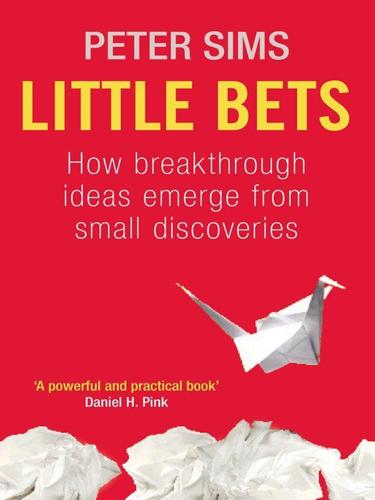
Little Bets: How Breakthrough Ideas Emerge From Small Discoveries
by
Peter Sims
Published 18 Apr 2011
When someone has the insight to see clearly into the future, as Bill Gates did about the emerging computer industry when he founded Microsoft, pursuing that brilliant vision with unwavering determination can produce remarkable results. However, when uncertainty replaces certainty or when we lack insight, experience, or expertise about problems, experimental innovation is a far better approach. Bill Gates, for one, doesn’t have enough expertise or insight about the problems the Gates Foundation is trying to solve in different parts of the world to know up front where their money will have the greatest impact. He must learn from hundreds of experiments in order to strategize about and prioritize his resources. One of his favorite experiments in philanthropy has been bed nets that prevent malaria.

The Most Good You Can Do: How Effective Altruism Is Changing Ideas About Living Ethically
by
Peter Singer
Published 1 Jan 2015
Among the various philanthropic projects the leaflet describes are one seeking to improve health care for the global poor and another aimed at improving health care in the United States: •In 1998 Ted Turner gave a billion dollars, or a third of his wealth, to the UN to scale up proven health programs focused on the world’s biggest killer diseases, which overwhelmingly kill children in developing countries. This initiative has been highly successful, drawing in and coordinating funds from other non-profits, such as the Gates Foundation. Since 2000, 1.1 billion children have been given a combined vaccine that prevents measles and rubella. The vaccine now reaches 84 percent of the world’s children. Between 2000 and 2012, worldwide deaths from measles have fallen 78 percent, with a total of 13.8 million deaths averted.2 The cost per vaccination is estimated to be $1.

The Globalization of Inequality
by
François Bourguignon
Published 1 Aug 2012
Yet, it is not clear that the geopolitical or diplomatic motivation of aid has completely disappeared from the motivation of the donors. At the same time, new sources of funding have appeared that are not taken into account by the numbers given above. These include private organizations such as the Gates foundation, as well as emerging countries such as China, India, or Brazil. These sources of funding are growing. At present they represent a little more than 10% of the official aid from the developed countries, whereas they were close to negligible fifteen years ago. What has been the impact of these monetary flows on development and the reduction of world poverty?
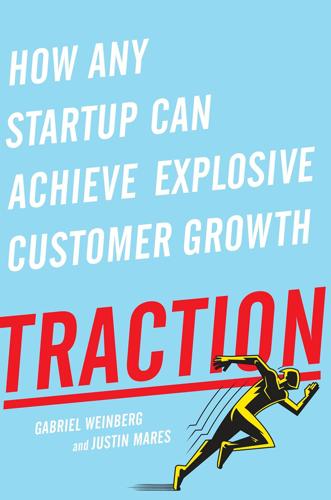
Traction: How Any Startup Can Achieve Explosive Customer Growth
by
Gabriel Weinberg
and
Justin Mares
Published 5 Oct 2015
Soon after, Newsweek picked it up. The Newsweek story received some attention, but nothing major. Then Oprah happened. One of Oprah’s people saw the article in Newsweek and she decided to name DonorsChoose as one of Oprah’s favorite things for 2010. This national attention from Oprah led to sponsorship from the Gates Foundation and a major increase in donations. Though media outlets are increasingly on the lookout for good stories, there are still challenges to getting exposure. Tens of thousands of companies are clamoring for media coverage. Jason Kincaid, a former reporter at TechCrunch, told us that he personally got pitched more than fifty times every day.

Survival of the Richest: Escape Fantasies of the Tech Billionaires
by
Douglas Rushkoff
Published 7 Sep 2022
Such fanciful pronouncements for a civilization-wide transformation orchestrated by technocratic billionaires don’t play well in Peoria, and they undermine more legitimate efforts at addressing crises, which are never so seamlessly deployed. The suspicions they engender make us less confident, for example, in mRNA vaccine technology funded, in part, by the Gates Foundation. They don’t encourage our compliance with mask mandates, especially after we were originally told not to wear them. Nor do they bolster the rationale for signing onto a climate accord that gives some unelected international commission the authority to govern what kind of fuel we put in our cars or how we heat our homes.

Morning After the Revolution: Dispatches From the Wrong Side of History
by
Nellie Bowles
Published 13 May 2024
The list has reshaped schools and policies across the country, changed how newspapers operate and how therapists do their work. The list has flourished, permeating our lexicon. It has sprung into a thousand anti-racist training programs. Videos of peppy white people describing the traits of their own white supremacy abound. The Gates Foundation funds work that explicitly builds on Tema’s list to bring it into education—specifically math instruction. Tema Okun helped make justice work personal. If racial injustice is actually because of culturally taught and internalized differences, then the fix is also internal and emotional.
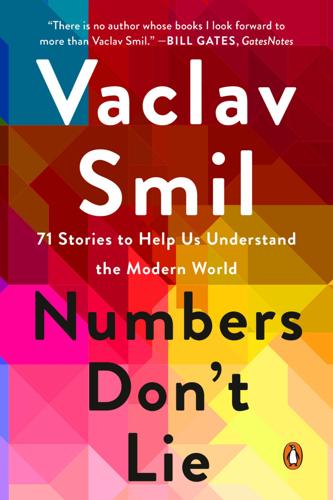
Numbers Don't Lie: 71 Stories to Help Us Understand the Modern World
by
Vaclav Smil
Published 4 May 2021
And when the analysis went beyond the restricted cost-of-illness approach and looked at broader economic benefits, it found the net benefit-cost ratio was more than twice as high—reaching 44 times, with an uncertainty range of 27 to 67. The highest rewards were for averting measles: a 58-fold return. The Gates Foundation released the finding of the 44-fold benefit in the form of a letter to Warren Buffett, the foundation’s largest outside donor. Even he must be impressed with such a return on investment! There is still some way to go. After generations of progress, the basic vaccination coverage in high-income countries is now nearly universal, at around 96 percent, and great advances have been made in low-income nations, where the coverage has risen from only 50 percent in the year 2000 to 80 percent in 2016.

Hit Refresh: The Quest to Rediscover Microsoft's Soul and Imagine a Better Future for Everyone
by
Satya Nadella
,
Greg Shaw
and
Jill Tracie Nichols
Published 25 Sep 2017
In the future, an AI agent will know that you are at work and have ten minutes free, and then help you accomplish something that is high on your to-do list. AI is on the verge of making our lives more productive and creative. Innovation will improve many other areas of life too. It’s the biggest piece of my work with the Gates Foundation, which is focused on reducing the world’s worst inequities. Digital tracking tools and genetic sequencing are helping us get achingly close to eradicating polio, which would be just the second human disease ever wiped out. In Kenya, Tanzania, and other countries, digital money is letting low-income users save, borrow, and transfer funds like never before.

Getting Better: Why Global Development Is Succeeding--And How We Can Improve the World Even More
by
Charles Kenny
Published 31 Jan 2011
GLOBAL PROJECTS Third, given the importance of technology and ideas to global outcomes, there is also a role for donors to support the research and dissemination of innovations friendly to broad-based development. Aid might support new vaccine development, such as the partially effective malaria vaccine currently under trial in Africa developed by Glaxo SmithKline with the support of the Gates Foundation. Or aid might support the creation of more robust vaccines—vaccines that do not require refrigeration, for example, or that are simple for nonexperts to administer. Aid could support the creation of new solutions that are simple to apply even absent strong institutions—perhaps a onetime treatment for tuberculosis to replace the current treatment, which involves a series of clinic visits over months.
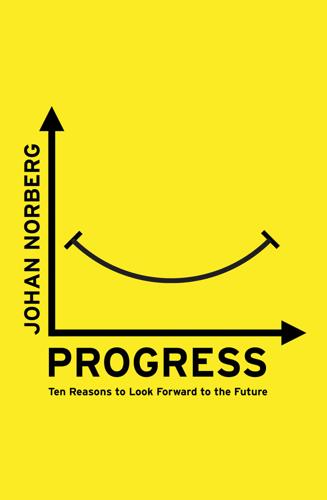
Progress: Ten Reasons to Look Forward to the Future
by
Johan Norberg
Published 31 Aug 2016
The next big killer that may be beaten is malaria, which was endemic to almost every country in the world in 1900 and killed about two million a year. At that stage, rich countries drained swamps and ditched marshy areas to remove breeding sites for the mosquitoes that carry the parasite. This and the widespread use of insecticides such as DDT eradicated malaria in more than 100 countries. After a recent push by the Gates Foundation and other groups, there is now a chance that malaria could be beaten globally in the next few decades. Between 2000 and 2015 malaria death rates around the world have reduced by around half, declining fastest among children. According to the WHO, this has averted 6.2 million deaths. This has happened thanks to bed nets treated with insecticides, indoor residual spraying and artemisinin-based combination therapy.
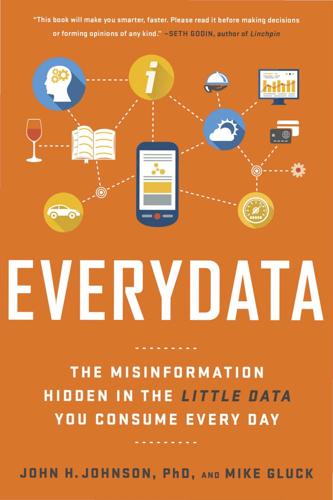
Everydata: The Misinformation Hidden in the Little Data You Consume Every Day
by
John H. Johnson
Published 27 Apr 2016
If you live in Nebraska and never plan on going to the ocean, you don’t need to worry about shark attacks, no matter how probable they are. (Unless you’re worried about a Sharknado, of course.)40 If you live in Africa, you should probably be much more concerned with hippopotamuses, which kill hundreds of people each year (compared with fewer than a dozen people killed annually by sharks), according to the Gates Foundation.41 Just because a finding has statistical impact—even with a large magnitude—doesn’t mean it has an economic impact on your everyday life. 6 Shrinking Africa Misrepresentation and Misinterpretation In 1544, Gerardus Mercator was an up-and-coming mapmaker who was sentenced to prison for being a heretic.
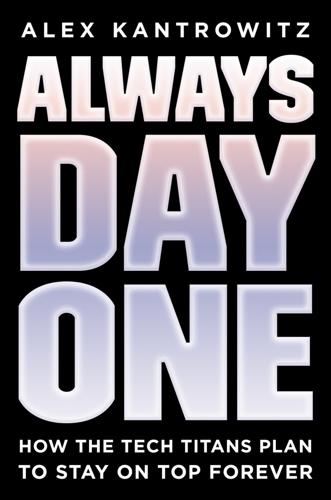
Always Day One: How the Tech Titans Plan to Stay on Top Forever
by
Alex Kantrowitz
Published 6 Apr 2020
Official Google Blog, June 6, 2006. https://googleblog.blogspot.com/2006/06/its-nice-to-share.html. Pichai said as he introduced Chrome: “Sundar Pichai Launching Google Chrome.” YouTube, February 19, 2017. https://www.youtube.com/watch?v=3_Ye38fBQMo. Chrome debuted in 2008: Doerr, John E. Measure What Matters: How Google, Bono, and the Gates Foundation Rock the World with OKRs. New York: Portfolio, 2018. ceased developing Internet Explorer: Newcomb, Alyssa. “Microsoft: Drag Internet Explorer to the Trash. No, Really.” Fortune. Fortune, February 8, 2019. https://fortune.com/2019/02/08/download-internet-explorer-11-end-of-life-microsoft-edge/?
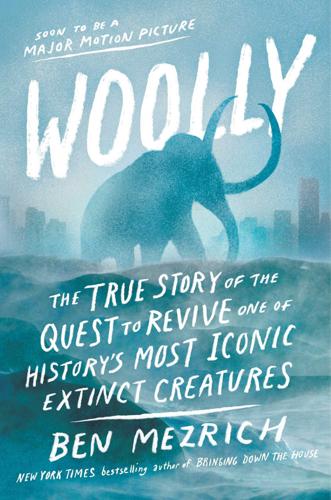
Woolly: The True Story of the Quest to Revive History's Most Iconic Extinct Creature
by
Ben Mezrich
Published 3 Jul 2017
Church seemed to slow a step, and Luhan had to choose between cutting her own gait in half and sprinting ahead. “Do you have a moment?” Church asked. “The seminar . . .” she said. “I think it can wait.” Luhan had been interested in learning about the lab’s progress on the mosquito project, for which they were nearing the testing phase. The Gates Foundation, run by Bill and Melissa Gates, had already been investing in huge domes over a trio of villages in sub-Saharan Africa, where the very special mosquitoes that had been created in Church’s lab would be released, to be tested in a safe environment, one from which they couldn’t escape. But Church was already leading her toward a door set a few feet away in the third-floor hallway.
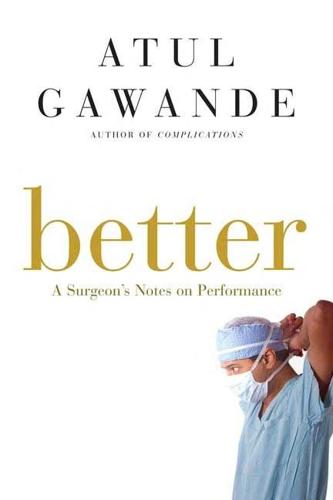
Better: A Surgeon's Notes on Performance
by
Atul Gawande
Published 2 Apr 2007
THE MOP-UP 29 The definition of diligence is from the Random House Unabridged Dictionary (New York: Random House, 2006). 31 For an overview of WHO's eradication efforts, see G. Williams, "WHO: The Days of the Mass Campaigns," World Health Forum 9 (1988): 7-23. 32 A campaign against guinea worm disease, led by the Carter Center and financed by the CDC, WHO, and the Gates Foundation, is the only global eradication program now under way besides the one against polio (see www.cartercenter.org). As with the polio effort, there remains great hope. The parasitic worm was once endemic in Africa and Asia and caused some three to ten million infections per year. (The worms grow to three feet in length in the abdomen and then emerge slowly and painfully through the skin, incapacitating victims for two months or longer.)
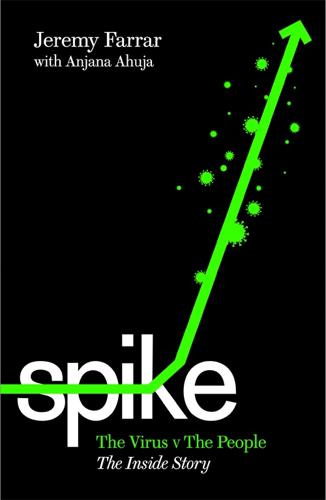
Spike: The Virus vs The People - The Inside Story
by
Jeremy Farrar
and
Anjana Ahuja
Published 15 Jan 2021
I argued about it over the phone with Tedros, the WHO director general, and his chief of staff, Bernhard Schwartlander. I thought it needed a completely independent secretariat, to avoid being closely allied to any of the partners: the WHO, World Bank, Unitaid, Global Fund, FIND, GAVI (also known as the Vaccine Alliance), CEPI, Wellcome Trust, and the Gates Foundation. It was a robust conversation and by the end of it Tedros had persuaded me that a WHO hub seemed the least worst option. I lost the argument, but he was right and I was wrong. It was launched within weeks, in April 2020, and has been been reasonably successful. Tedros remained true to his word about the WHO being the convenor but never the controller: he attends all the ACT-Accelerator meetings, but has never chaired one.
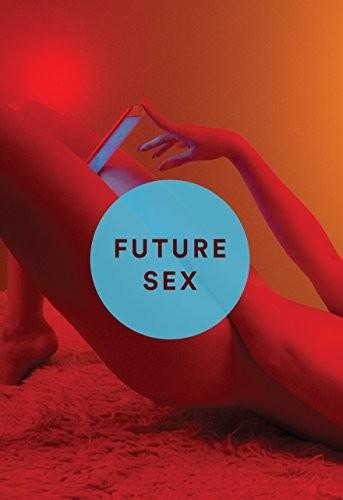
Future Sex
by
Emily Witt
Published 10 Oct 2016
It is not in a pharmaceutical company’s best interest to innovate away from a profitable and widely used once-a-day pill and toward a long-acting, cheaper alternative. Because contraceptives are taken by wide populations of healthy people, the barriers for testing and regulatory approval are high. What innovation there has been in recent decades has largely come from the government, or from philanthropic organizations such as the Gates Foundation. Changes in sexual behavior—more partners on average, longer periods of sexual activity outside of marriage—coincided with the decrease in funding for research into contraception. The technologies we use today were invented for a different era of sexual morals. I rarely considered, when undergoing another lecture by a physician about “risky” sexual behavior (namely sex without a condom), that I was experiencing the consequences of a research paradigm rooted in the expectations of half a century ago.

Imagining India
by
Nandan Nilekani
Published 25 Nov 2008
The rural initiative, for instance, has attempted to “communitize” health care efforts across villages through a massive ground force of accredited social health activists (ASHAs), who interface with government health centers and advise people on preventive and basic care. Lately, we have also seen more ambitious efforts such as the PHFI Dr. Reddy heads, which—in a public-private partnership with the Indian government, the Gates Foundation and Indian philanthropists—is developing seven public institutes of public health. The PHFI is attempting to address manpower shortages in rural areas by training many more health workers. Our approach to health still has some large blind spots. India has the advantage of having witnessed the massive health impacts of industrialization in both Europe and the United States since the 1950s, and we have a chance to avoid the same booby trap of soaring health costs and lifestyle-disease epidemics.
…
Together with the Ford Foundation, set up by yet another American entrepreneur, Henry Ford, it also played a significant role in India’s green revolution by funding new farming ideas as well as the high-yielding dwarf varieties of wheat and rice. This culture of philanthropy still holds strong in the United States and Europe—the Gates Foundation, funded by Bill and Melinda Gates, has worked toward better health care and school education for the poor around the world. If our entrepreneurs do not similarly put their newfound wealth to socially productive use, their permission to make money can quickly be withdrawn. It is not as if the idea is entirely new to India.

100 Plus: How the Coming Age of Longevity Will Change Everything, From Careers and Relationships to Family And
by
Sonia Arrison
Published 22 Aug 2011
Once we reach the point at which people realize that they will be living significantly longer themselves, the fertility rates may change. Historically, as people became wealthier and better educated, two aspects positively correlated with greater longevity, they tended to have fewer children. Speaking from his experience with the Gates Foundation, Bill Gates notes, “In places like Thailand and Bangladesh, it has already been shown that, with proper education and adequate medical care, people choose to have a number of children that their family can support.”10 Even though this is certainly true, some research now suggests that the trend of fertility decline associated with wealth may actually be one side of a J-shaped curve, with fertility going back up as people become even wealthier.11 If this turns out to be true, the “rule” that richer societies have fewer children may be wrong over the long run.
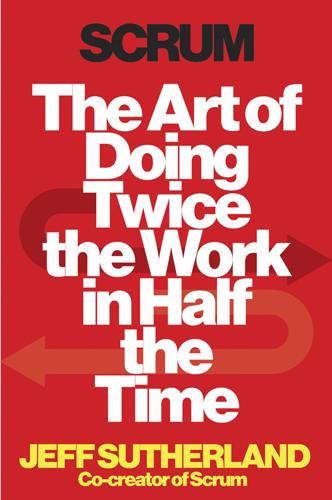
Scrum: The Art of Doing Twice the Work in Half the Time
by
Jeff Sutherland
and
Jj Sutherland
Published 29 Sep 2014
He says that each time a group asks for a feature set, his team rates it on a scale of 1 to 7 on three questions: 1. How important is this work to the mission of helping the poor? 2. How will this feature contribute to the work of the CKWs? 3. Is there partner support for the feature? (The Foundation prefers to work with partners such as the Gates Foundation rather than alone.) This allows Kamara to prioritize the work using objective criteria. Before Scrum, he says, people were asking for everything at once. And with the limited resources of a nonprofit, they couldn’t do everything, so the effect was doing nothing. Now in each Sprint the different groups who want features come in and pitch what they want done, and in a transparent way they see exactly how their feature stacks up against others.
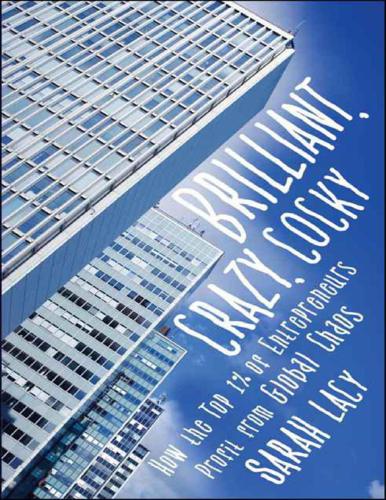
Brilliant, Crazy, Cocky: How the Top 1% of Entrepreneurs Profit From Global Chaos
by
Sarah Lacy
Published 6 Jan 2011
Eko had just 6,000 accounts before the switch in strategy. It added 10,000 in January 2010 and was soon adding 20,000 accounts per month. But costs are going up, too. Sinha, who made some money founding a previous company, Six DEE Telecom Solutions, bootstrapped Eko, along with a $1.78 mil ion grant from the World Bank and The Gates Foundation. But in 2010 that money was running low, and finding more wasn’t easy. VCs in India like to back proven companies, and Eko takes more money to prove it can be big. Sinha talks about the days after he sold his last company. He made more money in his early thirties than most of his family ever had.
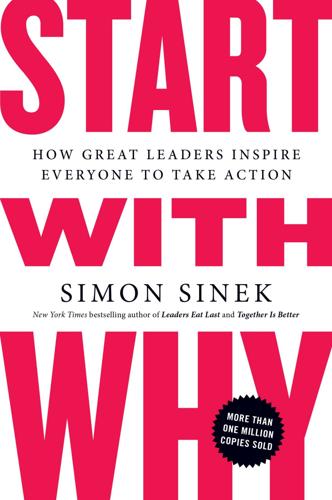
Start With Why: How Great Leaders Inspire Everyone to Take Action
by
Simon Sinek
Published 29 Oct 2009
Though Microsoft had changed since its founding, the impact was never as dramatic because at least Bill Gates was there, the physical embodiment of the cause that inspired his executives and employees. Microsoft is just one of the tangible things Gates has done in his life to bring his cause to life. The company is one of the WHATs to his WHY. And now he’s off to do something else that also embodies his cause—to use the Gates Foundation to help people around the world wake up every day to overcome obstacles so they too can have an opportunity achieve their potential. The only difference is he’s not doing it with software anymore. Steve Ballmer, a smart man by all accounts, does not physically embody Gates’s vision of the world.
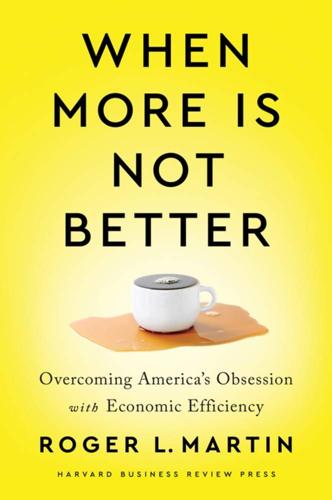
When More Is Not Better: Overcoming America's Obsession With Economic Efficiency
by
Roger L. Martin
Published 28 Sep 2020
Jackie Wattles, Ben Geier, and Matt Egan, “Wells Fargo’s 17-Month Nightmare,” CNNMoney, February 5, 2018. 5. Roger L. Martin, “The Rise (and Likely Fall) of the Talent Economy,” Harvard Business Review, October 2014. 6. “Billionaires: The Richest People in the World,” Forbes, March 5, 2019. 7. John Doerr, Measure What Matters: How Google, Bono, and the Gates Foundation Rock the World with OKRs (New York: Portfolio, 2018). 8. William J. Kolasky and Andrew R. Dick, “The Merger Guidelines and the Integration of Efficiencies into Antitrust Review of Horizontal Mergers,” Antitrust Law Journal 71, no. 1 (2003): 207. 9. Alberto Wallis, “The Wireless Carrier Market: A Two-Horse Race,” Seeking Alpha, June 24, 2019. https://seekingalpha.com/article/4271824-wireless-carrier-market-two-horse-race. 10.
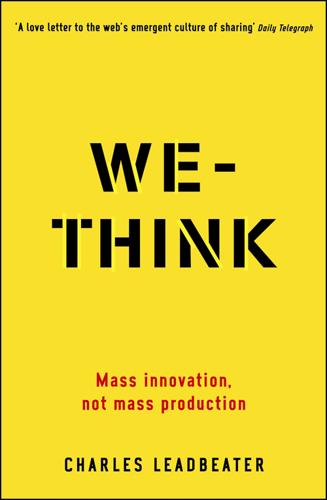
We-Think: Mass Innovation, Not Mass Production
by
Charles Leadbeater
Published 9 Dec 2010
Open access should particularly benefit the developing world, where Western journals are often prohibitively expensive. As China, India, Brazil and South Africa invest more in scientific research it seems likely they will adopt open-access policies. China, the world’s second-largest R & D funder, has mandated that all scientific data collected through publicly funded programmes should be open-access. The Gates Foundation has taken a similar step for data on HIV/ Aids. One product of open access will be new global repositories of shared scientific knowledge. Archives of open-access research are being created, such as the eScholarship repository at the University of California. The oldest open-access repository of scientific articles, arXiv, which has been going since 1991, has more than 400,000 articles on physics.

Social Life of Information
by
John Seely Brown
and
Paul Duguid
Published 2 Feb 2000
Researchers looking for a better digital representation are made increasingly aware of the integrity behind the book's division into pages, chapters, and other recognizable chunks. There is still much debate about how best to address these. 11 See Robert Wilensky in Pretext Forum, 1997. 12. One of the most talked about contributions to the public library of recent years has been the admirable gift of computers and software to libraries by the Gates Foundation. As Geoffrey Nunberg (1998) points out, however, no one quite knows how libraries will afford to maintain such equipment. The unforeseen hunger of library technology often leads to bites out of the book budget, thus setting potentially complementary systems against one another. 13. One of paper's most intriguing complementary properties is endurance.
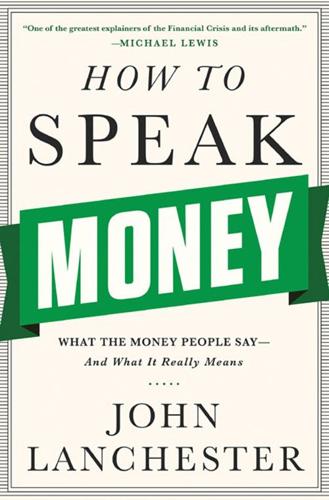
How to Speak Money: What the Money People Say--And What It Really Means
by
John Lanchester
Published 5 Oct 2014
There are two camps, one in favor of aid and one not: the powerfully argued work of William Easterly stands out in the anti-aid field, thanks to his books The White Man’s Burden and The Tyranny of Experts. Damibisa Moyo’s Dead Aid is strongly argued too. A considered argument from the other side of the debate is Paul Collier’s The Bottom Billion, and the annual letter from the Gates Foundation is indispensable reading for anyone interested in the question. The internet offers many superb resources on economics, as well as lively debates that respond to news and data in real time. There is no better place to begin than Twitter: I would start by following Tim Harford, Tyler Cowen, Aditya Chakrabortty, and Paul Kedrosky.

Artificial Unintelligence: How Computers Misunderstand the World
by
Meredith Broussard
Published 19 Apr 2018
Usually, the people in charge neglect to specify all the features they need in a software system at the beginning of the project. Every time a new software feature is added, it increases the cost and pushes the launch deadline out. It’s called scope creep. As the head of Microsoft, Bill Gates probably led more large-scale software development efforts than anyone else. Viewed this way, it makes perfect sense that the Gates Foundation would have stepped in to finalize the standards, get states to agree to the standards, and then implement curricula and testing to measure performance relative to the standards. It’s an elegantly engineered solution. If people had managed to agree on the standards and the standards didn’t change for a period of years, it might have worked.

Big Business: A Love Letter to an American Anti-Hero
by
Tyler Cowen
Published 8 Apr 2019
For instance, Americans have applied their business-based cooperative capabilities to civil society endeavors, such as the organization of charities and political movements, including the environmental movement. Bill Gates carries his Microsoft managerial experience to the public health efforts of the Gates Foundation. To cite some more local and less visible examples, a lot of good CFOs do volunteer work for their churches and help keep their finances in order. American business originally borrowed organizational skills from early American religion, but the expertise has been traded in both directions, so business gives Americans finely honed, market-tested skills for working in teams, whether in the service of God, Mammon, or charity.
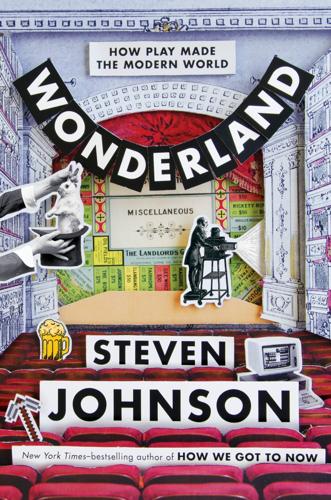
Wonderland: How Play Made the Modern World
by
Steven Johnson
Published 15 Nov 2016
I’m especially grateful for the research help early on from Jemila Twinch and Fred Hepburn. Matt Locke, Ian Steadman, and the rest of the How We Got to Next team have supported my work and research in countless ways over the past two years. At PBS and WETA, thanks to Beth Hoppe and Bill Gardner; at the Lemelson Foundation, Carol Dahl, Tak Kendrick, and David Coronado; and at the Gates Foundation, Dan Brown and Miguel Castro. I first began mulling the idea of a book about the cultural innovations of play while shooting the “Sound” episode of How We Got to Now, which was the most Wonderland-like episode of that season. Thanks to Julian Jones for supporting those early ideas, and for not getting me killed in the Anza-Borrego desert.
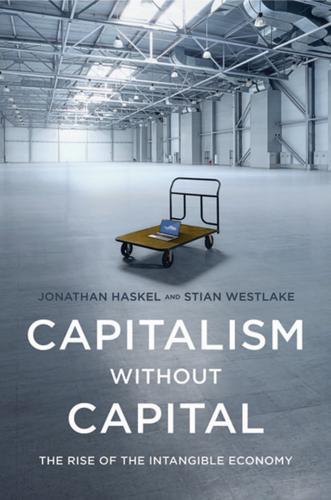
Capitalism Without Capital: The Rise of the Intangible Economy
by
Jonathan Haskel
and
Stian Westlake
Published 7 Nov 2017
Elon Musk is sometimes described as a systems innovator, aspiring to develop new products in a number of related fields (electricity storage, solar power, electric cars) or in complex systems (space procurement, carbon credits). Systems innovation is also widely discussed in the not-for-profit sector, particularly as large-scale funders such as the Gates Foundation and Bloomberg Philanthropies seek to change whole systems at once, such as public health in developing countries or city government. Since even rich organizations are not usually big enough to directly control major economic systems, systems innovation relies on leadership: the ability to convince other organizations, networks of partners, and even competitors to do what the systems innovator wants.
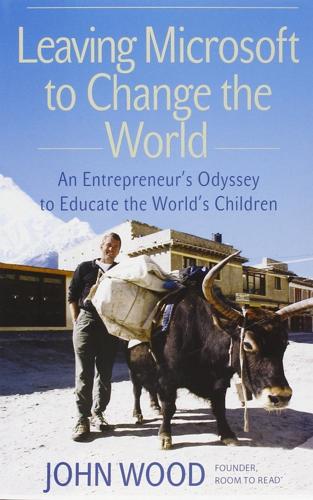
Leaving Microsoft to Change the World: An Entrepreneur's Odyssey to Educate the World's Children
by
John Wood
Published 28 Aug 2006
The children of Nepal obviously needed me more than my employer did. It was time to jump out of the plane and run my own show. * * * BILL’S BATBOY Despite the demotivation inherent in Bill’s China visit, I can’t help but respect him. Not only did he start a great company at a young age, but the work he and Melinda are doing through the Gates Foundation will positively influence the lives of millions. I am well aware that even though it was risky to leave Microsoft to start my own charity, I had a nice “safety net” in place because of the company’s stock-options program. Many people use the word generous when talking about this compensation scheme, but I think of it as visionary.

Digital Bank: Strategies for Launching or Becoming a Digital Bank
by
Chris Skinner
Published 27 Aug 2013
Making a payment becomes a basic human right In conclusion, the fact that mobile phone ubiquity is creating a wirelessly connected planet, is a key part of changing our world for more inclusion. First, six billion people now have 1:1, P2P connections. You only need to look at mobile densities by continent to realise how ubiquitous these devices have become. According to a 2012 survey by the Gates Foundation, the World Bank and Gallup, more than 10% of adults said they had used mobile money in the last year and, of the 20 countries surveyed, 15 were in Africa. This is illustrated particularly well by Somalia, a country which lacks a functioning government but 34% of adults use mobile money (often to receive remittances from family members abroad).

Deadly Choices: How the Anti-Vaccine Movement Threatens Us All
by
Paul A. Offit M.D.
Published 28 Dec 2010
By 2006, polio originating in Nigeria had spread to twenty previously polio-free countries in Africa and Asia—more than five thousand people were severely and permanently paralyzed. “Such large-scale polio outbreaks haven’t been seen in quite a long time,” said Tammam Aloudat, a senior health official at the International Red Cross. Walter Orenstein, deputy director for the Gates Foundations’ Global Health Program, saw a parallel with the U.S. measles outbreaks of 2008. “Polio is only a plane ride away from the United States,” said Orenstein. “If we let our guard down, if our immunization coverage drops, there is certainly the possibility of a polio outbreak.” Orenstein doesn’t think it will end with polio: “Diphtheria could also come back.

Alpha Girls: The Women Upstarts Who Took on Silicon Valley's Male Culture and Made the Deals of a Lifetime
by
Julian Guthrie
Published 15 Nov 2019
Before long, Theresia and Jennifer began attracting high-profile investors, including Melinda Gates, wife of Microsoft co-founder Bill Gates and co-chair of the Bill & Melinda Gates Foundation. Gates had quietly turned her attention to the world of venture capital after learning about the dismal numbers of women in venture and in tech. Theresia and Melinda Gates met for breakfast at the Rosewood Hotel on Sand Hill Road. Melinda wanted to apply what she had learned from the Gates Foundation’s work in global health to improving conditions for women in tech. The boys’ club of Silicon Valley, as Melinda saw it, was both harmful to society and bad for business. If tech and Silicon Valley shaped the future, Melinda asked, what happened when there were so few women? As Gates began to study the issues, she had to decide whether to put her money and energy into helping to advance entrepreneurs or venture capitalists.

Can't Even: How Millennials Became the Burnout Generation
by
Anne Helen Petersen
Published 14 Jan 2021
Marissa Meyer, formerly the CEO of Yahoo, famously refused to take more than two weeks of maternity leave after giving birth to her first child—a symptom of a work culture that will not accommodate the realities of parenthood, but also a symptom of her willingness to operate by and implicitly strengthen that same culture. There are exceptions, of course: Patagonia has led the way in establishing subsidized, on-site childcare; at the Gates Foundation, every employee received a full year of parenting leave (which was recently cut to six months, plus $20,000 to pay for childcare costs). But solutions on the corporate level are not enough: As we’ve seen, the fissuring of the marketplace ensures they’ll only extend to a certain class and echelon of worker.
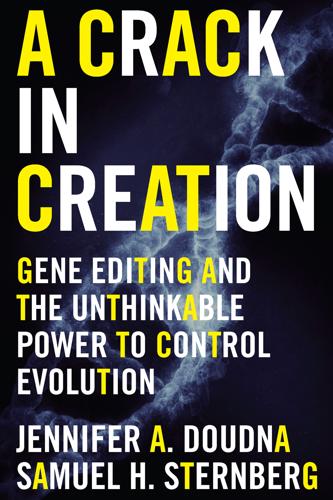
A Crack in Creation: Gene Editing and the Unthinkable Power to Control Evolution
by
Jennifer A. Doudna
and
Samuel H. Sternberg
Published 15 Mar 2017
Our understanding of CRISPR seemed to grow every week or two, and the enzymes we were exploring had many interesting, unusual properties—properties that, we recognized, might have practical uses. For example, we started toying around with the idea of developing the new RNA-cutting enzymes into a kind of diagnostic tool to detect signature RNA molecules in human viruses, including dengue virus and the yellow fever virus; we received money from the Gates Foundation to put that idea into practice. Soon we partnered with a bioengineering lab at Berkeley to combine this technology with their innovative system for manipulating tiny amounts of liquid to detect viruses in blood or saliva. Then in 2011, Rachel and I founded a company called Caribou Biosciences to commercialize the Cas proteins.

There Is No Planet B: A Handbook for the Make or Break Years
by
Mike Berners-Lee
Published 27 Feb 2019
In short: food from the deserts. Graphene promises a huge advance in desalination efficiency whilst the solar revolution provides the power. • The development of rice strands that are capable of a more efficient type of photosynthesis, as deployed by maize. (Sometimes called C4 rather than C3 photosynthesis.) The Gates Foundation is pumping £14m into this37. • Genetic modification: Carefully applied and freely available, this could help with higher yields, better nutritional content and lower greenhouse gas emissions, less water consumption and better climatic resistance. • Waste reduction apps are emerging to connect food that needs eating quickly with people who could put it to good use.

Nomad Century: How Climate Migration Will Reshape Our World
by
Gaia Vince
Published 22 Aug 2022
Much of that cooperation occurred in the absence of conflict or authoritarian leadership. Consider, also, the cooperation that nations undertook to develop drugs and vaccines, to share scientific data and health interventions. Consider that populations everywhere, along with big corporations such as Astra-Zeneca, and NGOs such as the Gates Foundation, insisted that any vaccine be also made available to the poorest of our global society and not be sequestered or locked away behind patents by any one company or rich state. Yes, there was resistance, and certainly there are huge inequities, yet within two years of the virus first being identified, a billion doses of protective vaccine had been distributed and received by well over half of the world’s poorest people.

The Meritocracy Trap: How America's Foundational Myth Feeds Inequality, Dismantles the Middle Class, and Devours the Elite
by
Daniel Markovits
Published 14 Sep 2019
utm_term=.01a53a2035db.For more on philanthropy as a form of political power, see, e.g., Iain Hay and Samantha Muller, “Questioning Generosity in the Golden Age of Philanthropy,” Progress in Human Geography 38, no. 5 (2014): 635–53; Lenore Ealy, “The Intellectual Crisis in Philanthropy,” Society 51, no. 1 (February 2014): 87–96; Kenneth Saltman, “From Carnegie to Gates: The Bill and Melinda Gates Foundation and the Venture Philanthropy Agenda for Public Education,” in The Gates Foundation and the Future of U.S. “Public” Schools, ed. Philip Kovacs (New York: Taylor & Francis, 2011), 1–20; Robin Rogers, “Why Philanthro-Policymaking Matters,” Society 48, no. 5 (September 2011): 376–81; Ben Williamson, “Mediators and Mobilizers of Curriculum Reform: Education Policy Experts of the Third Sector,” paper presented at the University of Stirling School of Education, December 5, 2012; Georgia Levenson Keohane, Social Entrepreneurship for the 21st Century: Innovation Across the Nonprofit, Private, and Public Sectors (New York: McGraw Hill Education, 2013); and Amy Brown, “Philanthrocapitalism: Race, Political Spectacle, and the Marketplace of Beneficence in a New York City School,” in What’s Race Got to Do with It?
…
See also Anthony Nownes, Total Lobbying: What Lobbyists Want (and How They Try to Get It) (New York: Cambridge University Press, 2006). “in effect . . . subsidized”: Motoko Rich, “A Walmart Fortune, Spreading Charter Schools,” New York Times, April 25, 2014, accessed July 20, 2018, www.nytimes.com/2014/04/26/us/a-walmart-fortune-spreading-charter-schools.html. Similarly, the Gates Foundation’s belief that smaller schools foster competition produced over three hundred small schools in New York City in a decade. See Jessica Shiller, “City Prep: A Culture of Care in an Era of Data-Driven Reform,” in Critical Small Schools: Beyond Privatization in New York City Urban Educational Reform, ed.

Superforecasting: The Art and Science of Prediction
by
Philip Tetlock
and
Dan Gardner
Published 14 Sep 2015
Of course politics will always be politics and politicians will always factor in partisan advantage and ideological conviction, but there is plenty of evidence that rigorous analysis has made a real difference in government policy.10 The same thinking is transforming charitable foundations, which are increasingly making funding contingent on stringent program evaluation. Those that deliver are expanded, those that fail are shuttered. In line with Bill Gates’s insistence on having clear goals and measures, the Gates Foundation, one of the world’s largest, is renowned for the rigor of its evaluations. Sports provide striking examples of the growth and power of evidence-based thinking. As James Surowiecki noted in the New Yorker, both athletes and teams have improved dramatically over the last thirty or forty years.

The Big Necessity: The Unmentionable World of Human Waste and Why It Matters
by
Rose George
Published 13 Oct 2008
His method of working now has a name: social entrepreneurship, a concept popularized by the American economist Bill Drayton, who runs a foundation that funds people who want to combine business with charity. Social entrepeneurs have been getting more attention in recent years (Mechai “Mr. Condom” Viravaidya, another social entrepreneur, was recently awarded a prestigious $1 million prize by the Gates Foundation), but their influence has yet to penetrate government offices. Trevor needs access to education planners, but he claims he can’t get any. He says that because he’s not a charity, there’s no place for him in government contracts. So I take Trevor with me on a round of official sanitation appointments.
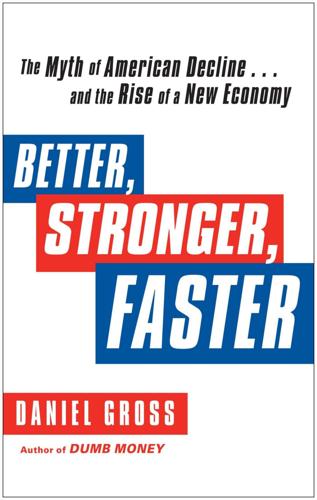
Better, Stronger, Faster: The Myth of American Decline . . . And the Rise of a New Economy
by
Daniel Gross
Published 7 May 2012
Highly productive American farmers are feeding the world. The planes manufactured by Boeing in the Pacific Northwest provide mobility to people in Africa. General Electric’s gas turbines, produced in South Carolina, are bringing light to the many dark places of the world. Then there are the systems and ideas that American wealth makes possible: the Gates Foundation’s projects on malaria, the Clinton Global Initiative’s work on AIDS. The Endeavor Foundation, a small nonprofit based in New York, is spreading the gospel of entrepreneurship, mentoring, and supporting small-business creation to great effect in Latin America, South Asia, and the Middle East.

Zero-Sum Future: American Power in an Age of Anxiety
by
Gideon Rachman
Published 1 Feb 2011
But few begrudged Gates his money. He had become the world’s richest man through his own brilliance and drive. He was living refutation of the cynical old maxim that “behind every great fortune lies a great crime.” In the best traditions of American philanthropy, Gates was determined to use his money to improve the world. The Gates Foundation, founded in 1994, committed billions of dollars to development in poor countries, health, and education. As a journalist, I have always tried to make it a rule not to be overawed by anybody I meet. But Gates was an exception. I first met him in January 2008 (at Davos, inevitably). There was something genuinely awe-inspiring about seeing all that energy, determination, and brilliance applied to the problems that he wanted his foundation to solve.
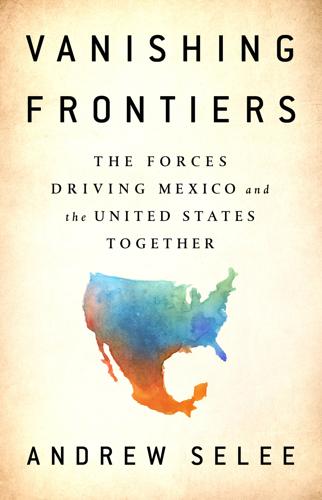
Vanishing Frontiers: The Forces Driving Mexico and the United States Together
by
Andrew Selee
Published 4 Jun 2018
“We were the first Mexican start-up accepted in Y-Combinator,” Silicon Valley’s most prestigious technology accelerator, says José Luis Nuño, one of the company’s founders. That experience helped put them in touch with venture capitalists willing to back them. Now, with several millions of dollars in investment from the Gates Foundation and US and Mexican venture capital funds, Unima is about ready to initiate production of the diagnostic test in its own plant in Guadalajara. It hopes eventually to distribute the tests not just in Mexico but around the world, especially in parts of Africa where access to medical care is even more limited than in rural Mexico.
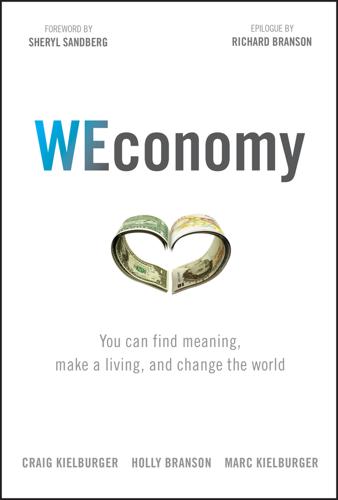
WEconomy: You Can Find Meaning, Make a Living, and Change the World
by
Craig Kielburger
,
Holly Branson
,
Marc Kielburger
,
Sir Richard Branson
and
Sheryl Sandberg
Published 7 Mar 2018
Buffett's area of expertise is scale and efficiency. Someone else does the dirty work during the initial set-up, and he comes in with capital and strategic strikes to make it bigger and better. Buffett is a hunter, not a founder. He applies the same strategy to philanthropy. Buffett pledged the Gates Foundation $31 billion with a series of stipulations akin to that of an investment—at least one of the Gateses (Bill or Melinda) must remain actively involved for payments to continue, for instance.6 Here's a guy entirely justified in starting his own foundation. At the time of the pledge in 2006, Buffett was worth $42 billion and named the second wealthiest man in the world.7 But he didn't start another charity.
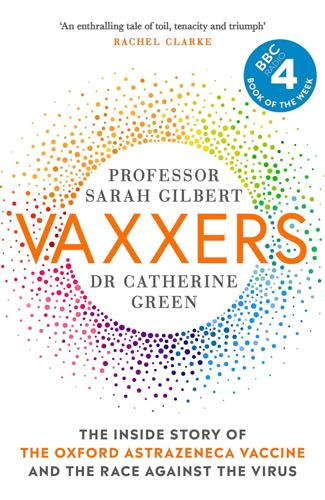
Vaxxers: The Inside Story of the Oxford AstraZeneca Vaccine and the Race Against the Virus
by
Sarah Gilbert
and
Catherine Green
Published 7 Jul 2021
There was no danger that the trial participants had been infected with HIV, but since there was also no chance that the HIV test would be changed to allow the vaccine to be used without interfering with the test, vaccine development had to stop.2 Within this landscape, research funding bodies can be reluctant to support development work beyond the earliest, least costly, stages, when they know that without the support of a large commercial partner it is unlikely to reach completion. This is the ‘market failure’ that organisations like CEPI and Gavi and the Gates Foundation have been trying to address. We call it the ‘funding valley of death’ because so many hopeful projects fall into it, never to be seen again. It is an issue we had been trying to address at Oxford University, where we took the view that we needed to be able not only to research a vaccine candidate in the lab, but also to manufacture it for clinical trials, and conduct at least the phase I safety trials ourselves.

Supremacy: AI, ChatGPT, and the Race That Will Change the World
by
Parmy Olson
At a hotel and conference center that they had rented out, they announced the plan to turn DeepMind into a separate global interest company. They told staff that DeepMind would eventually become a nonprofit organization in which Google would be a stakeholder and that it would be like other organizations with a public interest, like the United Nations and the Gates Foundation. The goal was to become an organization for good, they explained, and guide AI in a way that was positive for the world. Instead of being a financial asset of Google, DeepMind would enter an exclusive licensing agreement with the company instead, while pursuing its mission to solve the world’s problems.
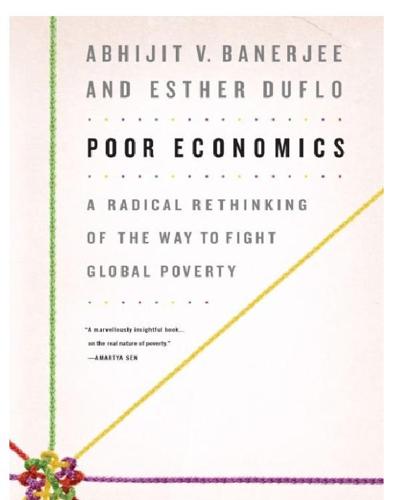
Poor Economics: A Radical Rethinking of the Way to Fight Global Poverty
by
Abhijit Banerjee
and
Esther Duflo
Published 25 Apr 2011
With billions of poor people waiting to be insured, even a tiny profit per policy could make it a tremendous business proposition, and at the same time, it would also be a big help to the world’s poor. All that seems to be lacking is someone to organize this market: This has prompted international organizations (such as the World Bank) and large foundations (likes the Gates Foundation) to invest hundreds of millions of dollars to encourage the development of insurance options for the poor. There are of course a number of obvious difficulties with providing insurance. These problems are not specific to the poor. They are fundamental problems, but they are amplified in poor countries, where it is more difficult to regulate insurers and monitor the insured.
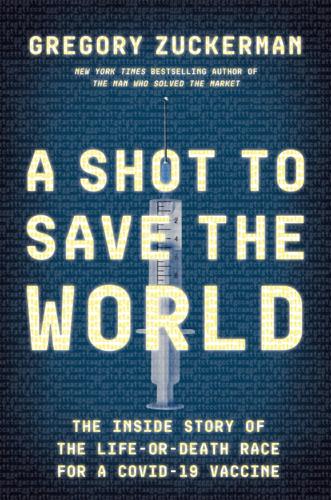
A Shot to Save the World: The Inside Story of the Life-Or-Death Race for a COVID-19 Vaccine
by
Gregory Zuckerman
Published 25 Oct 2021
Bancel and Hoge didn’t know where the money was going to come from. Time was ticking, rivals were acting, people were dying, and Moderna was sitting on its hands. It was eating the team up. Throughout February, March, and April, Bancel begged for money. He asked Trevor Mundel, a top leader of the Gates Foundation. He reached out to an arm of the World Health Organization called Covax. He phoned or went on Zoom calls with representatives of other government bodies and charitable foundations. Each time, he presented reasons why Moderna deserved financial assistance. As Bancel became frustrated by the rejections, his requests became more plaintive.

Zucked: Waking Up to the Facebook Catastrophe
by
Roger McNamee
Published 1 Jan 2019
While we were not actively working with a state attorney general, we had built a relationship with the attorney general of New York and members of his team. I offered to make an introduction. It made sense to initiate relationships with other attorneys general. Two days later, on Wednesday, Tristan and I went to Seattle to meet the chief of staff to the attorney general of Washington, the adolescent mental health team at the Gates Foundation, and the CEO of Microsoft. The three had very different interests and no prior exposure to us, so the best we could hope for would be to plant seeds. We did that in the first two meetings, before going to Microsoft headquarters for a meeting with the CEO, Satya Nadella, and the head of business development, Peggy Johnson.

The Divide: A Brief Guide to Global Inequality and Its Solutions
by
Jason Hickel
Published 3 May 2017
Yes, some aid goes a long way towards making people’s lives better, but it doesn’t come close to compensating for the damage that the givers of aid themselves inflict. Indeed, some of this damage is caused by the very groups that run the aid agenda: the World Bank, for example, which profits from global South debt; the Gates Foundation, which profits from an intellectual-property regime that locks life-saving medicines and essential technologies behind outlandish patent paywalls; and Bono, who profits from the tax haven system that siphons revenues out of global South countries.31 This is not an argument against aid as such.
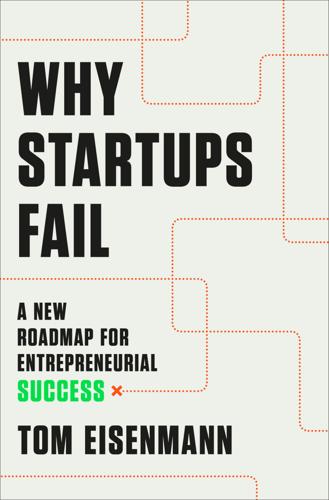
Why Startups Fail: A New Roadmap for Entrepreneurial Success
by
Tom Eisenmann
Published 29 Mar 2021
Adding Management Systems: For research on patterns of system adoption by startups, see Anthony Davila, George Foster, and Ning Ja, “Building Sustainable High-Growth Startup Companies: Management Systems as an Accelerator,” California Management Review, Spring 2010. The OKR (objectives and key results) system for performance management, used in many tech companies, is described in John Doerr, Measure What Matters: How Google, Bono, and the Gates Foundation Rock the World with OKRs (New York: Portfolio, 2018); and First Round Review, “AltSchool’s CEO Rebuilt Google’s Performance Management System to Work for Startups—Here It Is,” First Round Review website, which interviews Max Ventilla, who discusses adapting OKRs to startups. Venture capitalist Ben Horowitz defines: Ben Horowitz, What You Do Is Who You Are: How to Create Your Business Culture (New York: HarperCollins, 2019).

The Glass Half-Empty: Debunking the Myth of Progress in the Twenty-First Century
by
Rodrigo Aguilera
Published 10 Mar 2020
Evidence from China”, Oxford Review of Economic Policy, 32(3), Sep. 2016, https://doi.org/10.1093/oxrep/grw022 59 Hoang, H.M. and Hung, N-V., “Economic Aspects of Sanitation in Developing Countries”, Environmental Health Insights, 5, Jan. 2011, https://doi.org/10.4137%2FEHI.S8199 60 UNCTAD Trade and Development Report 2018: Power, Platforms and the Free Trade Delusion (UNCTAD, 2018), pg. 121, https://unctad.org/en/pages/PublicationWebflyer.aspx?publicationid=2227 61 Ridley, M., “Case for free trade has never been stronger”, Times, 10 Feb. 2017, https://www.thetimes.co.uk/article/case-for-free-trade-has-never-been-stronger-lkw0rhtnz 62 Belluz, J., “The Media Loves the Gates Foundation. These Experts Are More Skeptical”, Vox, 10 Jun. 2015, https://www.vox.com/2015/6/10/8760199/gates-foundation-criticism 63 Murray, S., “Why It Is Hard to Attract Private Capital to Fight Against Malaria”, Financial Times, 25 Apr. 2019, https://www.ft.com/content/d2d6db24-4fbc-11e9-8f44-fe4a86c48b33 64 The UN World Water Development Report 2015, Water for a Sustainable World (UNESCO, 2015), pg. 3 65 Norberg, J., “Despite many obstacles, the world is getting better”, Guardian, 14 Feb. 2017, https://www.theguardian.com/global-development-professionals-network/2017/feb/14/despite-many-obstacles-the-world-is-getting-better 66 Manuel, M. et al., “Financing the end of extreme poverty”, Overseas Development Institute, Sep. 2018, https://www.odi.org/publications/11187-financing-end-extreme-poverty 67 Pinker, S., Enlightenment Now, pg. 25 68 According to the World Bank, average world GDP per capita was $10,218 in 2015.

Who’s Raising the Kids?: Big Tech, Big Business, and the Lives of Children
by
Susan Linn
Published 12 Sep 2022
Weeks later, the Colorado State Board of Education severed its relationship with inBloom.” Fortunately, small groups of parents were protesting inBloom in every one of the other pilot districts around the country. Protests in so many of these districts were so successful in stopping the proposed platform that the Gates Foundation shut down the project in April 2014.9 One lesson to be learned from Nora’s and Rachael’s experiences is the importance of finding allies. It’s hard, often ineffective, and sometimes painful to be a lone voice calling for change. Nora was fortunate. Even though her daughter’s teacher and school principal dismissed her concerns, she found district administrators who shared her unease and had the power to do something about it.

Markets, State, and People: Economics for Public Policy
by
Diane Coyle
Published 14 Jan 2020
The size of the trials has grown much bigger (one was conducted in half the cities of France; another in the Indian state of Andhra Pradesh, which has the same population as Germany). The American Economic Association now maintains a registry of RCTs in economics (at https://www.socialscienceregistry.org/). The initial rapid spread of RCTs in developing countries came about because aid donors, both governments and non-governmental bodies such as the Gates Foundation, have increasingly insisted on empirical evidence that their money is being spent well (box 8.7). This donor pressure has been absent in the rich economies, so the use of RCTs is more limited, albeit spreading slowly, often in the guise of pilot policies. Although taxpayers would surely like to know whether their money is being spent well, politicians are less keen to have their policy commitments tested experimentally.

The Measure of Progress: Counting What Really Matters
by
Diane Coyle
Published 15 Apr 2025
However, there is a growing focus on the digital government stack, including digital payments systems and central bank digital currencies (Bank for International Settlements 2023). There have been many digital government initiatives in many countries: the New America think tank has a useful tracker. Increasingly, policy debates speak of this stack as digital public infrastructure (DPI), strongly advocated in the developing country context by the Gates Foundation and praised by institutions like the World Bank and G20 (World Bank 2022). One of the Gates documents describes it in this way: “DPI is a digital network that enables countries to safely and efficiently deliver economic opportunities and social services to all residents. DPI can be compared to roads, which form a physical network that connects people and provides access to a huge range of goods and services” (Hong 2023).
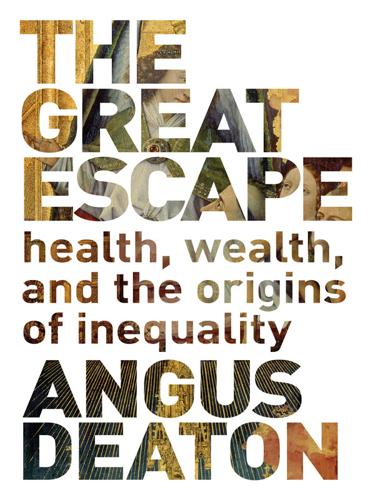
The Great Escape: Health, Wealth, and the Origins of Inequality
by
Angus Deaton
Published 15 Mar 2013
One such advance market commitment has already been successful, and children are now being immunized in ten countries against pneumococcal disease, which currently kills half a million children each year. The main donors were Canada, Italy, and Britain, with lesser amounts from Norway, Russia, and the Gates Foundation. The scheme is run by the Global Alliance for Vaccines and Immunisation (GAVI Alliance), whose website provides details on the manufacturers, as well as the rules of the scheme for both manufacturers and donors.55 Aid could also be used not to make loans but to provide advice. The current structure of the World Bank makes it difficult to provide substantial technical assistance except in association with loans—which effectively pay for the assistance.

Digital Gold: Bitcoin and the Inside Story of the Misfits and Millionaires Trying to Reinvent Money
by
Nathaniel Popper
Published 18 May 2015
“To me it feels like you are trying to get the whole world connected with something like Compuserve when everyone already has access to TCP/IP,” he said, and then paused anxiously to see what kind of response he would get. What he heard back from Gates was more than he could have reasonably hoped for. “You know what? I told the foundation not to touch Bitcoin and that may have been a mistake,” Gates said, amicably. “We are going to call you.” After Wences got back to California, he received an e-mail from the Gates Foundation, looking to set up a time to talk. Not long after that, Gates made his first public comments praising at least some of the concepts behind Bitcoin, if not the anonymity. And so Bitcoin and its believers attracted one more person who was willing to give this new technology a look, and remain open to the possibility that the whole thing wasn’t, at least, entirely crazy.

The Blockchain Alternative: Rethinking Macroeconomic Policy and Economic Theory
by
Kariappa Bheemaiah
Published 26 Feb 2017
This call has been heard by innovators and is now being echoed by central bankers such as Andy Haldane, Neel Kashkari, and Mark Carney. But the main roadblock today seems to be not with technology but in the way regulations and polices need to be structured in order adapt to this new environment. As stated by Jake Kendall, the former director of research and innovation at the Gates Foundation, “…. [in terms of scaling democratizing financial services], a lot of it is not a technology problem but a regulatory issue or a business model issue,” (Microsoft Research Conference, 2016) Hence, prior to answering the questions of how much debt should be issued and how big can a firm be allowed to become before it poses systemic risks, we need to understand how the regulations and policies that govern these institutions need to be fabricated while keeping our future cashless economy in foresight.

Mbs: The Rise to Power of Mohammed Bin Salman
by
Ben Hubbard
Published 10 Mar 2020
Foreign officials stayed away, and U.S. Treasury Secretary Steven Mnuchin skipped the conference but met MBS privately in Riyadh. Media organizations that had signed up as official sponsors pulled out, including The New York Times, Bloomberg, and Fox Business. The Brookings Institution terminated a Saudi research grant, the Gates Foundation halted a partnership with MBS’s foundation, and lobbyists hired to promote Saudi Arabia ran for the exits, fearing for their reputations. As the conference approached, executives pleaded with MBS to postpone it, but he refused, not wanting to show weakness or imply culpability. So it went ahead, with an inauspicious start.

New Laws of Robotics: Defending Human Expertise in the Age of AI
by
Frank Pasquale
Published 14 May 2020
If they changed their hairstyle or makeup, they were liable to be confused for another girl. The school sent them for multiple face capture sessions. Other students rejected the cameras outright. One said, “I want to smash them.” Even in a country accustomed to mass surveillance, a second-by-second record of daily activities provoked outrage. When the Gates Foundation helped fund cognate biometrics in the United States (a galvanic skin response bracelet purporting to continuously measure student engagement with teaching), a public backlash forced the Foundation to backtrack. It is unclear, however, whether widespread critiques in China will have the same effect.

Rich White Men: What It Takes to Uproot the Old Boys' Club and Transform America
by
Garrett Neiman
Published 19 Jun 2023
These men include former NBA player and United States senator Bill Bradley, the first white presidential candidate to talk about white advantage; Ron Heifetz, whose work on adaptive leadership includes teaching a course at Harvard Kennedy School focused on anti-Black racism and sexism; and Jeff Raikes, former CEO of the Gates Foundation, who speaks to foundation audiences about white advantage.5 I’ve also found the examples included in the 2003 book edited by Cooper Thompson, Emmett Schaeffer, and Harry Brod White Men Challenging Racism: 35 Personal Stories to be instructive. While no one’s leadership is beyond critique or accountability, what these men share is a commitment to shaking ground near the epicenter of American power.
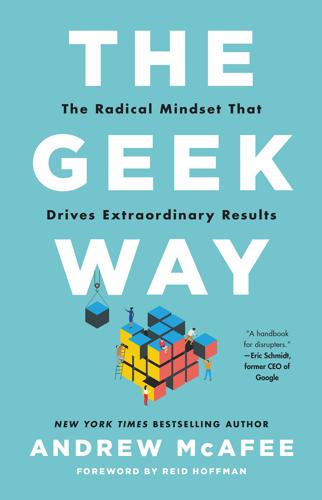
The Geek Way: The Radical Mindset That Drives Extraordinary Results
by
Andrew McAfee
Published 14 Nov 2023
Hughes, “Goodhart’s Law: Recognizing and Mitigating the Manipulation of Measures in Analysis,” CNA, September 2022, www.cna.org/reports/2022/09/goodharts-law#:~:text=Goodhart%27s%20Law%20states%20that%20%E2%80%9Cwhen,order%20to%20receive%20the%20reward. 73 tweeted a photo of himself: Patrick Collison (@patrickc), “Hit our engagement metrics this weekend! ,” Twitter, June 23, 2019, 8:33 p.m., https://twitter.com/patrickc/status/1142953801969573889?lang=en. 74 “OKRs and compensation”: John E. Doerr, Measure What Matters: How Google, Bono, and the Gates Foundation Rock the World with OKRs (New York: Portfolio/Penguin, 2018), loc. 181–82, Kindle. 75 “A zealous anchorwoman”: Nicholas Negroponte, Being Digital (New York: Alfred A. Knopf, 1996). 76 “you will be drawn to science itself”: Trivers, Folly of Fools, loc. 303, Kindle. 77 “The study of books”: Michel de Montaigne, Essays, trans.
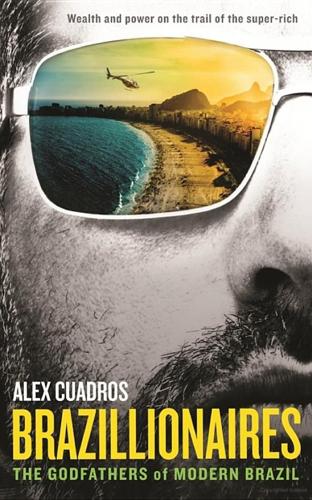
Brazillionaires: The Godfathers of Modern Brazil
by
Alex Cuadros
Published 1 Jun 2016
At those reaches, it’s impossible to spend all your money on beachfront villas and superyachts and such toys. That’s when you get into vanity projects, like when Jeff Bezos, the founder of Amazon, put down a quarter-billion dollars for The Washington Post. That was still just one percent of his wealth. You can burn through far more with philanthropy. Bill Gates has the Gates Foundation, Warren Buffett has the Giving Pledge. Mike Bloomberg has given more than a billion dollars to Johns Hopkins University. In the ladder of luxuries, art occupies a rung up near philanthropy. Purchasing art confers a patina of status and culture for money made in unsexy sectors like cement or packaged foods.
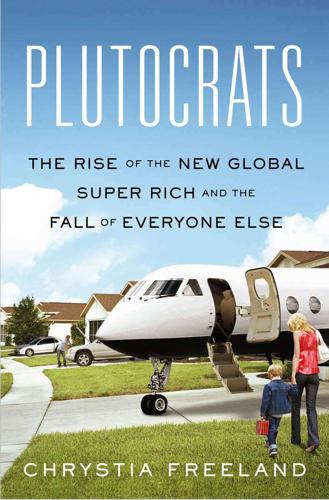
Plutocrats: The Rise of the New Global Super-Rich and the Fall of Everyone Else
by
Chrystia Freeland
Published 11 Oct 2012
PHILANTHRO-CAPITALISM Busson’s belief in applying business techniques to philanthropy is characteristic of the global super-elite’s approach to doing good. No one does this more effectively than Bill Gates, whose foundation, with its $33 billion war chest and rigorously analytical mind-set, has transformed charity, and sometimes public policy, around the world. Within the plutocracy, the Gates Foundation has had a decisive cultural impact. Gates and his co-donor Warren Buffett—not accidentally two of the world’s most visible and most admired billionaires—have made it de rigueur not only to give away a lot of your money but to be actively engaged in how it is spent. Gates has become an evangelist for this idea that capitalism must do good, and do-gooders must become more capitalist.
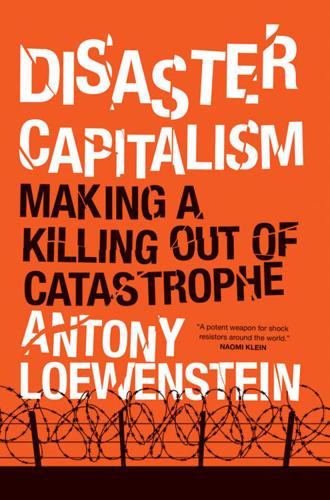
Disaster Capitalism: Making a Killing Out of Catastrophe
by
Antony Loewenstein
Published 1 Sep 2015
Geo Group’s annual report in the same year expressed concern at the growing movement towards “decriminalization of drugs and controlled substances” and how it might “potentially reduce demand for correctional facilities.”30 But making money from prisons remained an appealing option for venture capitalists. The Geo Group received millions of dollars from the Gates Foundation, founded by Bill and Melinda Gates, despite pressure from activists for them to withdraw their money because of company abuses. The foundation defended its actions. In 2014 its media spokesperson said: “We understand the passion of people standing up for injustice. That is what motivates us all at the foundation every day,” going on to explain that the foundation was contributing billions of dollars to good causes around the world.31 A more humane system for prisoners and immigrants is bad for the bottom line and would be fought bitterly all the way.
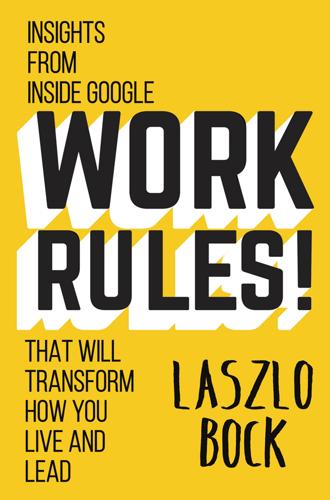
Work Rules!: Insights From Inside Google That Will Transform How You Live and Lead
by
Laszlo Bock
Published 31 Mar 2015
In 2007 I was chatting with Dr. Larry Brilliant, who was leading Google.org, our philanthropic arm, and had decades earlier helped eradicate smallpox in India as a member of the World Health Organization. He repeated to me a comment Bill Gates had made, and though my memory is now a bit foggy, it was along the lines of “The Gates Foundation can give $100 million toward curing malaria, and get no attention. You launch a flu-tracking product and get media from around the world. It’s not fair.” For whatever reason, people take a greater interest in what Google does than our size would suggest. That level of attention carries with it responsibility.
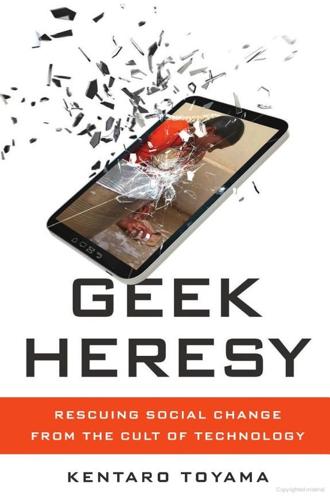
Geek Heresy: Rescuing Social Change From the Cult of Technology
by
Kentaro Toyama
Published 25 May 2015
At some point, Awuah was no longer attracted to the extra 10 percent of income, recognition, or accomplishment that he had spent years pursuing. He wanted work with a broader purpose. These kinds of stories are common fodder for heartwarming news articles, but they are rarely discussed by policymakers. No one in the US government, the World Bank, or the Gates Foundation is asking, “How do we encourage people through transformational internal epiphanies?” Partly, the problem is that today’s metric-focused technocrats all but laugh at what seem like soft intangibles. Partly, the problem is that policy is disconnected from fields that consider these changes of heart.

Frostbite: How Refrigeration Changed Our Food, Our Planet, and Ourselves
by
Nicola Twilley
Published 24 Jun 2024
He entered a venture competition at the university and won. “I kept coming back to all the new opportunities that would be created if you could solve this,” he said. “Finally, I was like, I don’t even have a girlfriend. If there’s a time to do this, it’s now.” * * * — In 2012, with a small grant from the Gates Foundation and some seed money from private investors, the newly minted Dr. Rogers founded Apeel. At the time, he had no idea what the coating would be—he was just sure it could be made. “It took me two years before I even had a hypothesis that the right solution was lipids,” he said. As Rogers walked me through the company’s new, much larger headquarters, I began to understand the scope of the task that faced him.

Googled: The End of the World as We Know It
by
Ken Auletta
Published 1 Jan 2009
He also once said that he would not begin to make large personal charitable gifts until he had stepped down as CEO and could concentrate on making intelligent choices. He changed his mind in part because his marriage to Melinda French Gates broadened his thinking and gave him a partner, because his parents’ generous charitable endeavors had an impact, and because age had mellowed him. Starting in 2000, long before Google established its own effort, the Gates Foundation has been extraordinarily generous and smart about leveraging its resources to affect real change. More recently, Gates has enlarged his view of a corporation’s role. In a speech to the 2007 graduating class at Harvard, and again in a January 2008 address to business and government leaders attending the World Economic Forum in Davos, Gates called for a “creative capitalism” that relies on market forces to address the needs of poor countries.
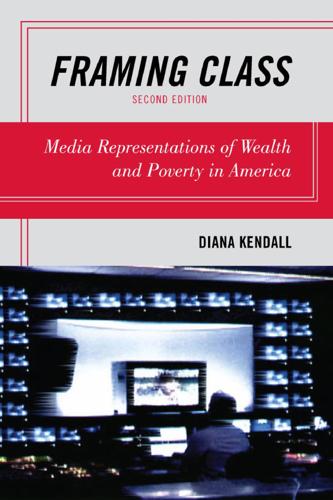
Framing Class: Media Representations of Wealth and Poverty in America
by
Diana Elizabeth Kendall
Published 27 Jul 2005
For example, media sources—ranging from websites to news magazines and daily papers—carry lead stories about very wealthy and well-known people like Bill and Melinda Gates when they give away billions of dollars for such nonelite causes as bringing better health care to the world’s poorest children53 or providing better schools for the disadvantaged in the United States.54 Rather than emphasizing opulent events, these media reports focus on the down-home nature of foundations like the one started by Gates. According to one media report, the Gates Foundation, unlike the posh oldline charities, operates in the bare-bones environment of a refurbished checkprocessing plant that abuts a working dock on Lake Union (in Seattle) and 9781442202238.print.indb 35 2/10/11 10:46 AM 36 Chapter 2 has no imposing nameplate on the building, just a street number.55 Similarly, Paul Allen, who founded the Microsoft Corporation with Bill Gates, announced in 2010 that he will donate half of his estimated $13.5 billion fortune to philanthropy, particularly to benefit the Allen Institute for Brain Science, which is linked to the Paul G.
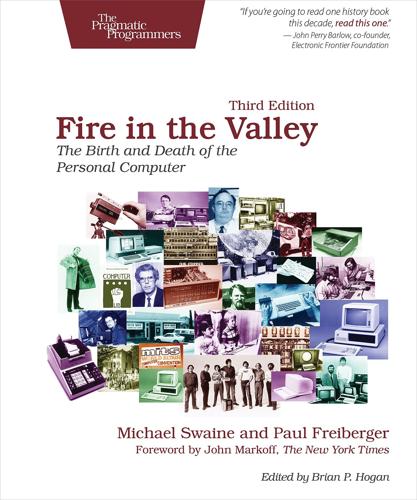
Fire in the Valley: The Birth and Death of the Personal Computer
by
Michael Swaine
and
Paul Freiberger
Published 19 Oct 2014
This new edition covers the development of the post-PC era and the arrival of mobile devices, $2 apps, and their connection to the original vision of the personal computer. It covers the return of Steve Jobs to Apple and the impact he had again, including Apple’s transition to the mobile, connected world. Paul and Mike also track more recent developments, from the emergence of the Internet to post-Gates Microsoft and Bill’s move to the Gates Foundation. Additionally, they chart the rise of the open source software movement and its meaning, impact, and potential, as well as its connection to the ethos of the earlier homebrew era. Finally, they explore the conflict between empowering individuals and loss of privacy, placing us directly in the Snowden Age.

The Euro: How a Common Currency Threatens the Future of Europe
by
Joseph E. Stiglitz
and
Alex Hyde-White
Published 24 Oct 2016
Thus everybody has, in effect, almost full use of his money.8 The Greek-euro would be just like any other currency, with a well-defined value relative to the ordinary euro. Most individuals today have accounts; only the very poor are “unbanked,” and in recent years governments and NGOs, like the Gates Foundation, have been making great efforts to bank the unbanked. The government could quickly create new bank accounts for the few people who remain unbanked. In most countries, government pension payments are now transferred through bank accounts, partly to reduce the risk of stolen checks, partly to reduce the outrageous charges that are sometimes charged by check-cashing services.9 CREDIT: CREATING A BANKING SYSTEM THAT SERVES SOCIETY Earlier in this chapter, we noted the successive changes in monetary arrangements, in the “medium of exchange.”

The Patient Will See You Now: The Future of Medicine Is in Your Hands
by
Eric Topol
Published 6 Jan 2015
FIGURE 14.12: The relentless reduction in the cost of smartphones. Source: Adapted from “The Rise of the Cheap Smartphone,” The Economist, April 3, 2014, http://www.economist.com/node/21600134. This kind of innovation is just another example of what it will take for smartphone medicine to reach all corners of the globe. It takes the Gates Foundation, Vodafone Foundation, Verizon Foundation, the World Health Organization, and countless others to make it happen. And unwittingly, even those with “affluenza” are helping the cause when they get the latest smartphone upgrade. Back to Gutenberg’s press, smartphones are markedly promoting literacy—we’re in the midst of a “reading revolution” in poor countries.75 This will further improve the uptake of health education initiatives.
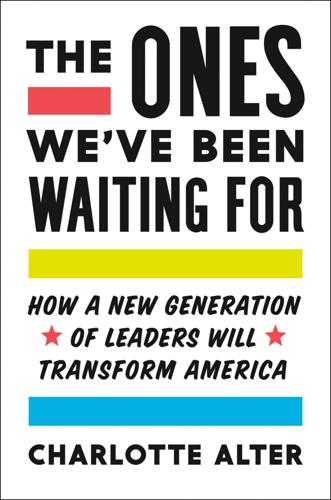
The Ones We've Been Waiting For: How a New Generation of Leaders Will Transform America
by
Charlotte Alter
Published 18 Feb 2020
But Lauren absolutely did not ever want to say the words “vagina” or “rectum” to Senator Barack Obama, so she just stuck to “microbicides” and hoped he didn’t ask her to get more specific. Obama wasn’t particularly chitchatty, but when he did talk he would make eye contact and look straight at Lauren, like she was a person he respected. As they walked to the elevator to go to the Gates Foundation event, they made a little small talk. She remembered that walking next to him was like “sharing the sunshine.” * * * After that first convention speech, Eric went back to Harvard, where he spent most of his time hobnobbing with other young politicos at the Institute of Politics, including Pete and Elise.
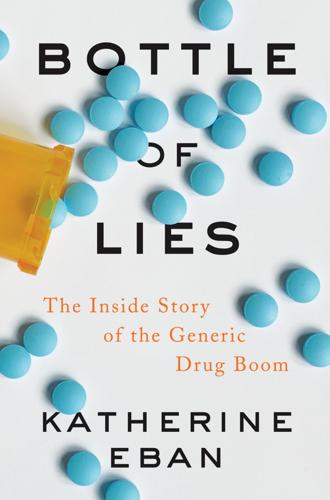
Bottle of Lies: The Inside Story of the Generic Drug Boom
by
Katherine Eban
Published 13 May 2019
But with public fury fixed on ever-rising drug prices, their message—that the nation’s most affordable drugs were compromised—was unwelcome. Thakur persisted. He contacted the nongovernmental organizations that purchased medicine in bulk for the world’s poorest patients: the Clinton Foundation, the Global Fund, the Gates Foundation, Doctors Without Borders. These organizations focused on the cost of medicine and the world’s access to it, but in Thakur’s view did not prioritize issues of quality in their purchasing. Thakur asked for meetings. Most did not respond. One operations officer at the Global Fund replied, and Thakur flew from New Delhi to Geneva at his own expense to meet with him.
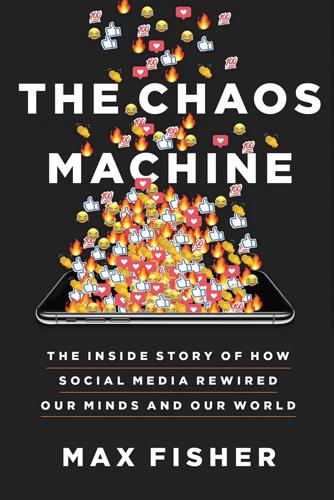
The Chaos Machine: The Inside Story of How Social Media Rewired Our Minds and Our World
by
Max Fisher
Published 5 Sep 2022
Rand, Journal of Personality and Social Psychology 118, no. 1, 2020. 42 it ended Memorial Day 2020: For a comprehensive account of the incident, see “How Two Lives Collided in Central Park, Rattling the Nation,” Sarah Maslin Nir, New York Times, June 14, 2020. 43 “certain dark societal impulses”: “The Bird Watcher, That Incident and His Feelings on the Woman’s Fate,” Sarah Maslin Nir, New York Times, May 27, 2020. 44 The Coopers demonstrated: Of the many reflections on the shift in social mores animated by social media, one that perhaps best captures the ambivalence of that moment: “Karens All the Way Down,” Kat Rosenfield, Arc Digital, May 26, 2020. 45 When two scholars analyzed 300: “Political Rumoring on Twitter During the 2012 US Presidential Election: Rumor Diffusion and Correction,” Jieun Shin et al., New Media & Society 19, no. 8, 2017. Chapter 5: Awakening the Machine 1 “In September 2011, I sent a provocative email”: Measure What Matters: How Google, Bono, and the Gates Foundation Rock the World with OKRS, John Doerr, 2017: 161. 2 “is ten minutes long”: Ibid: 162 3 “begets more advertising”: Ibid. 4 By 2002, spam accounted for 40 percent: “Spam Wars,” Evan I. Schwartz, MIT Technology Review, July 1, 2003. 5 the company credits its algorithm: “The Netflix Recommender System: Algorithms, Business Value, and Innovation,” Carlos A.

Like, Comment, Subscribe: Inside YouTube's Chaotic Rise to World Domination
by
Mark Bergen
Published 5 Sep 2022
GO TO NOTE REFERENCE IN TEXT Wired would write: Joshua Davis, “The Secret World of Lonelygirl,” Wired, December 1, 2006, https://www.wired.com/2006/12/lonelygirl/. GO TO NOTE REFERENCE IN TEXT Chapter 3: Two Kings once told a reporter: Levy, In the Plex, 121. GO TO NOTE REFERENCE IN TEXT explained an early investor: John Doerr, Measure What Matters: How Google, Bono, and the Gates Foundation Rock the World with OKRs (New York: Portfolio, 2018), 6. GO TO NOTE REFERENCE IN TEXT would say her opinion changed: The Try Guys, “Eugene Interviews the CEO of YouTube,” YouTube video, December 16, 2019, 46:15, https://www.youtube.com/watch?v=fKIsuulxJ1I. GO TO NOTE REFERENCE IN TEXT Lucas declined: YouTube made its board offer to George Lucas in 2006, according to Chris Carvalho, then the head of business development for Lucasfilm.

Make Your Own Job: How the Entrepreneurial Work Ethic Exhausted America
by
Erik Baker
Published 13 Jan 2025
See also Davis, Planet of Slums, 183–184. 20Muhammad Yunus, “Credit to the Poor,” Stanford Social Innovation Review 1, no. 2 (2003): 75–76, at 76. 21Muhammad Yunus, Nobel Lecture, Oslo, Norway, December 10, 2006, https://www.nobelprize.org/prizes/peace/2006/yunus/lecture/. 22Muhammad Yunus, “Sacrificing Microcredit for Megaprofits,” New York Times, January 14, 2011. 23Charles Leadbeater, The Rise of the Social Entrepreneur (London: Demos, 1997), 1–2, 23–24. On the subsequent twenty-first-century social entrepreneurship boom, see Linsey McGoey, No Such Thing as a Free Gift: The Gates Foundation and the Price of Philanthropy (London: Verso, 2015). 24Richard M. Harley, “Entrepreneurs Show India That Philanthropy Pays,” Christian Science Monitor, March 15, 1985. 25Jason Haber, “Meet the New Breed of Philanthropists Helping Social Entrepreneurs Succeed,” Entrepreneur, June 30, 2016, https://www.entrepreneur.com/starting-a-business/kickstarters-that-are-helping-social-entrepreneurs-succeed/274859; McGoey, No Such Thing as a Free Gift. 26David L.
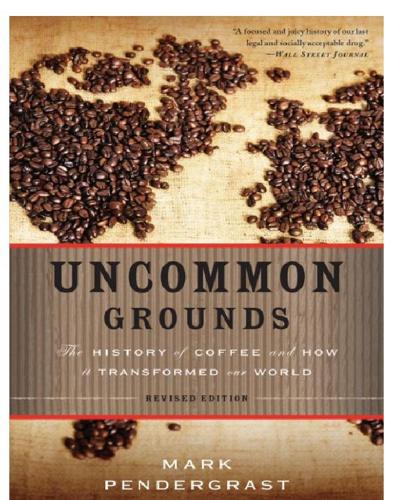
Uncommon Grounds: The History of Coffee and How It Transformed Our World
by
Mark Pendergrast
Published 2 Jan 2000
Projects included microcredit and savings, organic gardening and small animal production, training center development, scholarships, and health awareness programs. Similarly, Vermont-based Grounds for Health set up clinics in coffee-growing regions of Central America to test for and treat cervical cancer, a major problem among women in remote areas. The nonprofit is supported by coffee roasters and consumers. The Gates Foundation, concerned primarily with public health, realized that poor health and poverty were intimately associated with coffee. It gave $47 million in 2007 to help East African coffee farmers improve their beans’ quality. The Café Femenino Foundation began in 2004 with Peruvian women creating their own coffee blend of that name.

The fortune at the bottom of the pyramid
by
C. K. Prahalad
Published 15 Jan 2005
According to Meyer, the ideal Voxiva employee is part McKinsey consultant, part Microsoft engineer, and part Peace Corps volunteer. Voxiva in Peru Voxiva first deployed its technology in Peru to facilitate real-time disease surveillance from rural health workers. The project was funded with a $250,000 grant from the World Bank’s InfoDev program. Officials from the Gates Foundation and the WHO suggested Peru as a good place to pilot the system because the country had established a strong paper-based disease surveillance system in the aftermath of a devastating cholera outbreak in 1991. Voxiva wanted to work with a pilot customer who would actively manage the information collected by the system and use the system to respond to disease outbreaks in real time, a role filled by Peru’s Department of Epidemiology (OGE).

Winning the War on War: The Decline of Armed Conflict Worldwide
by
Joshua S. Goldstein
Published 15 Sep 2011
Similarly, breastfeeding advocacy has resulted in a rise in exclusive breastfeeding rates from 15 to 32 percent in sub-Saharan Africa—strengthening infants’ immune systems and making them less vulnerable to two big killers of children in war, diarrheal diseases and respiratory infections. Thanks to these efforts, recent data show a substantial drop in early childhood deaths globally owing to improved health care. The under-age-five mortality rate declined by more than a quarter from 1990 to 2009, as agencies from UNICEF to the Gates Foundation implemented cost-effective strategies such as promotion of breast-feeding, vaccination against measles, and distribution of antimalarial mosquito netting. In countries at war, refugees and IDPs who leave their homes often end up in refugee camps where the UN and other international and local actors try to help them, albeit usually with inadequate resources.

Safe Food: The Politics of Food Safety
by
Marion Nestle
Published 1 Jan 2010
In the interim, researchers reengineered the rice to contain higher levels of beta-carotene and demonstrated that people who ate it could, as expected, convert beta-carotene to vitamin A. Supporters of Golden Rice continue to complain about the impossible demands of regulators and anti-biotechnology advocates. Advocates continue to argue that GM crops are unnecessary and threaten indigenous food security. The Gates Foundation is now the major funder of GM projects involving nutrient-enriched indigenous crops. Such technological approaches, advocates maintain, are doomed to fail unless they also address the underlying social causes of food insecurity and malnutrition.7 rBGH (Recombinant Bovine Growth Hormone) Milk from cows treated with rBGH has become the flashpoint for concerns about GM foods and a major public incentive to choose organic dairy foods; the USDA’s organic rules expressly forbid use of hormones and GM technology.
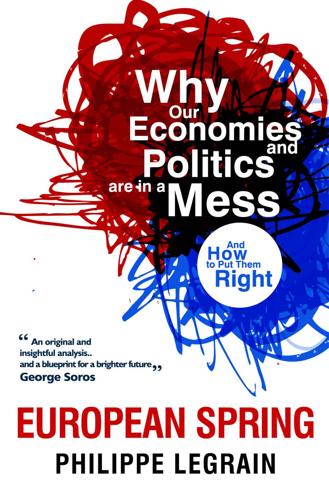
European Spring: Why Our Economies and Politics Are in a Mess - and How to Put Them Right
by
Philippe Legrain
Published 22 Apr 2014
As Andrew Carnegie, a Scottish-American steel magnate, wisely remarked, “The parent who leaves his son enormous wealth generally deadens the talents and energies of the son, and tempts him to lead a less useful and less worthy life than he otherwise would.” His 1889 article proclaiming “The Gospel of Wealth” called on the rich to use their wealth to improve society, and stimulated wave after wave of philanthropy. More recently, Bill Gates has pledged to give most of his fortune from Microsoft to the Gates Foundation, now the world’s largest private philanthropic foundation. This aims to improve healthcare and reduce extreme poverty around the world and expand educational opportunities and access to information technology in America. Warren Buffett, a billionaire investor, has selflessly decided to throw in his billions to a foundation that doesn’t even carry his name.

Connectography: Mapping the Future of Global Civilization
by
Parag Khanna
Published 18 Apr 2016
The Norwegian fish farming leader Marine Harvest, which produces one-third of the world’s farmed salmon, has expanded through mergers and acquisitions into twenty other countries as far as Chile to meet rising demand for fish. While global production and distribution networks are expanding, new technologies such as more efficient photosynthesis could massively boost local crop yields even in inhospitable climates. (The Gates Foundation recently announced that empowering African farmers to achieve food self-sufficiency would be its top priority until 2030.) Aquaponics represents another agricultural revolution: data centers for food. These high-tech greenhouses need neither natural light nor soil and only one-third the water of even organic farming, so they don’t have to be greenhouses at all.
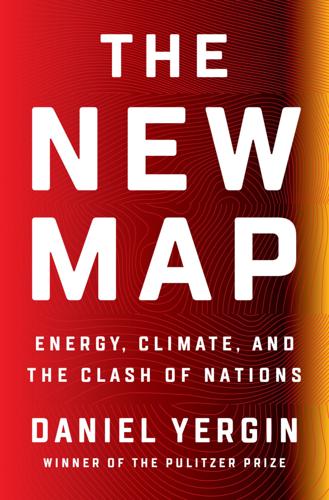
The New Map: Energy, Climate, and the Clash of Nations
by
Daniel Yergin
Published 14 Sep 2020
Chapter 44 BREAKTHROUGH TECHNOLOGIES We don’t have the technologies for advancing the energy transition to net zero carbon,” Ernest Moniz says. What are those technologies that will accelerate and reshape the energy transition? A new study, Advancing the Landscape of Clean Energy Innovation, led by Moniz and myself, conducted for the Gates Foundation and the Breakthrough Energy Coalition, identified twenty-three technologies with “highest breakthrough potential.” They fall into several areas: Storage and battery technology for the intermittency that bedevils large-scale use of wind and solar. Advanced reactors and a new generation of small reactors that would revitalize carbon-free nuclear power.
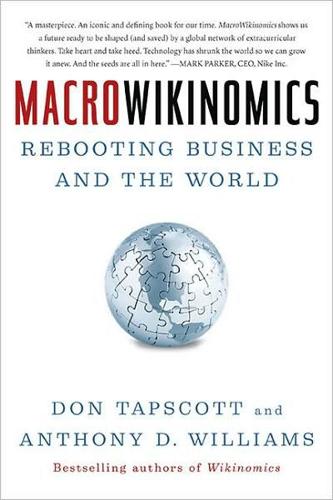
MacroWikinomics: Rebooting Business and the World
by
Don Tapscott
and
Anthony D. Williams
Published 28 Sep 2010
The Global Water Challenge and Ashoka Changemakers have created an online competition to bring together experts and entrepreneurs to innovate ways to solve the water access and sanitation crisis. Online communities like Hyperlocavore and Landshare have popped up in the United States and United Kingdom to redesign our food practices along the new model. In a similar vein, the U.S.-based design firm IDEO is partnering with Acumen Fund and the Gates Foundation to redesign water distribution and sanitation in India and Africa. Called the “human centered” design process, it engages the public in the process of designing solutions.23 One innovation, the Aquaduct Concept Bicycle, transports and sanitizes water at the same time through a pedal-powered filtration system.

The Billionaire's Apprentice: The Rise of the Indian-American Elite and the Fall of the Galleon Hedge Fund
by
Anita Raghavan
Published 4 Jun 2013
A few days before, Gupta took a leave of absence from his own private equity fund, New Silk Route: Saijel Kishan and Cristina Alesci, “Gupta Takes Leave from New Silk Route Amid SEC Charges,” Bloomberg, March 10, 2011. Stepped down as adviser to the Bill and Melinda Gates Foundation: Andrew Jack, “Gupta Resigns from Gates Foundation,” Financial Times, March 27, 2011, quotes a statement of the Gates Foundation saying that “Rajat has stepped down from his role on the Foundation’s Global Development advisory panel until these matters are resolved.” “You wrote here it was going to be tricky”: US v. Rajaratnam, John Dowd’s cross-examination of Kumar, March 15, 2011. Presence of Bharara, Sorkin at Blankfein testimony: Packer, “A Dirty Business.”

The World's Banker: A Story of Failed States, Financial Crises, and the Wealth and Poverty of Nations
by
Sebastian Mallaby
Published 24 Apr 2006
Mike Merson, the former head of the Global AIDS program at WHO and a fierce critic of the world’s failed response to AIDS, regards the Bank’s effort in Russia as a triumph, given the local resistance to action that the Bank encountered. Merson interview, November 12, 2003. It’s also worth noting that other donors also found fast progress elusive. In Botswana, for example, a high-profile coalition involving the Gates Foundation and the Harvard AIDS Foundation set out to see what could be accomplished in a small and efficient country with plenty of political commitment to fighting AIDS; in 2003, three years after the effort’s announcement, less than 8 percent of the population knew whether or not it had the virus and just nine thousand patients had entered the government’s antiretroviral programs—more than were being treated in any other African nation, but still a fraction of Botswana’s estimated 350,000 cases.
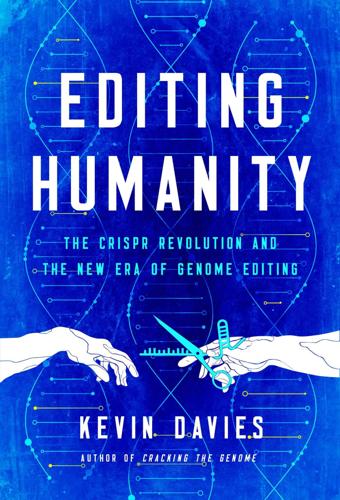
Editing Humanity: The CRISPR Revolution and the New Era of Genome Editing
by
Kevin Davies
Published 5 Oct 2020
The tickets were a gift from New England Patriots star Devin McCourty, who has a relative with SCD. Early success stories like these from medical centers in Boston or Stanford or the NIH are wonderful, but have little relevance for the millions of sufferers in Africa, where the impact of SCD is felt the hardest. In October 2019, the NIH and the Gates Foundation announced a $200 million program over four years to produce affordable therapies for patients in Africa. The goal, Collins says, is “to make sure everybody, everywhere has the opportunity to be cured, not just those in high-income countries.” But he readily admits: “This is a bold goal.”26 * * * In her final year at college, Shani Cohen gave birth to her first child, a beautiful baby girl named Eliana (“God has answered me” in Hebrew).
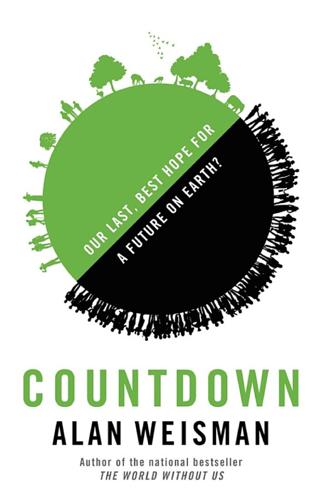
Countdown: Our Last, Best Hope for a Future on Earth?
by
Alan Weisman
Published 23 Sep 2013
But for everywhere else, they had rich data from 1960 to 2010: the fifty-year period that encompassed the entire Green Revolution to the present, which tracked the amount of land, water, fertilizer, and chemicals used to grow 175 different crops. Suddenly they were getting calls from Google, the Gates Foundation, the World Bank, even from hedge fund managers, saying this was a gold mine of data. “Which they make available in the public domain,” says Gretchen, “giving it away as fast as they can.” Imbuing graphic landscape overlays with Foley’s golden data and housing it on Google with its massive distribution power makes InVest one of the most potent environmental planning tools in existence.

The Code Breaker: Jennifer Doudna, Gene Editing, and the Future of the Human Race
by
Walter Isaacson
Published 9 Mar 2021
When she arrived back at Berkeley, she convened a series of meetings of her team to discuss how to make wide access to sickle-cell treatments a new core part of their mission.5 The public-private partnership that led to the availability of the polio vaccine became an inspiration. She reached out to the Gates Foundation and the National Institutes of Health, which announced a partnership for a Cure Sickle Cell Initiative funded with $200 million.6 The primary scientific goal of the initiative is to find a method to edit the sickle-cell mutation inside of a patient without needing to extract bone marrow. One possibility is to inject into the patient’s blood a gene-editing molecule with an address label that directs it right to the cells in the bone marrow.
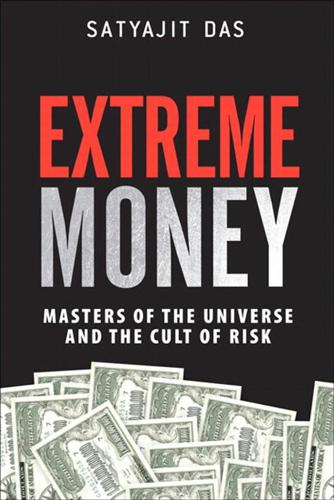
Extreme Money: Masters of the Universe and the Cult of Risk
by
Satyajit Das
Published 14 Oct 2011
Berkshire Hathaway’s dual class share arrangement gives Buffett voting control, whilst owning 34 percent of the equity. Until a decade ago, Berkshire Hathaway’s seven person board of directors consisted of mainly insiders such as Buffett’s son. The new “independent” directors include Bill Gates, a close friend of Buffett and his regular bridge partner as well as co-investor in the Gates Foundation. Critics also pointed to the fact that Buffett’s partner Charlie Munger’s family owned a 3 percent stake in BYD, the Chinese electric battery maker, before Bershire bought a stake in 2008. Nothing anaesthetizes, it seems, better than financial self-interest. Ambrose Bierce, the American writer, described hypocrisy as “prejudice with a halo.”

Aftershocks: Pandemic Politics and the End of the Old International Order
by
Colin Kahl
and
Thomas Wright
Published 23 Aug 2021
America was entirely absent from any attempt to craft a strategic approach to the pandemic. Nevertheless, Johnson persisted and backed Macron’s push for a G7 summit, which he hoped would spur the world’s major powers to action. He wanted them to collectively engage with Gavi, the Vaccine Alliance, a public-private global health partnership funded in part by the Gates Foundation, and COVAX, the COVID-19 Vaccines Global Access initiative created in response to the pandemic. The British prime minister was also eager to coordinate effectively on the economic recovery and on assistance to the developing world, which was being hammered by the pandemic and the global economic shutdown.

The Code: Silicon Valley and the Remaking of America
by
Margaret O'Mara
Published 8 Jul 2019
Their company helped its clients map Brazilian rainforests, track polio outbreaks in Somalia, and monitor crop outputs in Nigeria and Rwanda. They didn’t have venture funding; operations were lean and revenue came from customers. “I wanted a business model I could explain to my parents,” said Anokwa. The Gates Foundation was an important client and supporter, the irony of which was not lost on Martin, who once had been so much of an open-source disciple that a photo of Bill Gates getting a pie thrown in his face hung in her middle school locker. The couple were both in their thirties and already had lived through several generations of technological change.
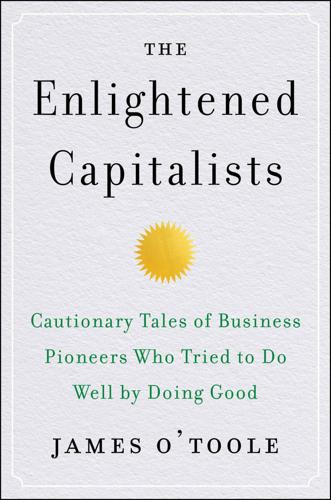
The Enlightened Capitalists
by
James O'Toole
Published 29 Dec 2018
By that same logic, the most virtuous twentieth-century business leaders could be said to have been philanthropists in the mold of Carnegie, Rockefeller, Ford, and Gates, whose careers were devoted to amassing great wealth and not to solving social problems by way of enlightened business practices. In other words, the Gates Foundation could be said to do more good for the world than Microsoft might have done under Gates’s leadership if, to address social problems, he had diverted his attention from the company’s economic and technological functions. Oracle’s chairman Larry Ellison goes further, arguing that “the Ford Motor Company did more good than the Ford Foundation” by providing jobs, tax revenues, and mobility to millions.21 And even the likes of Thomas Edison and Steve Jobs—who evidenced not only little to no interest in addressing social problems during their business careers, but also no desire to engage in philanthropy—are said by some to have made greater social contributions through their technological innovations than they could have made through any acts of social engagement.

The Wealth of Networks: How Social Production Transforms Markets and Freedom
by
Yochai Benkler
Published 14 May 2006
This is because, unless universities themselves undertake the development process, the patent-based pharmaceuticals have no reason to. The "simple" answer to this problem is more funding from the public sector or foundations for both basic research and development. This avenue has made some progress, and some foundations--particularly, in recent years, the Gates Foundation--have invested enormous amounts of money in searching for cures and improving basic public-health conditions of disease in Africa and elsewhere in the developing world. It has received a particularly interesting boost since 2000, with the founding of the Institute for One World Health, a nonprofit pharmaceutical dedicated to research and development specifically into developing-world diseases.
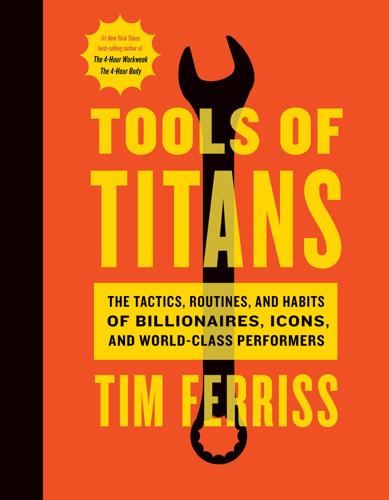
Tools of Titans: The Tactics, Routines, and Habits of Billionaires, Icons, and World-Class Performers
by
Timothy Ferriss
Published 6 Dec 2016
Kelly, Kevin: “‘You are only as young as the last time you changed your mind.’—Timothy Leary.” Koppelman, Brian: “‘Calculate less.’” Libin, Phil: “So just imagine it’s me with a big glass of whiskey. And the caption will say, ‘Evernote helps you remember. Suntory helps you forget.’” MacAskill, Will: “It would be outside the Gates Foundation, or maybe outside Bill Gates’s house . . . where ultimately, he’s going to donate $100 billion. And it would say, ‘Bill, you have spoken about the risks and potential upside in the long run from development of artificial general intelligence, yet you’re not doing anything about it yet. You haven’t gotten involved.’”
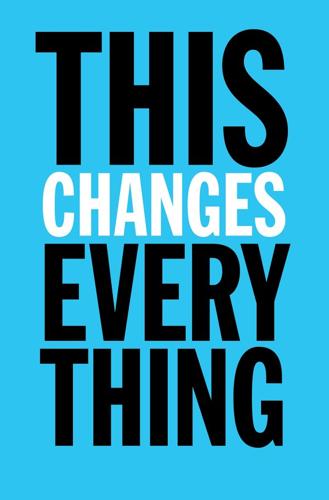
This Changes Everything: Capitalism vs. The Climate
by
Naomi Klein
Published 15 Sep 2014
At the very least, they demonstrate that seeing the risks climate change poses to financial markets in the long term may not be enough to curtail the temptation to profit from planet destabilization in the short-term.20 Bill Gates has a similar firewall between mouth and money. Though he professes great concern about climate change, the Gates Foundation had at least $1.2 billion invested in just two oil giants, BP and ExxonMobil, as of December 2013, and those are only the beginning of his fossil fuel holdings.21 Gates’s approach to the climate crisis, meanwhile, shares a fair amount with Branson’s. When Gates had his climate change epiphany, he too immediately raced to the prospect of a silver-bullet techno-fix in the future, without pausing to consider viable—if economically challenging—responses in the here and now.